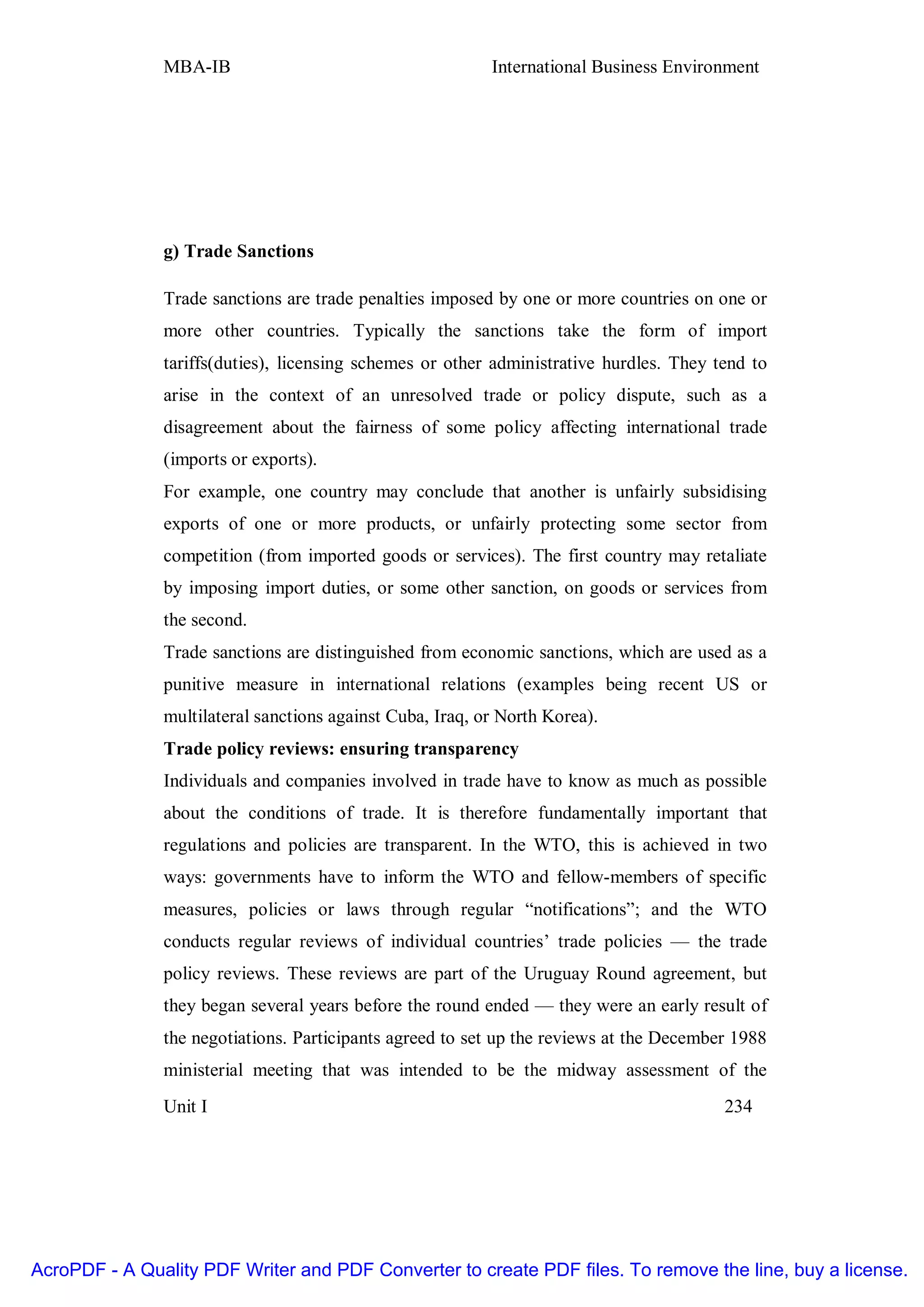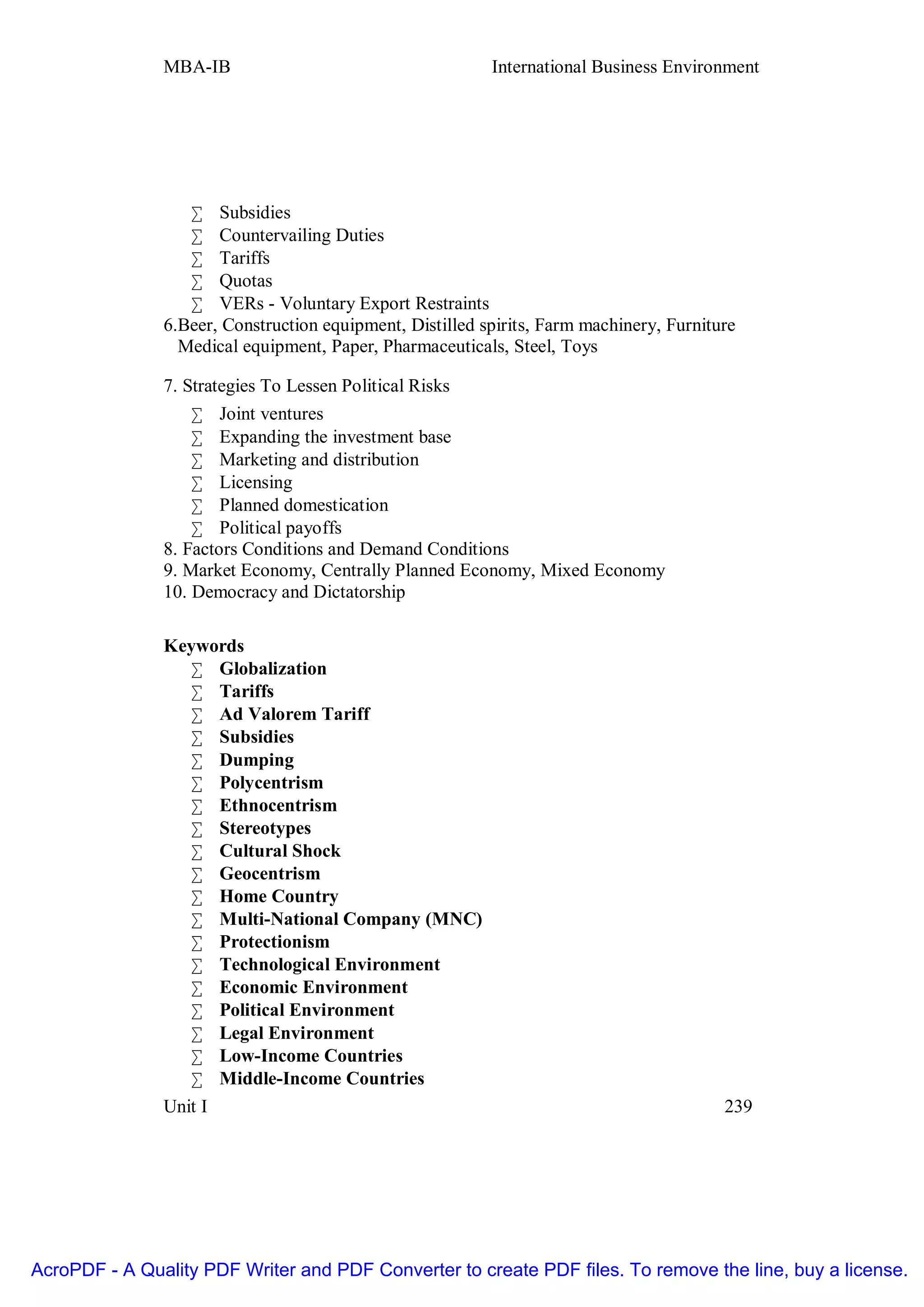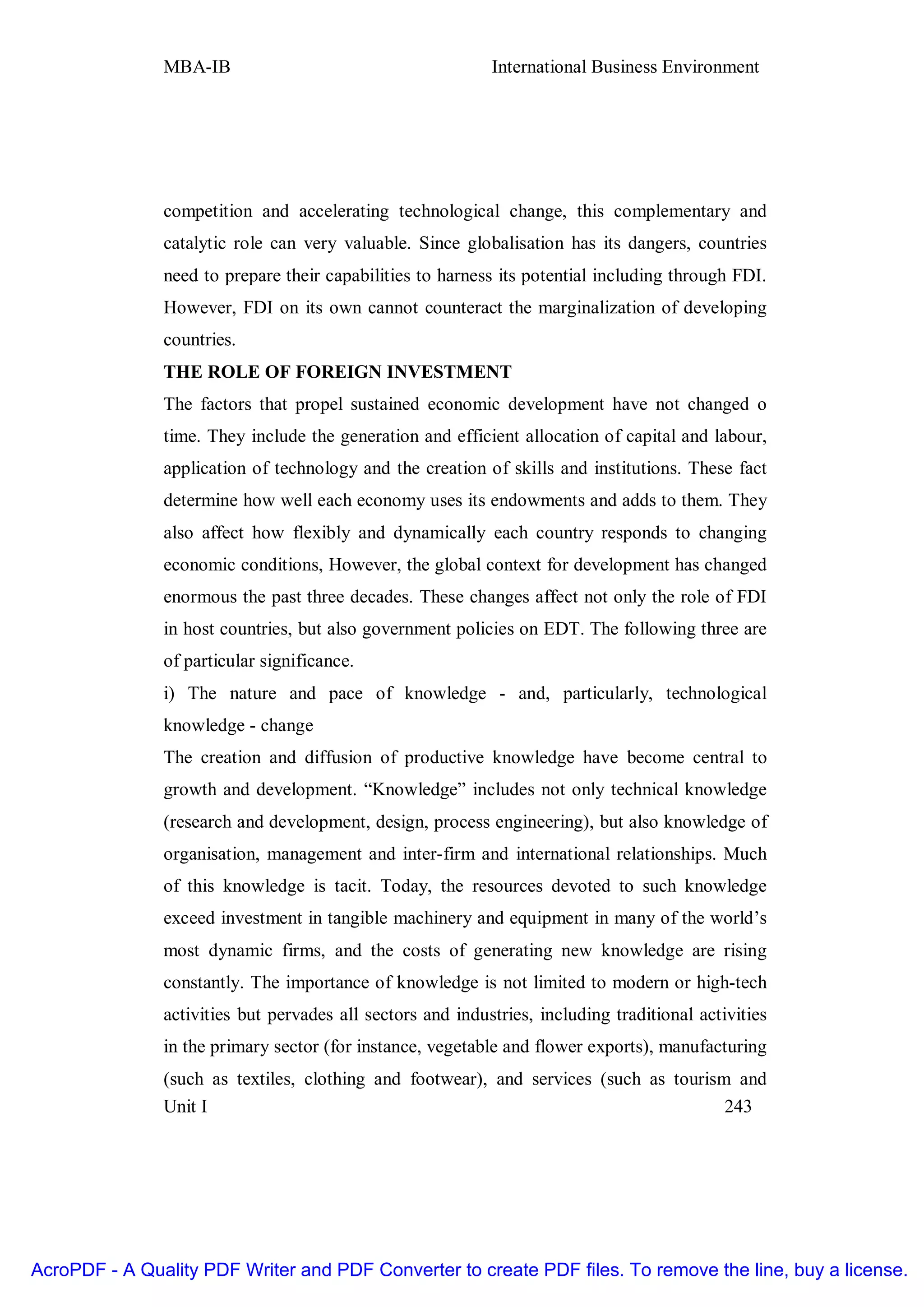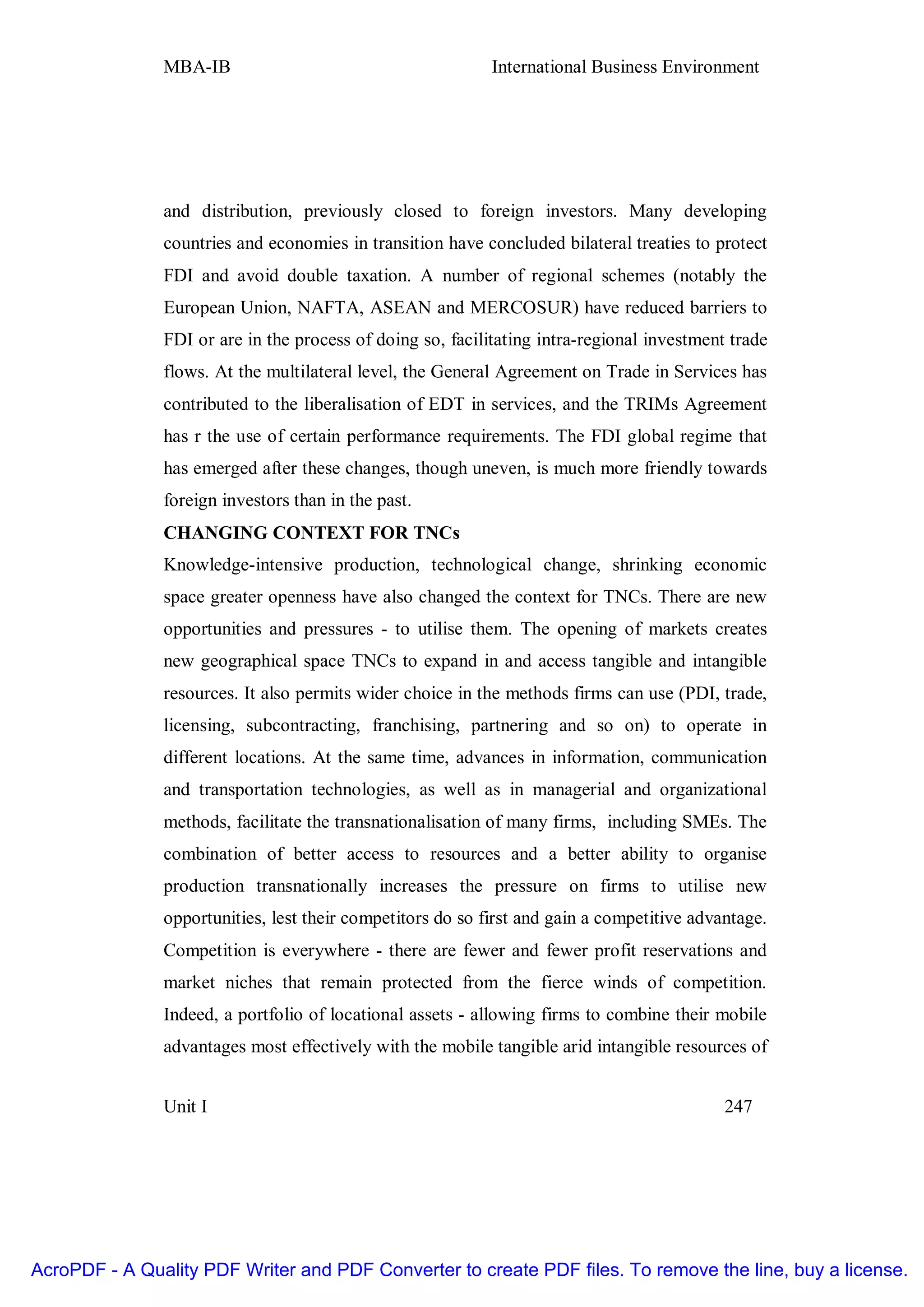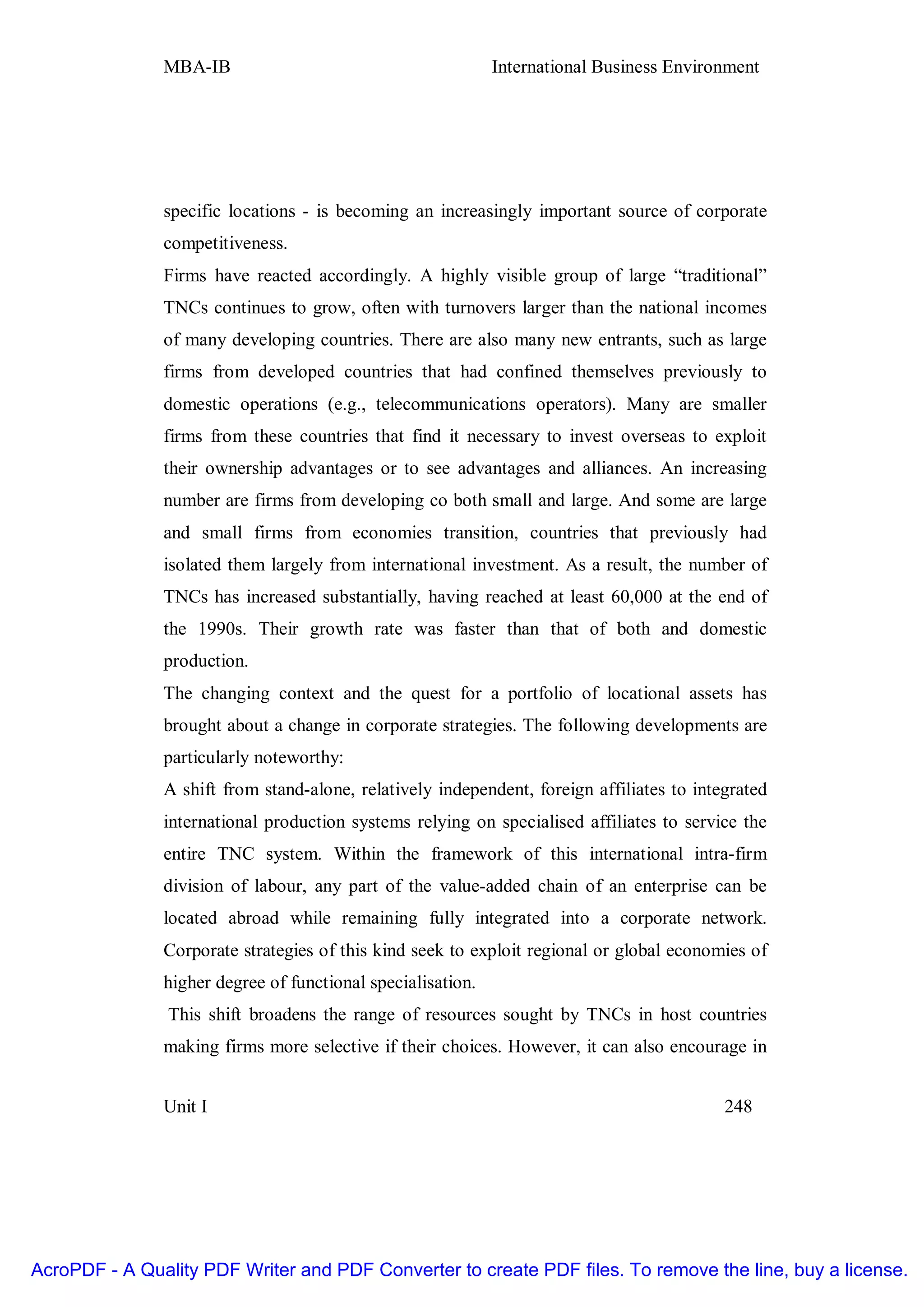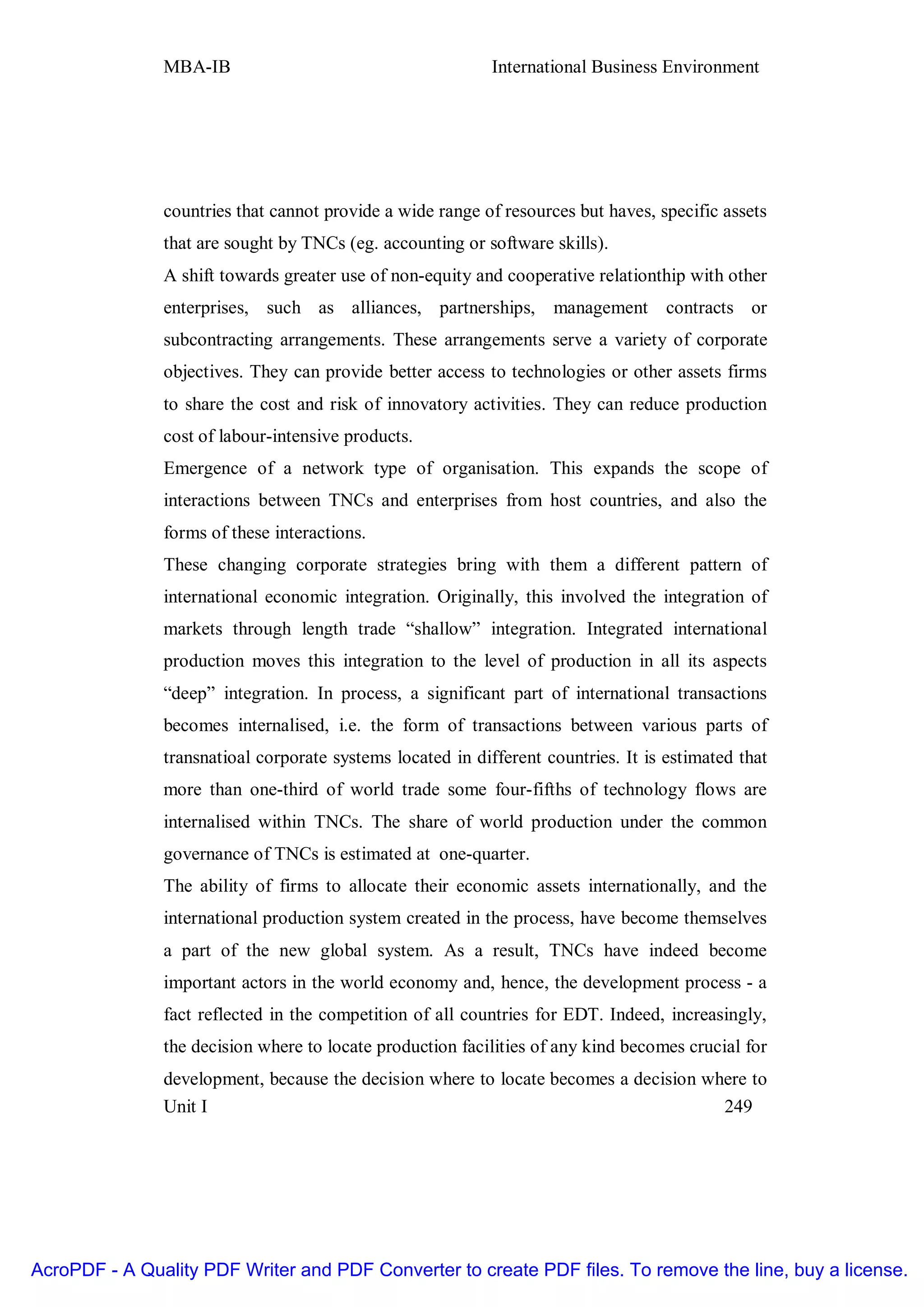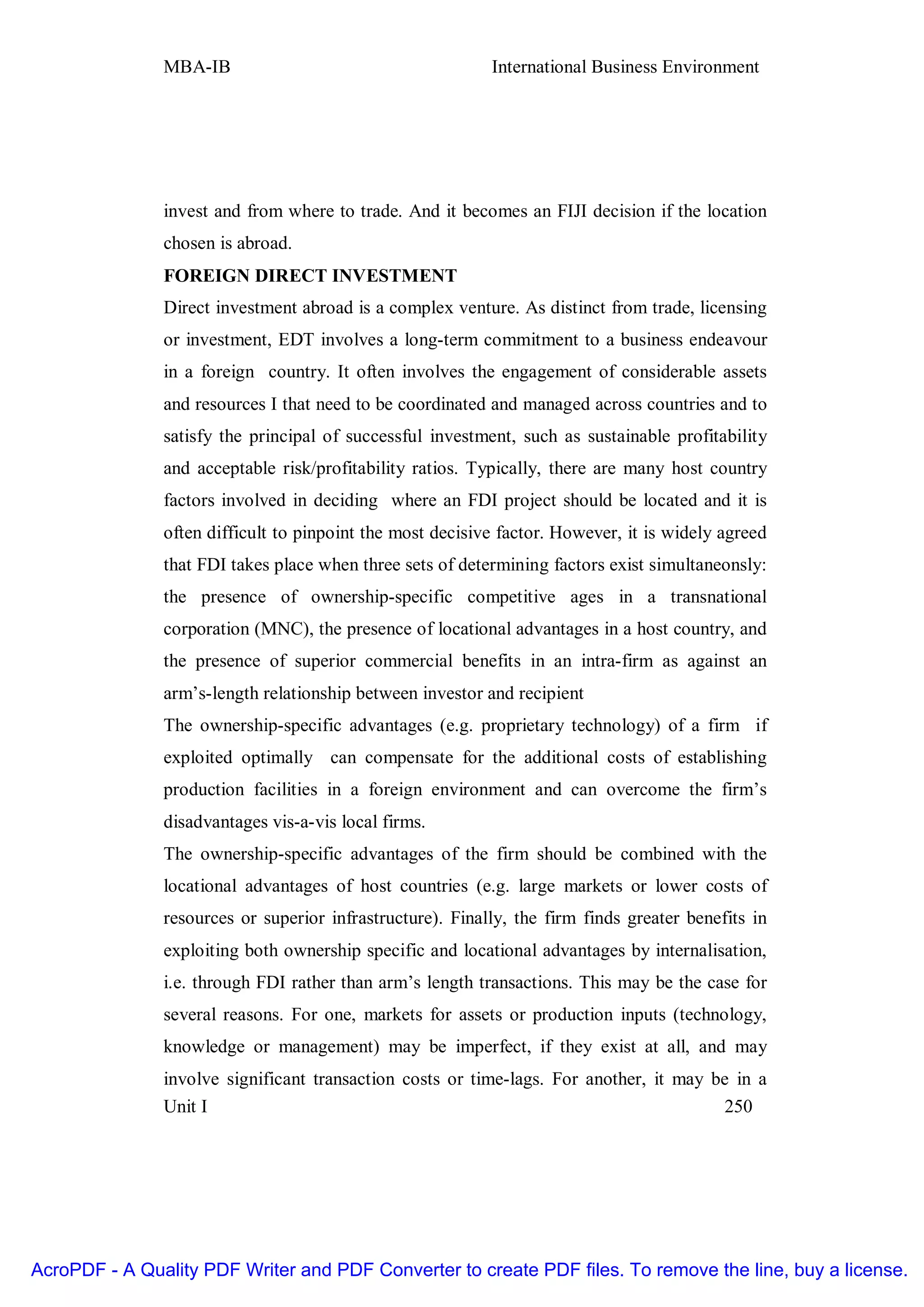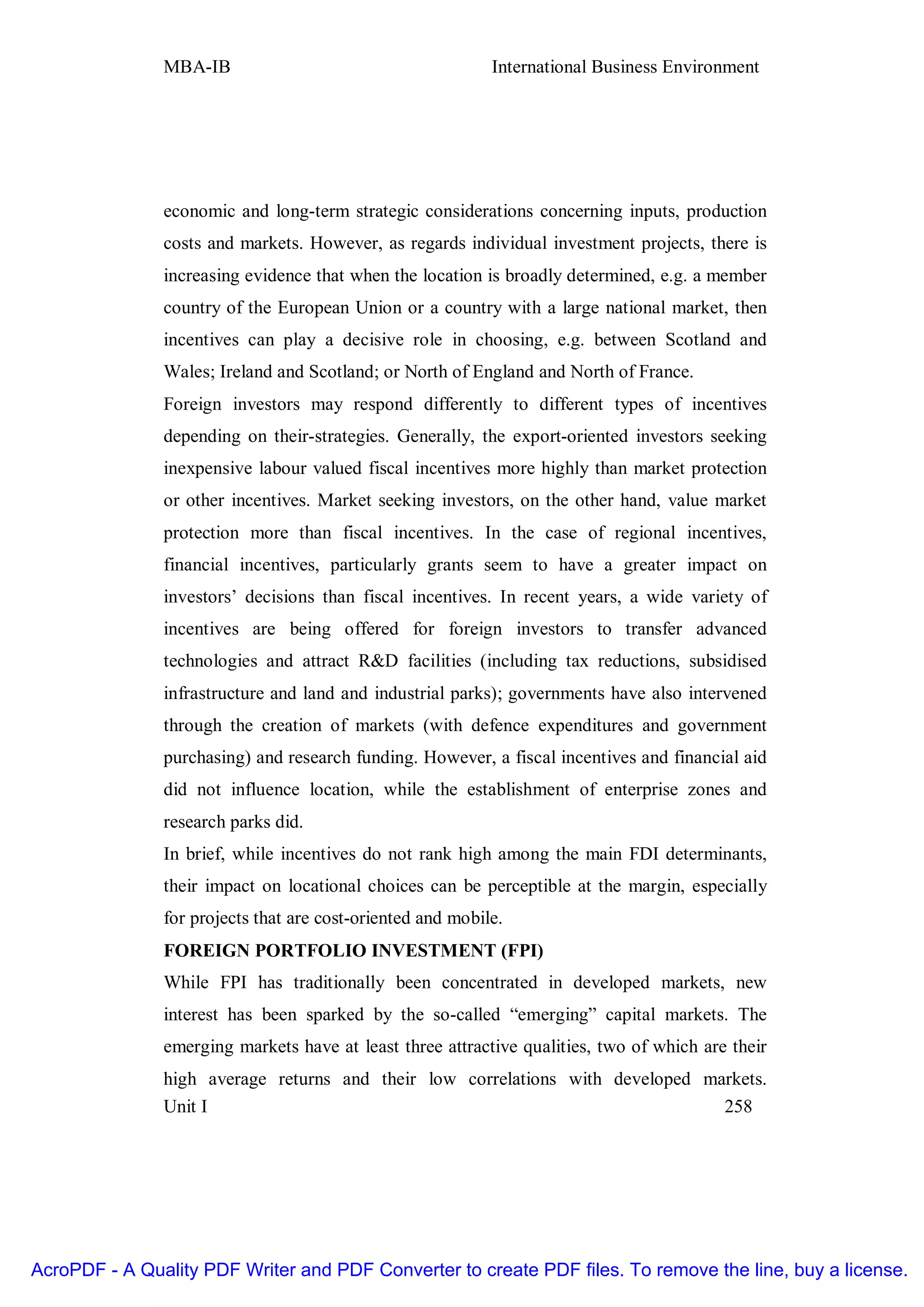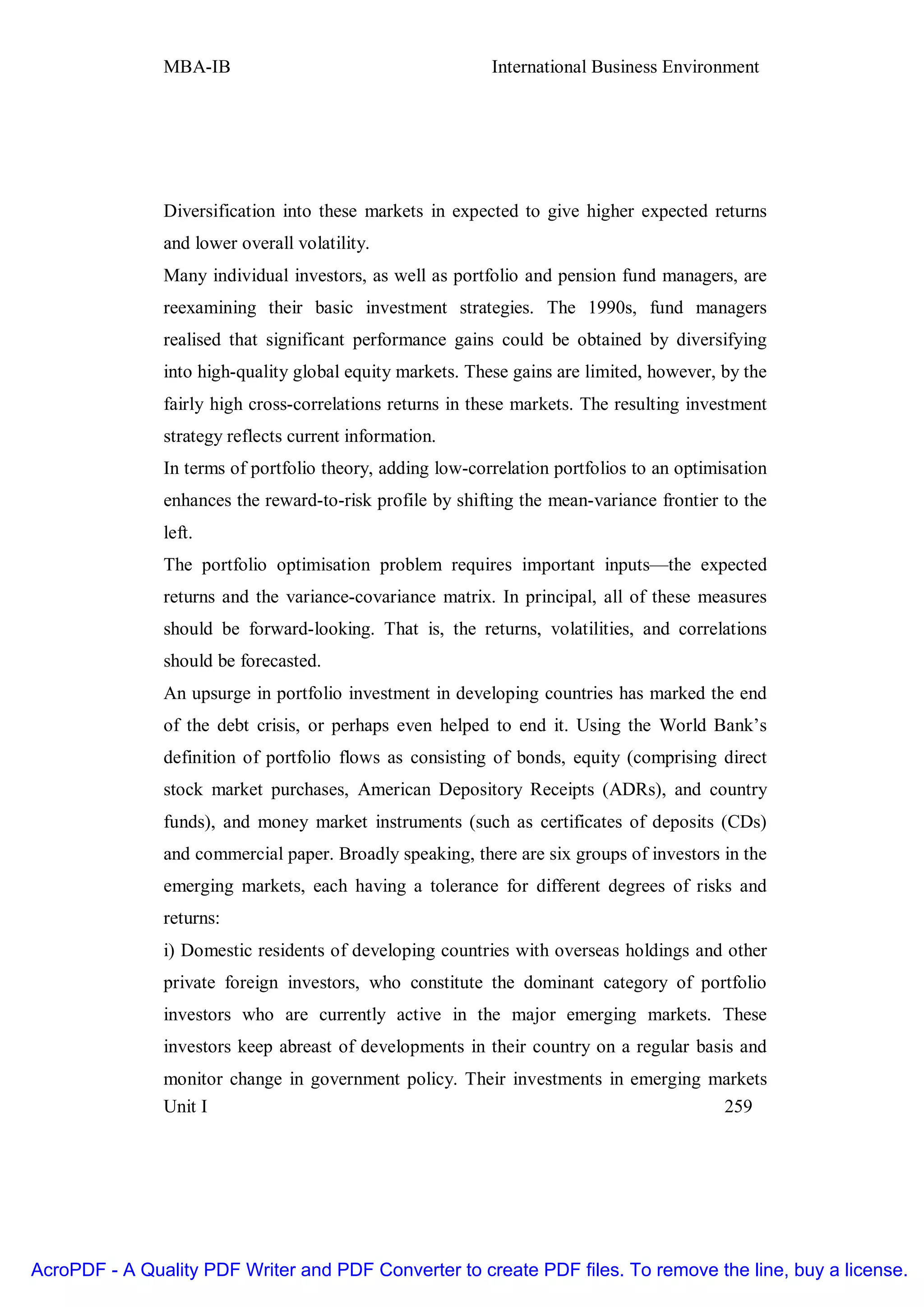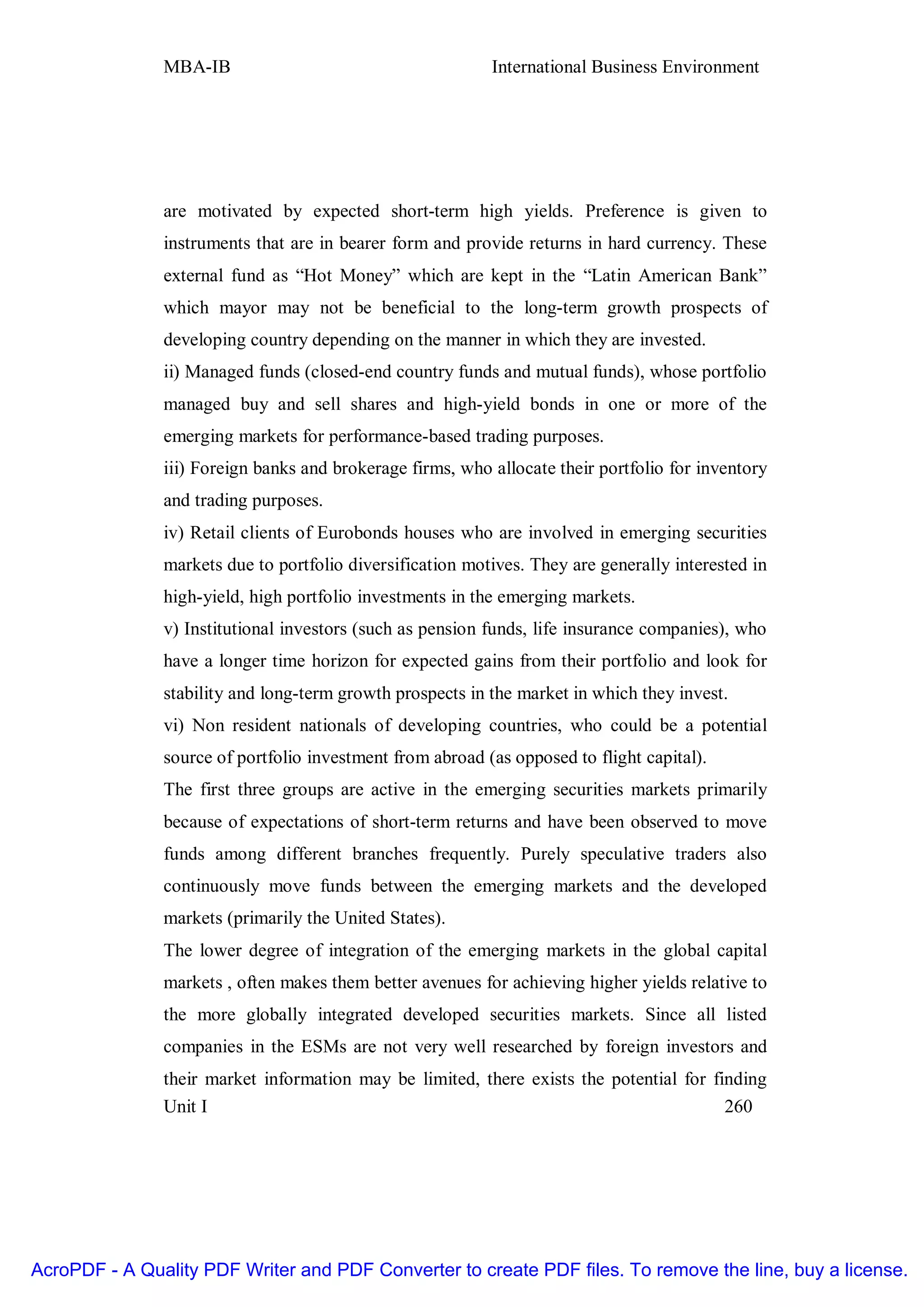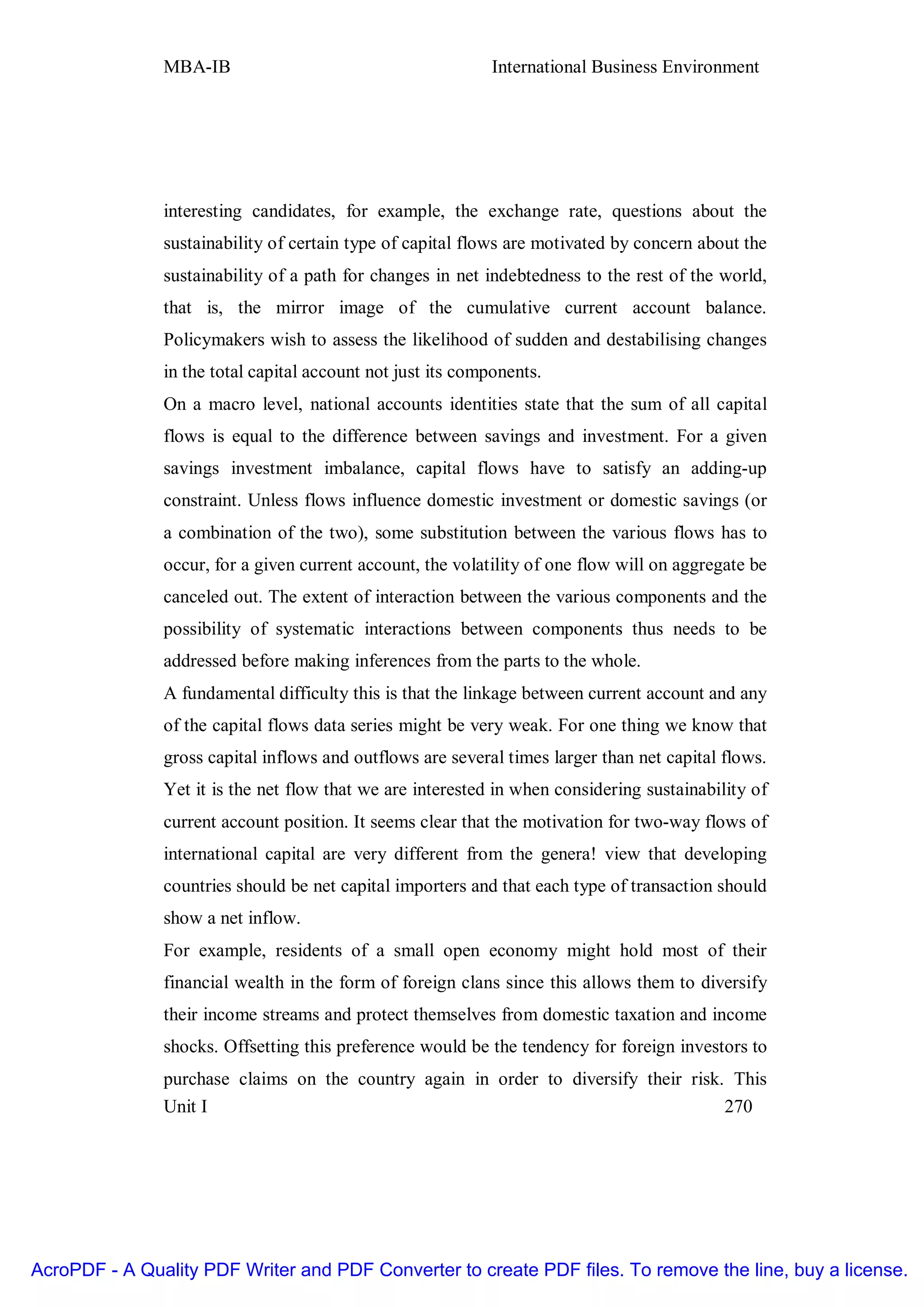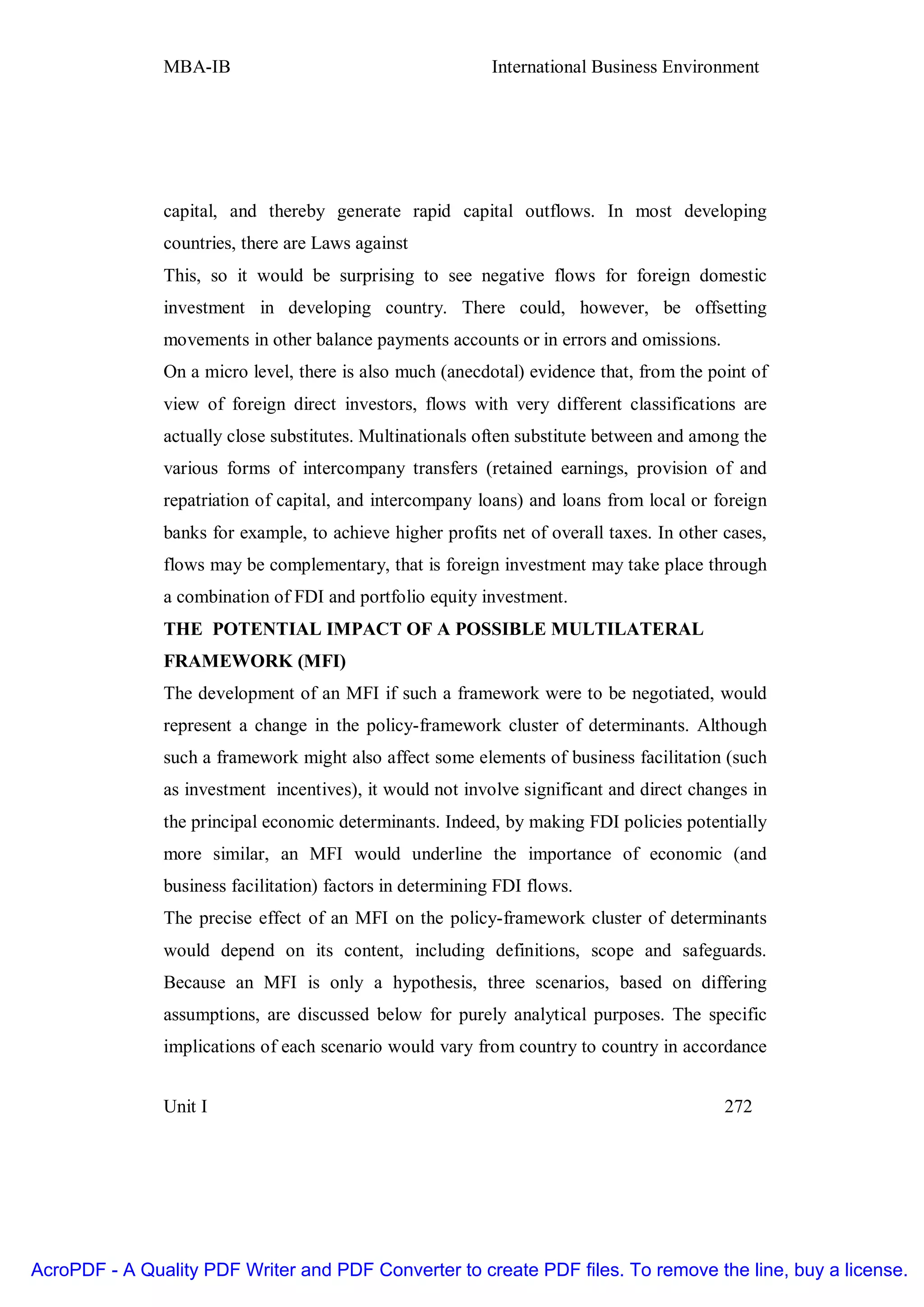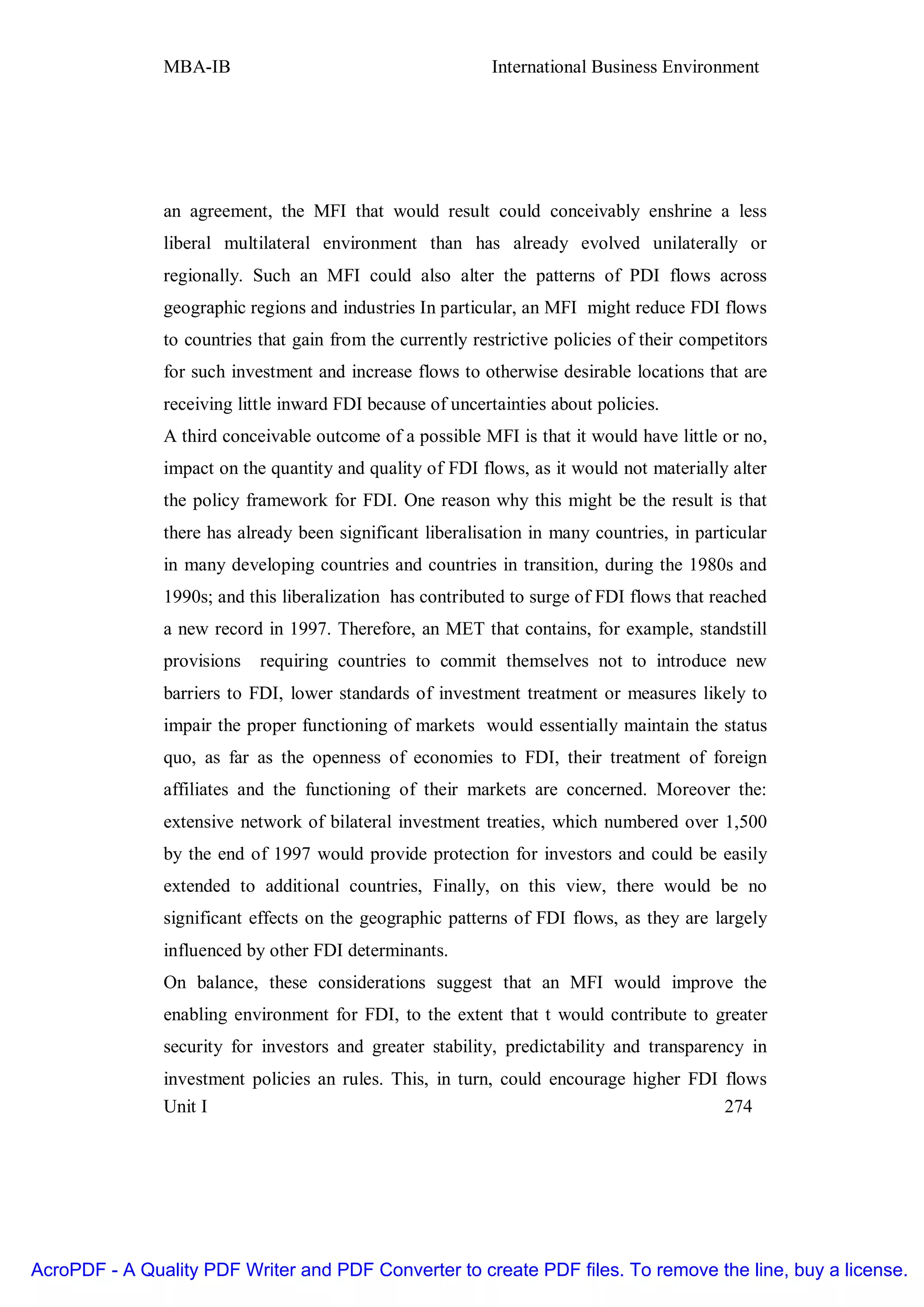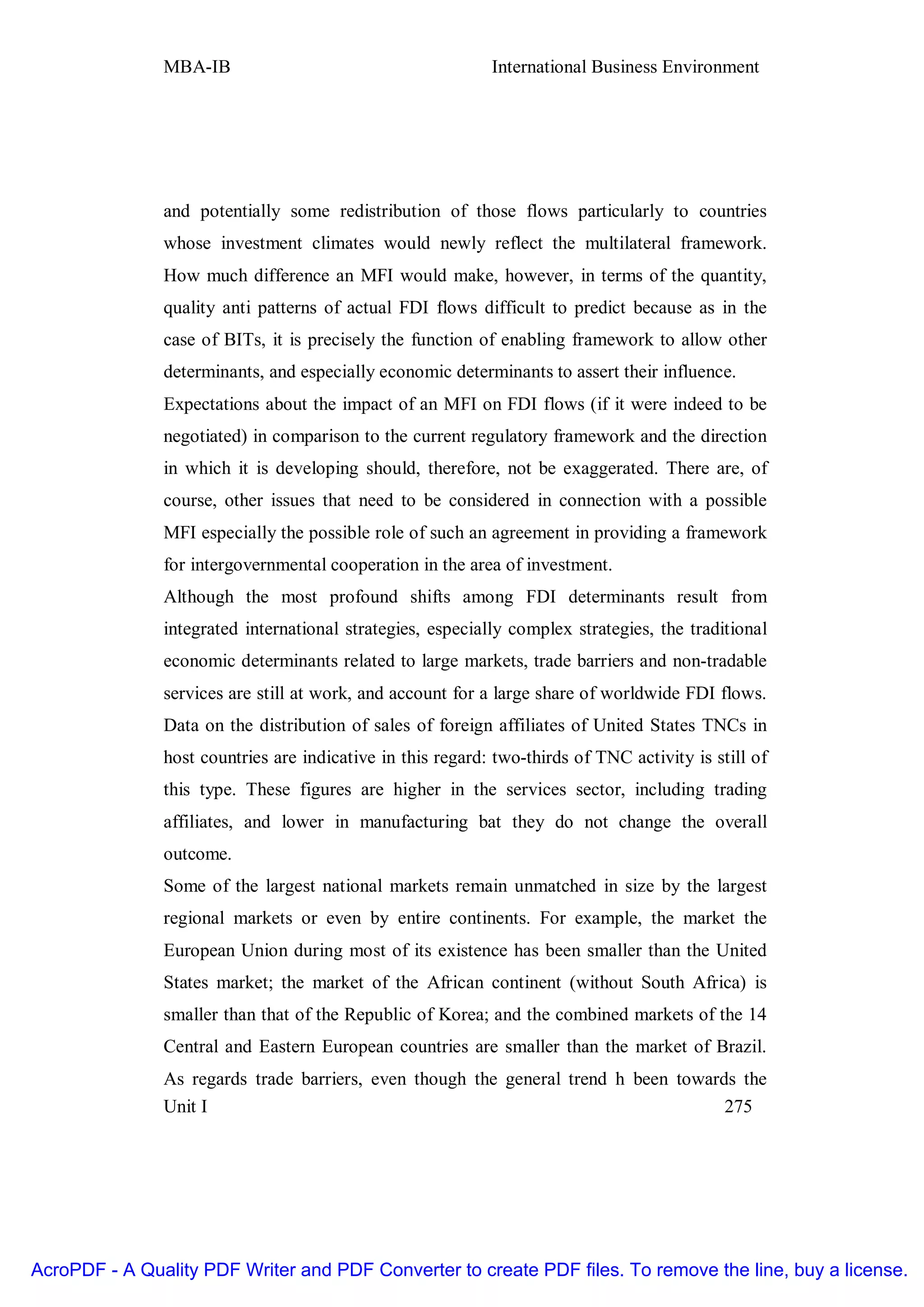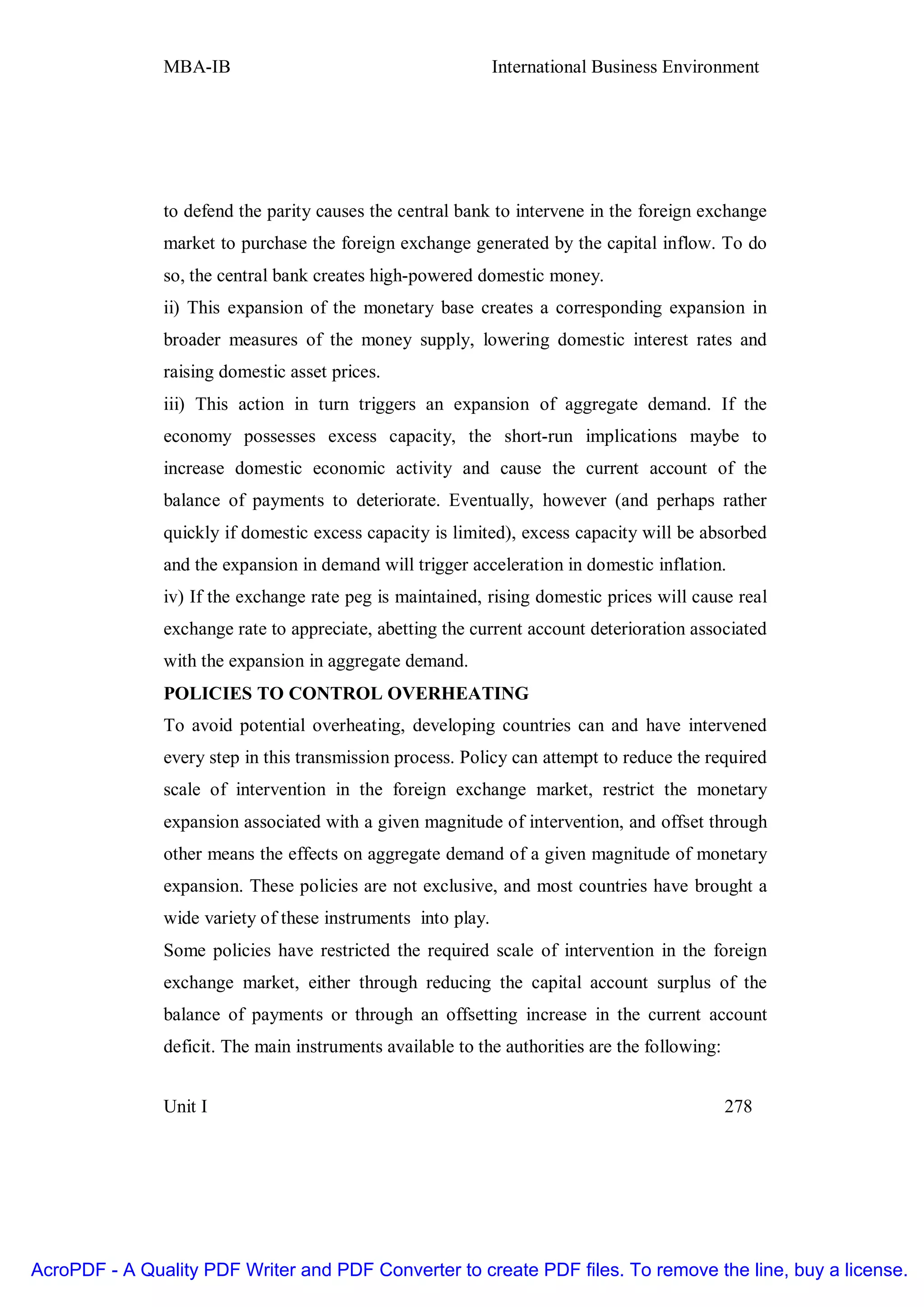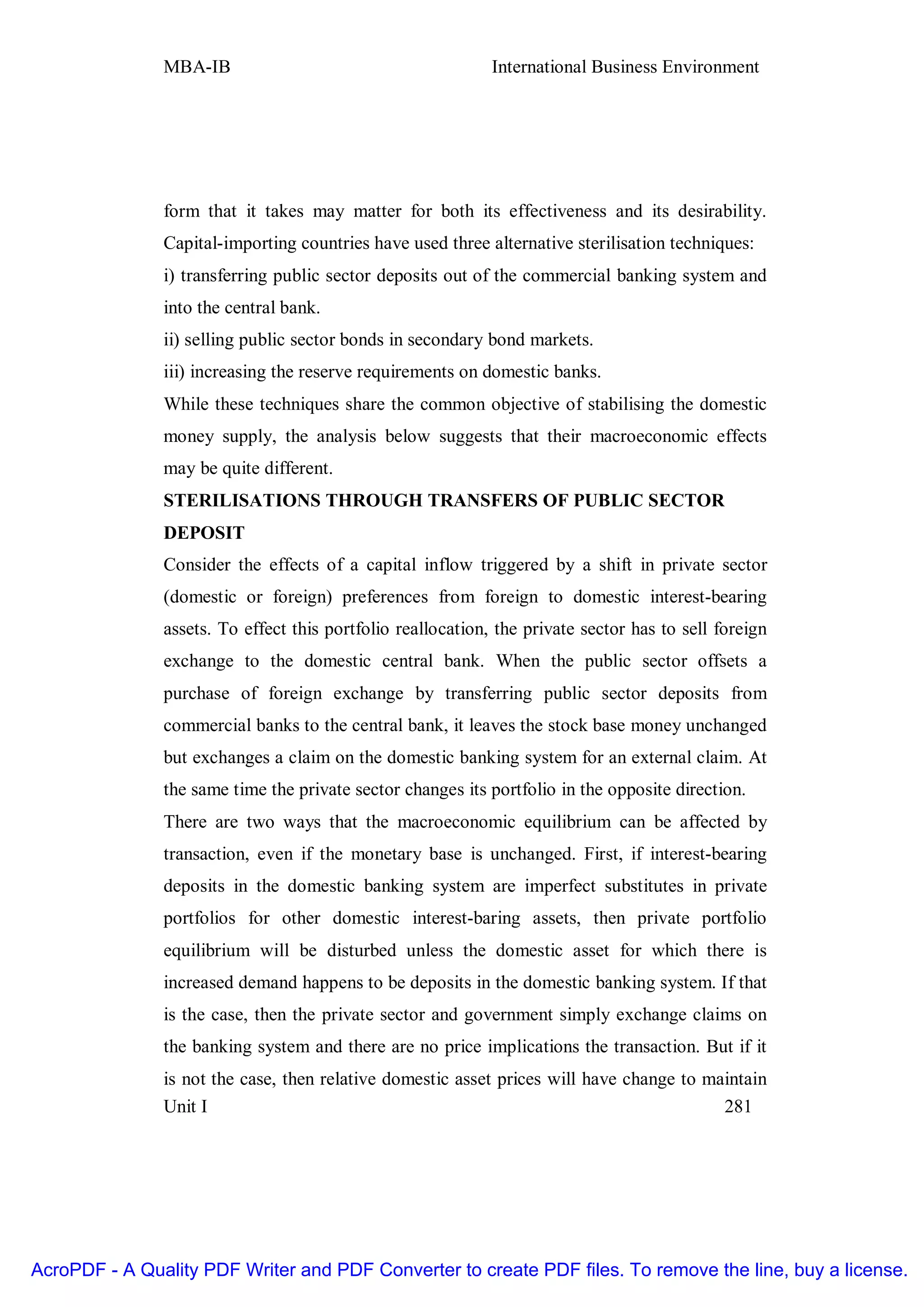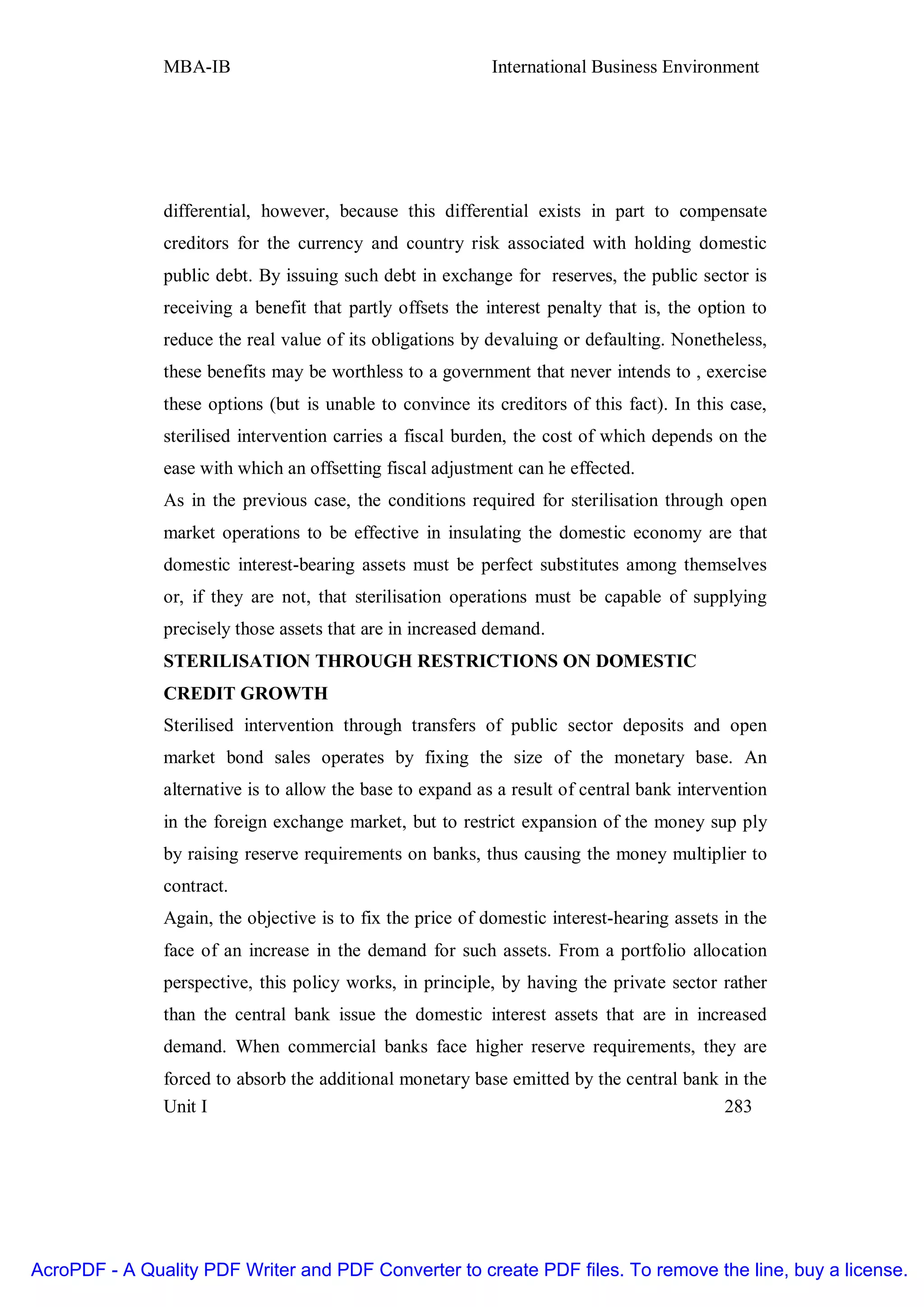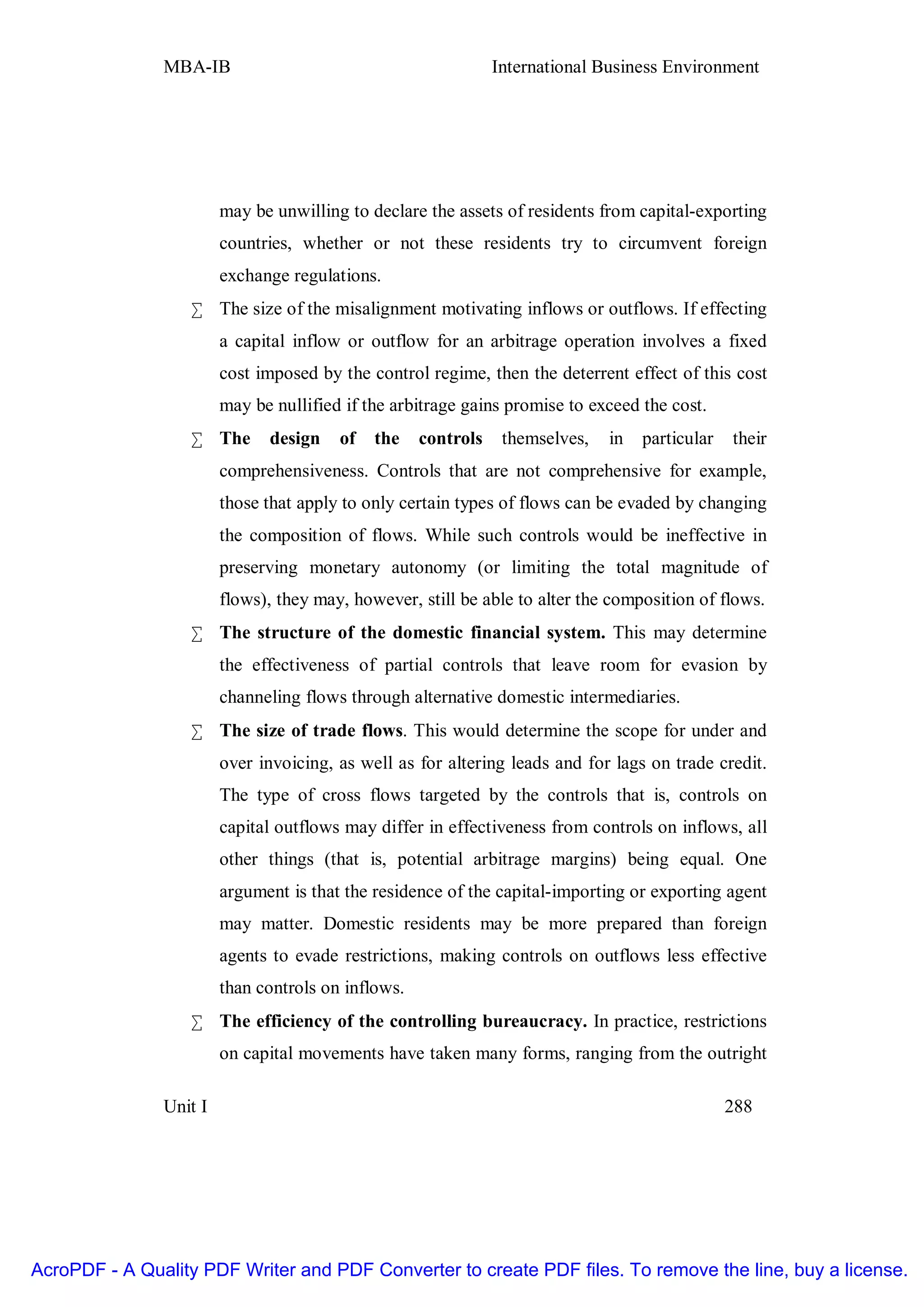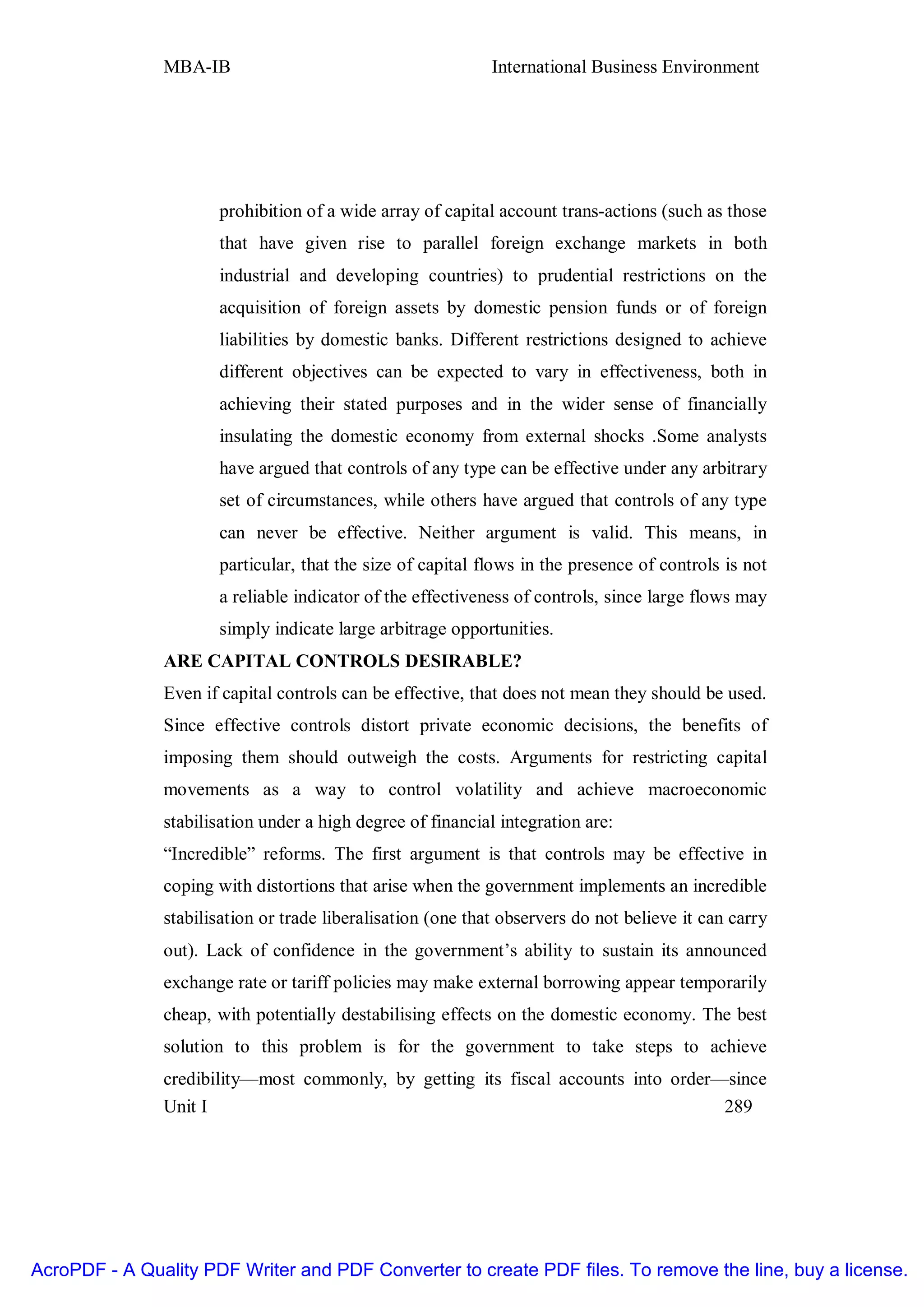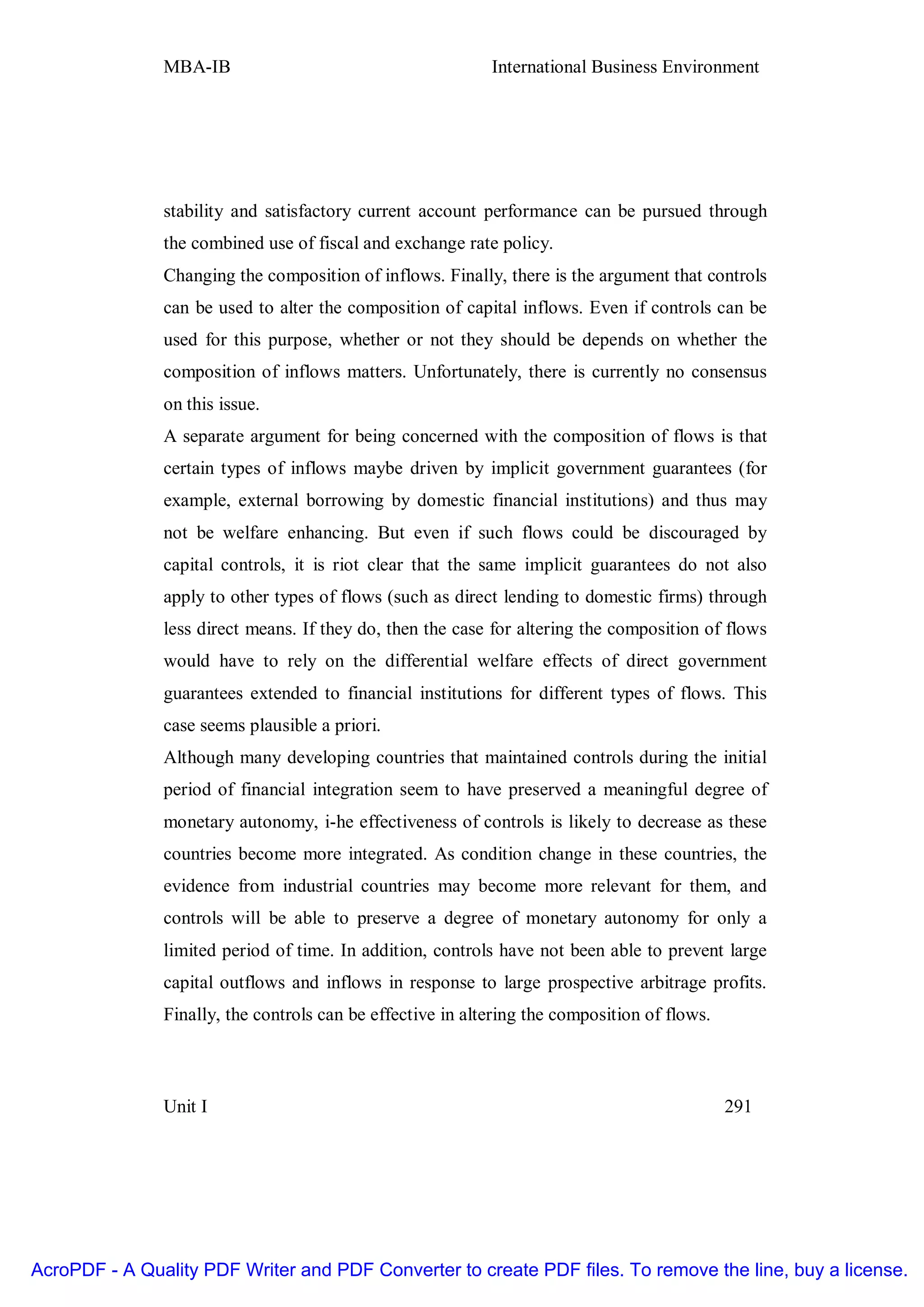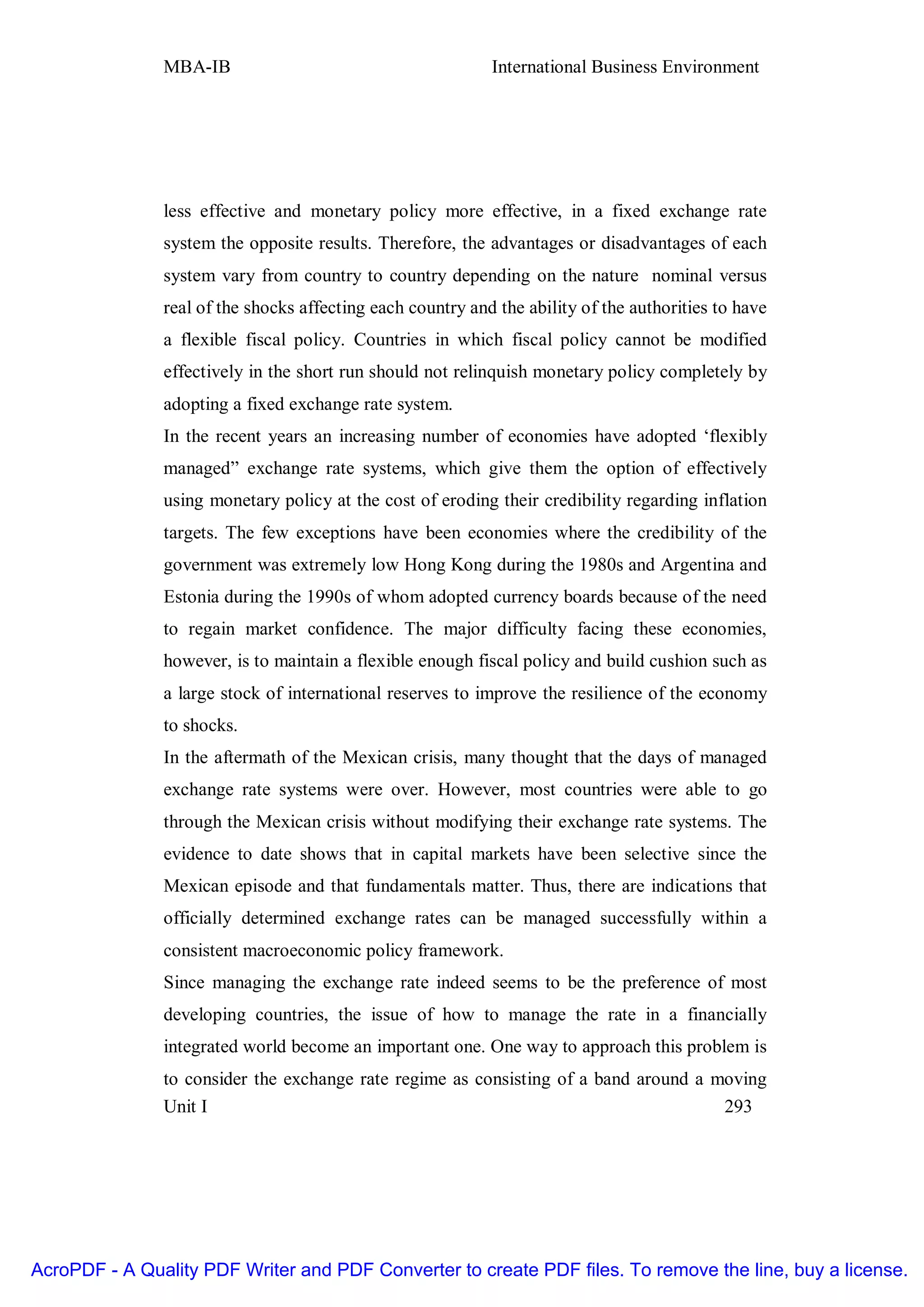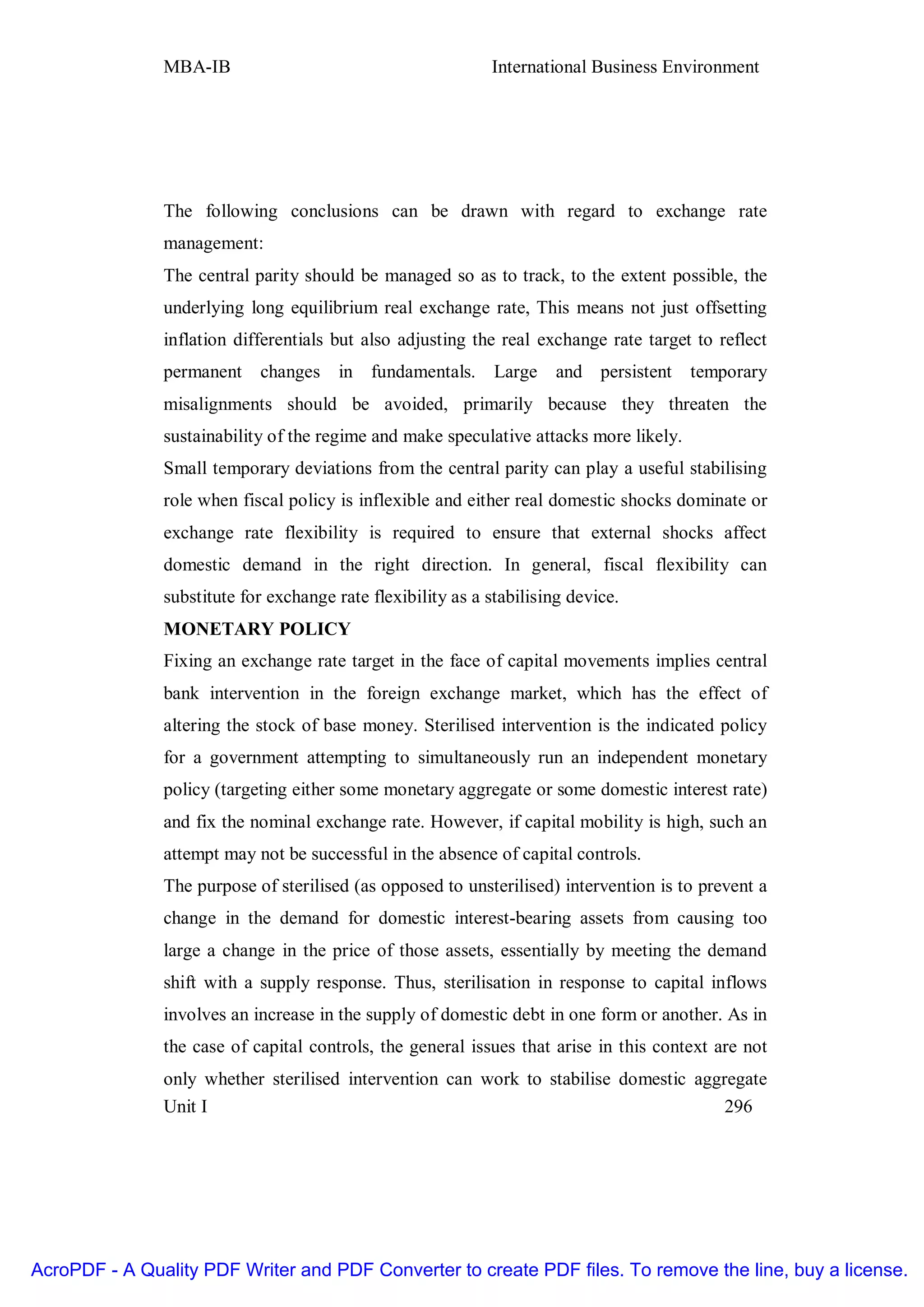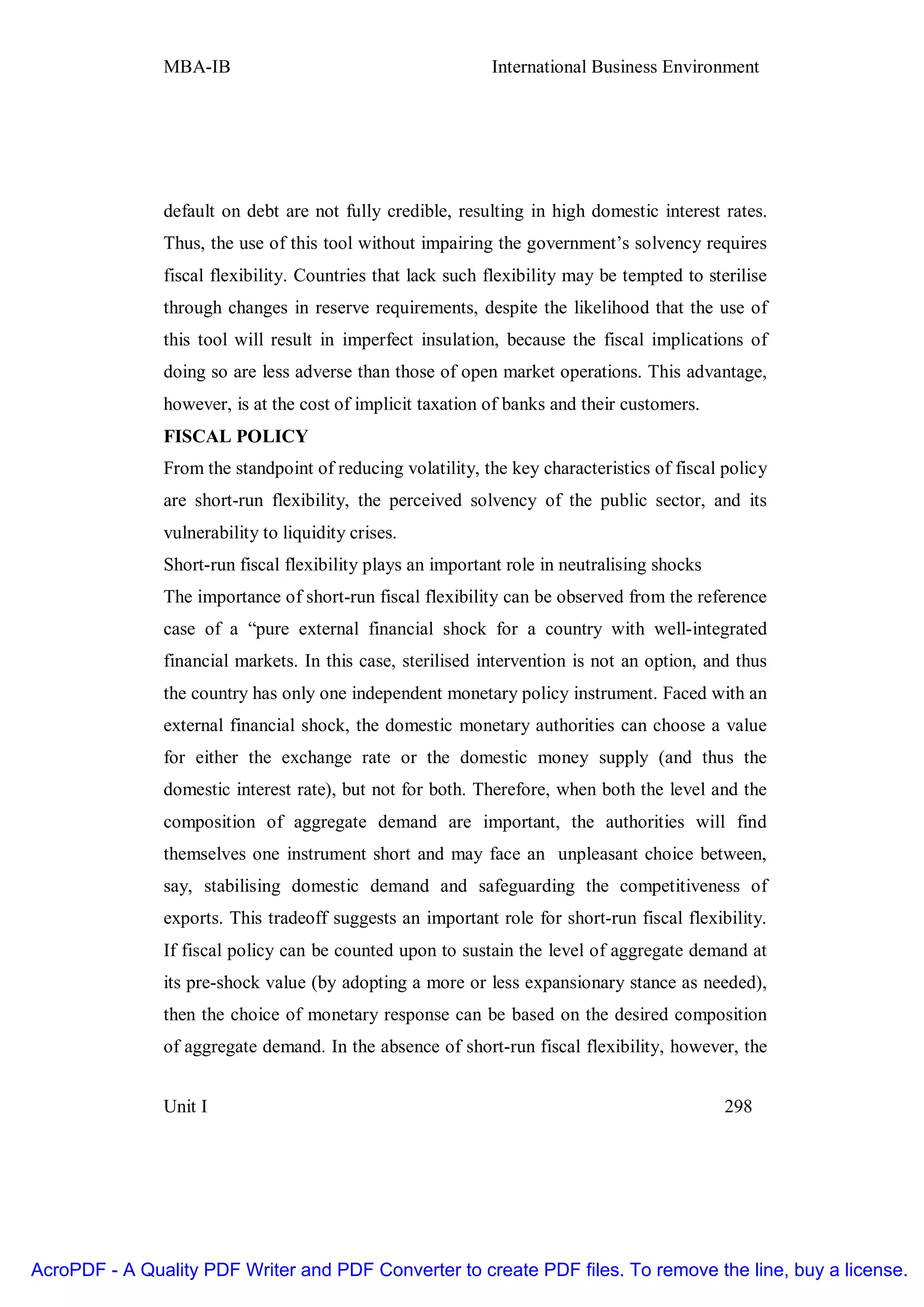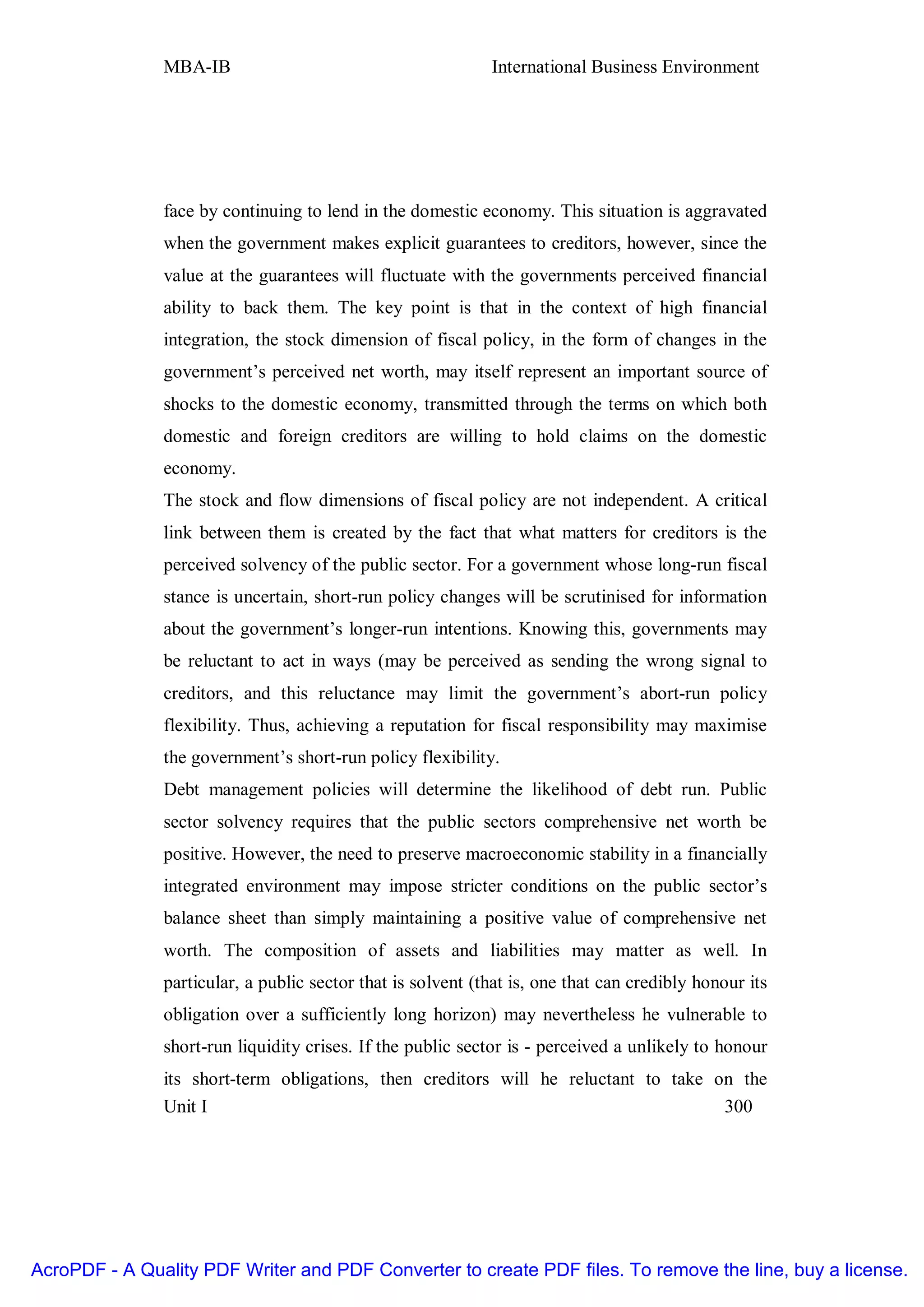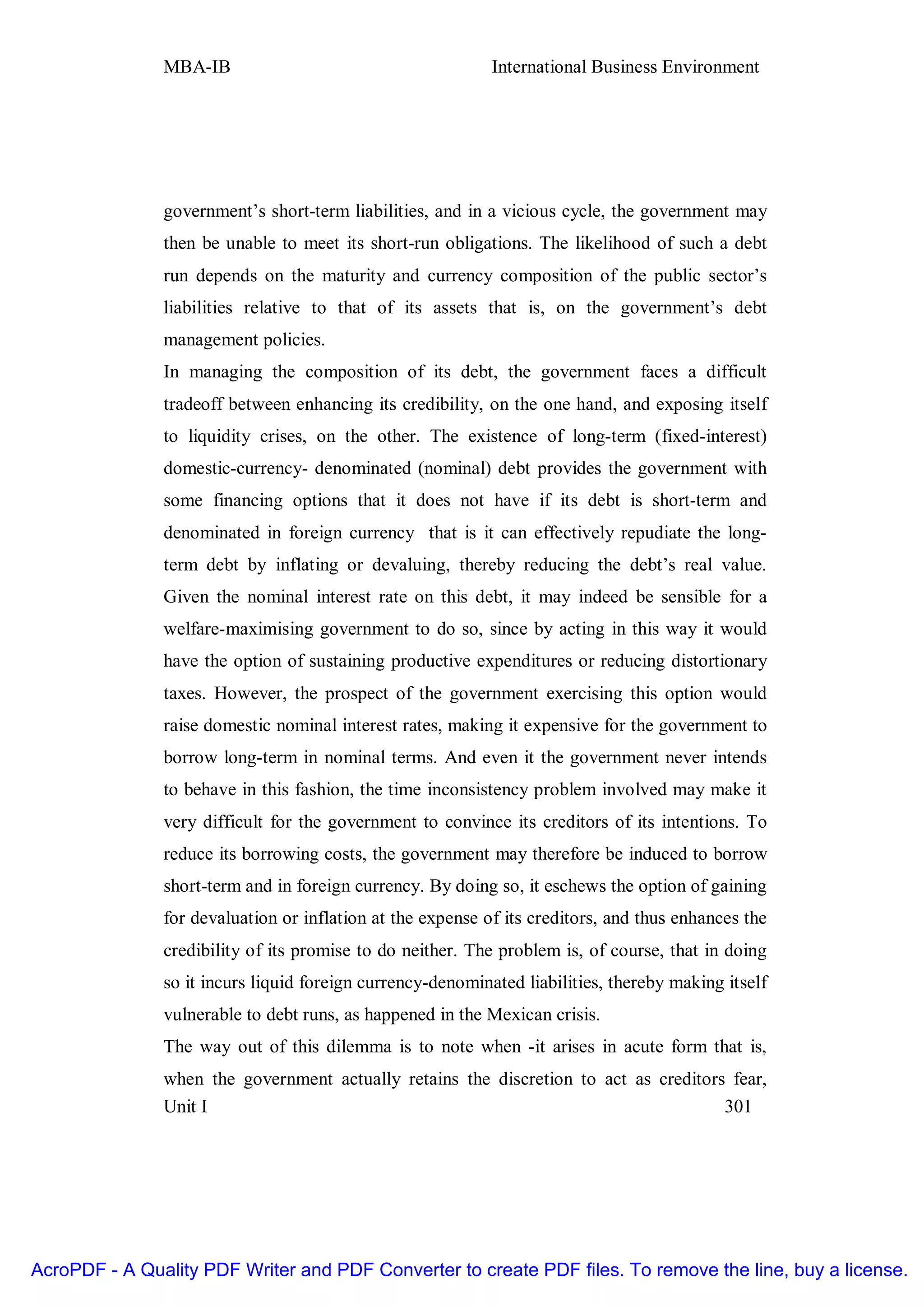The document provides an overview of international business, including:
1) It defines international business as any business activity that crosses national borders and discusses the scope of international business activities.
2) It outlines some of the special difficulties in international business, including political, cultural, economic, currency, language, infrastructure, and trade practice differences between countries.
3) It discusses some of the benefits of engaging in international business, such as market survival, tapping into growing overseas markets, increasing sales and profits, and diversifying risk through variable foreign demand.











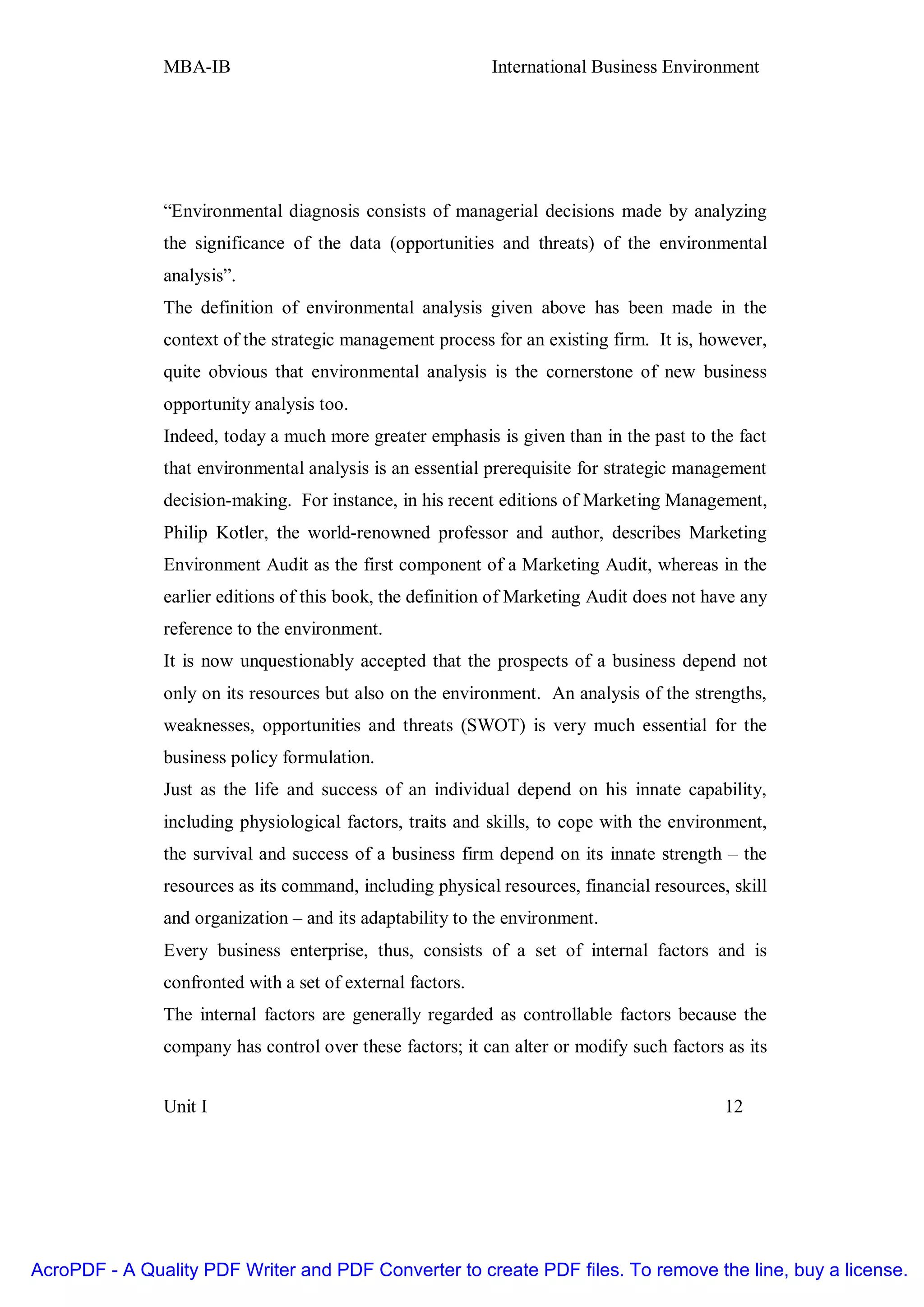
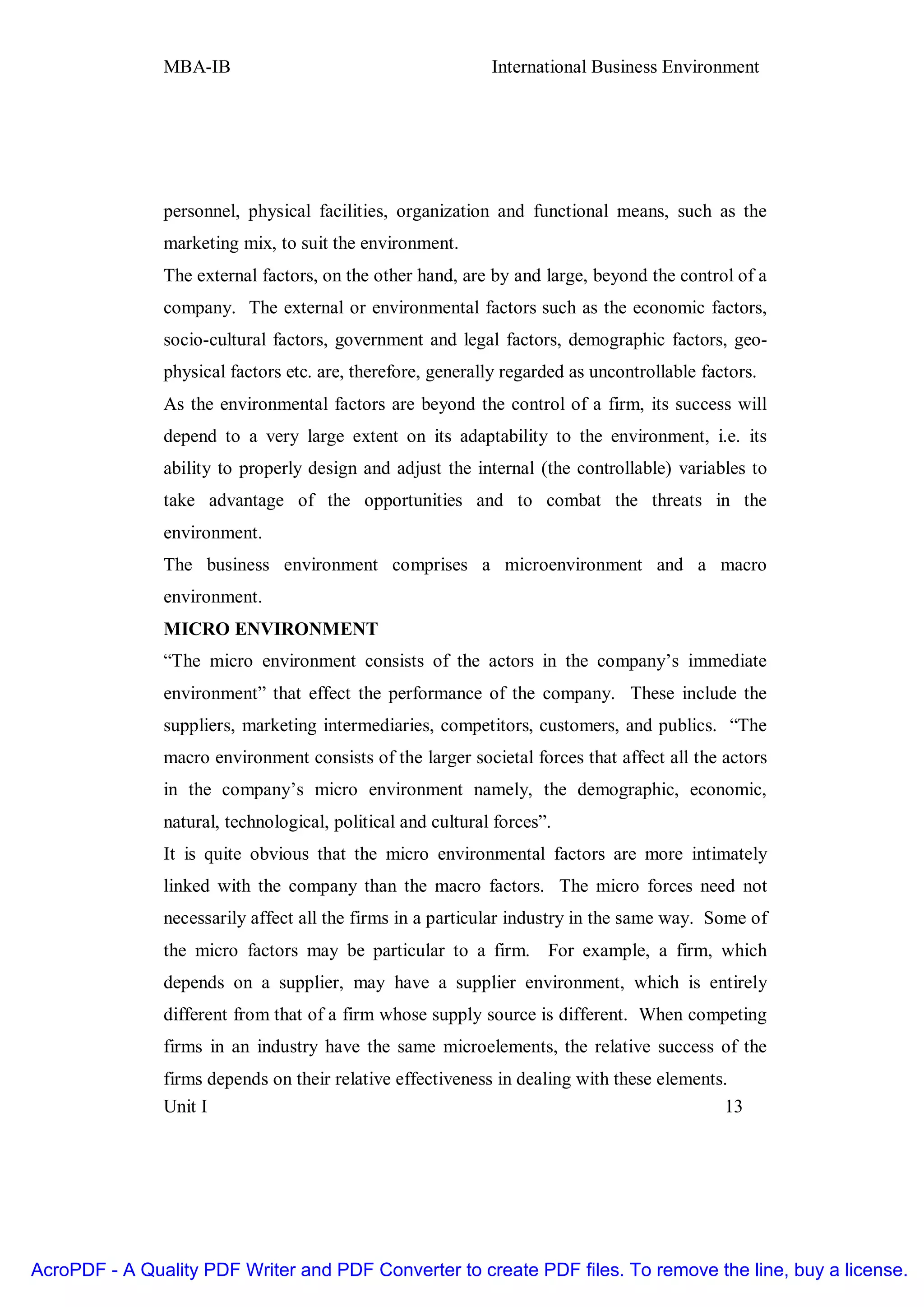


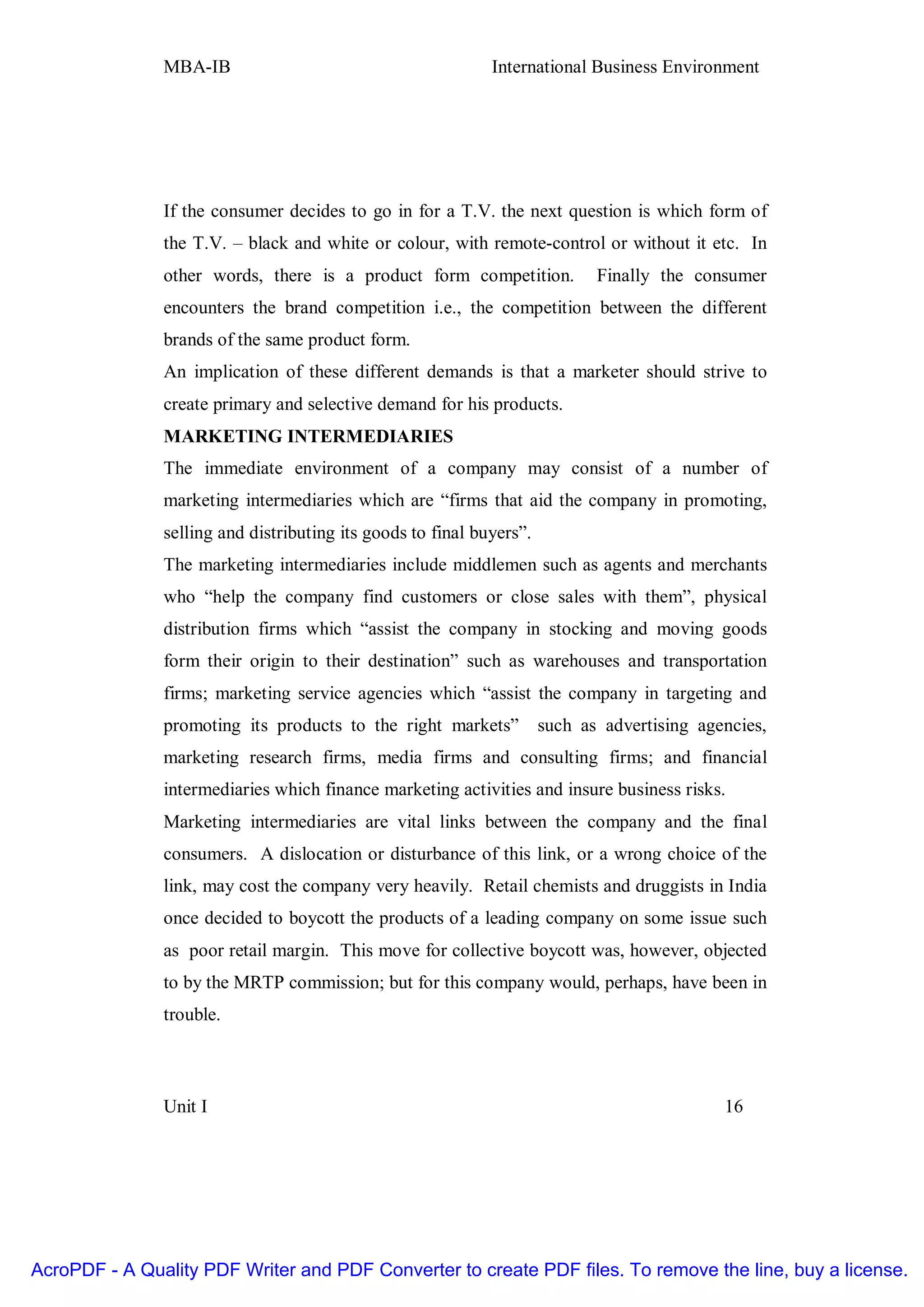
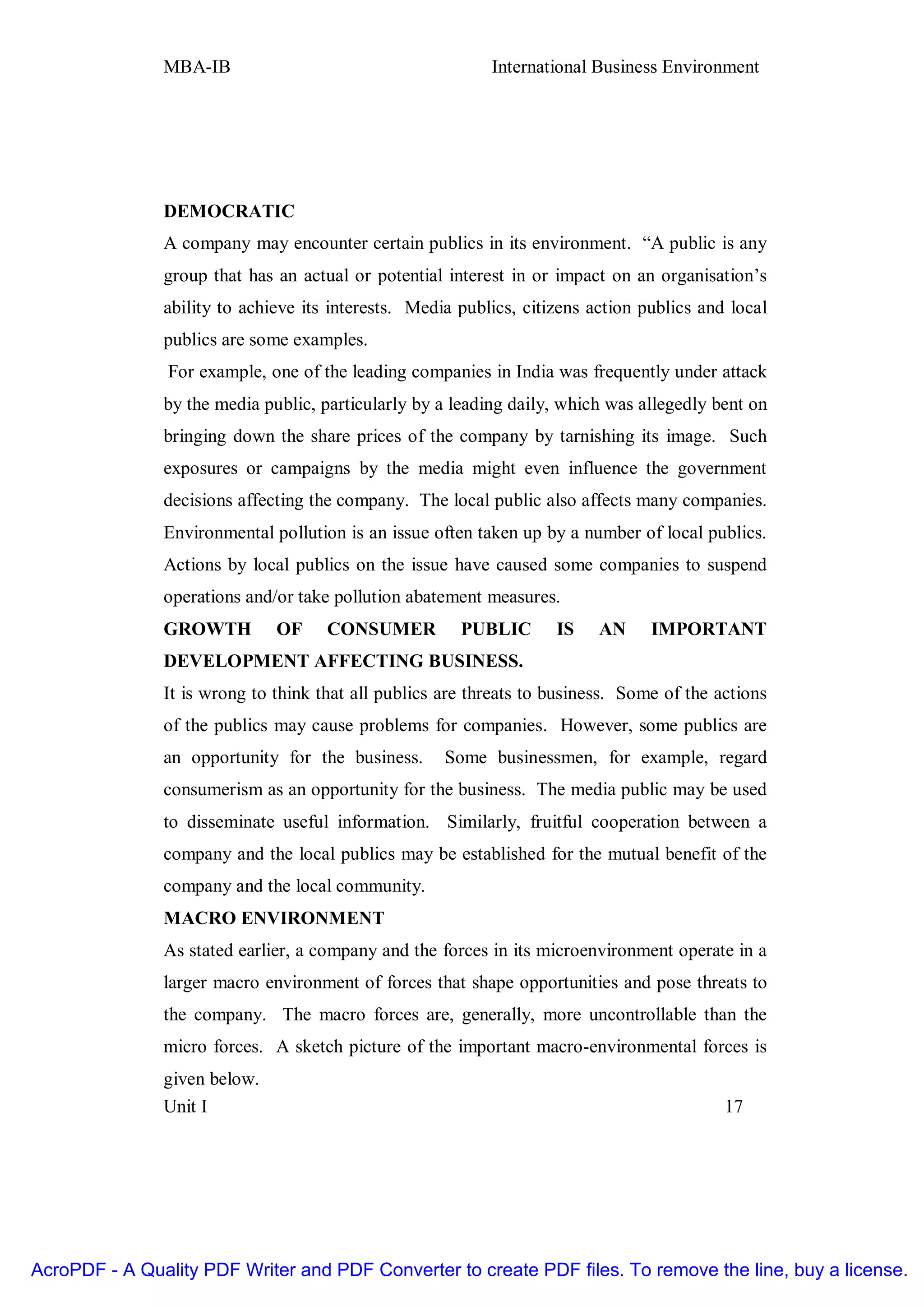


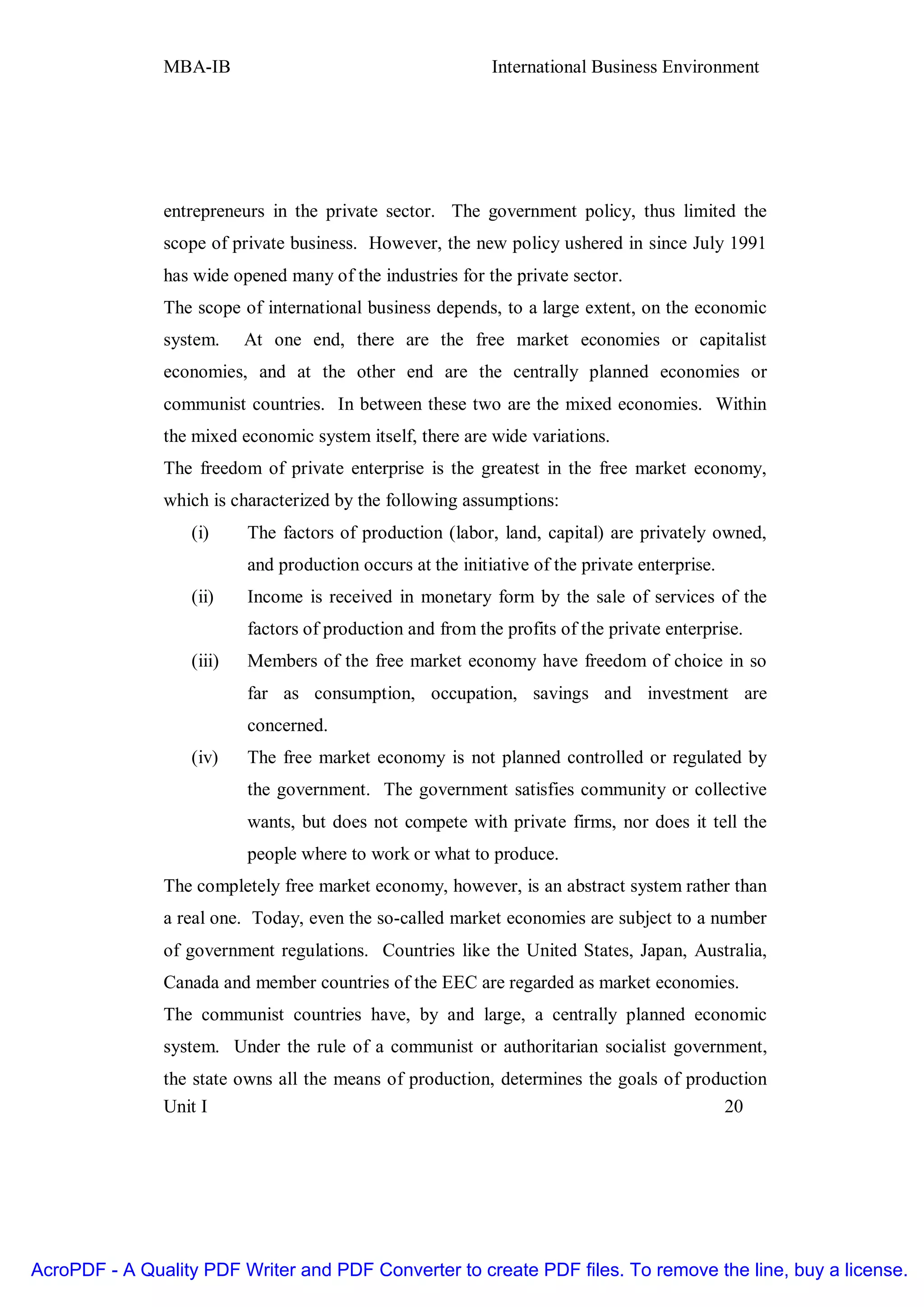

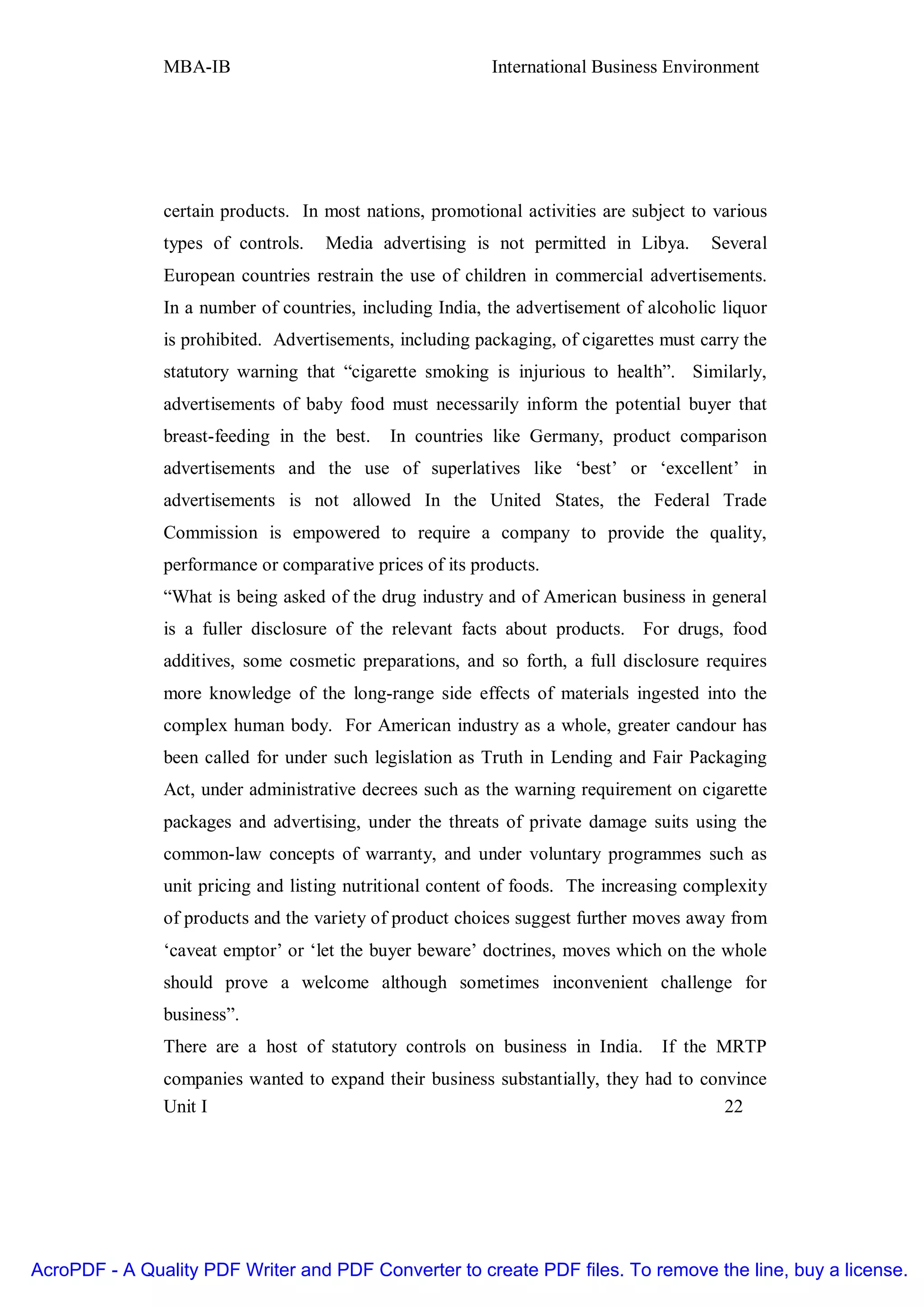



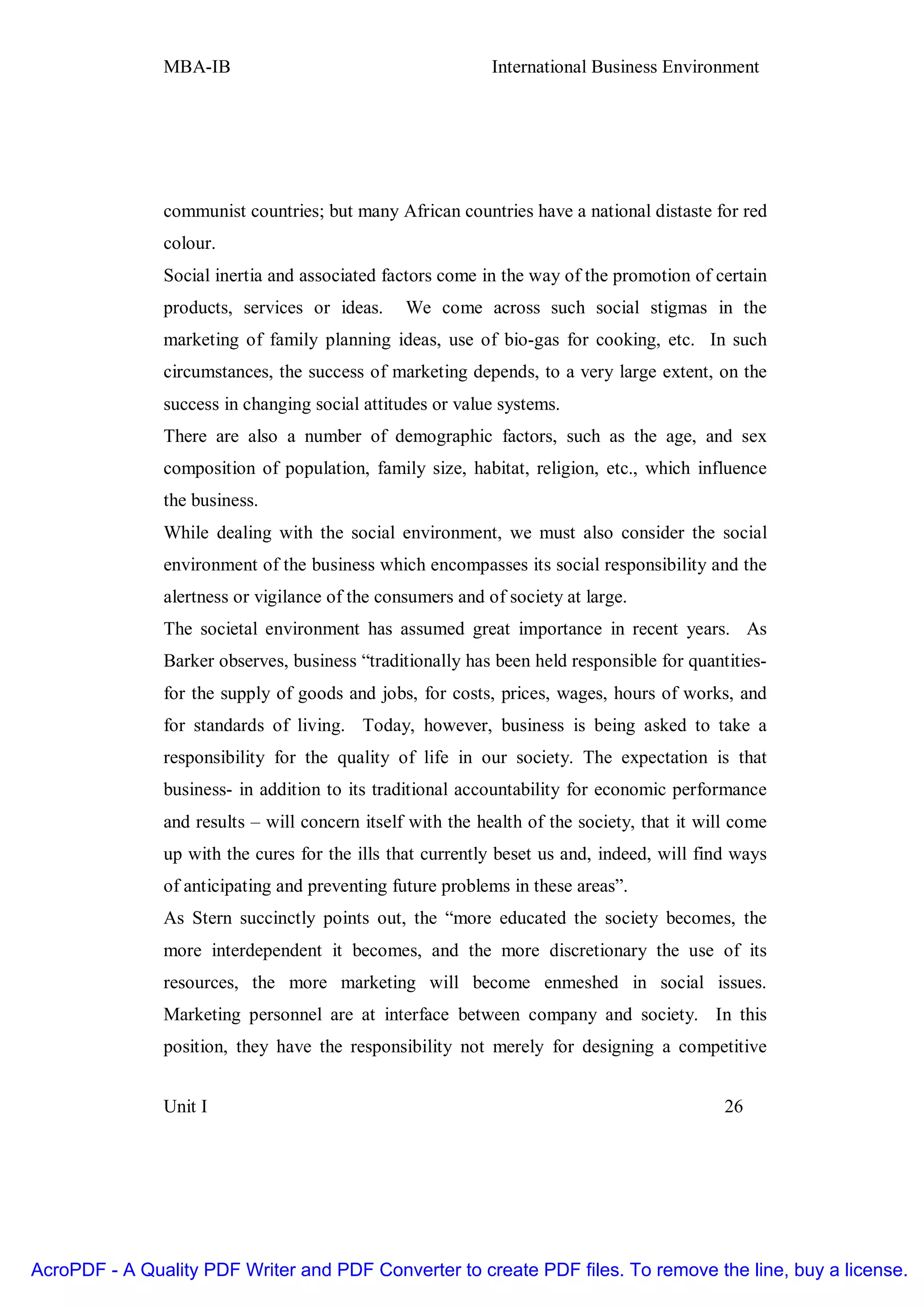
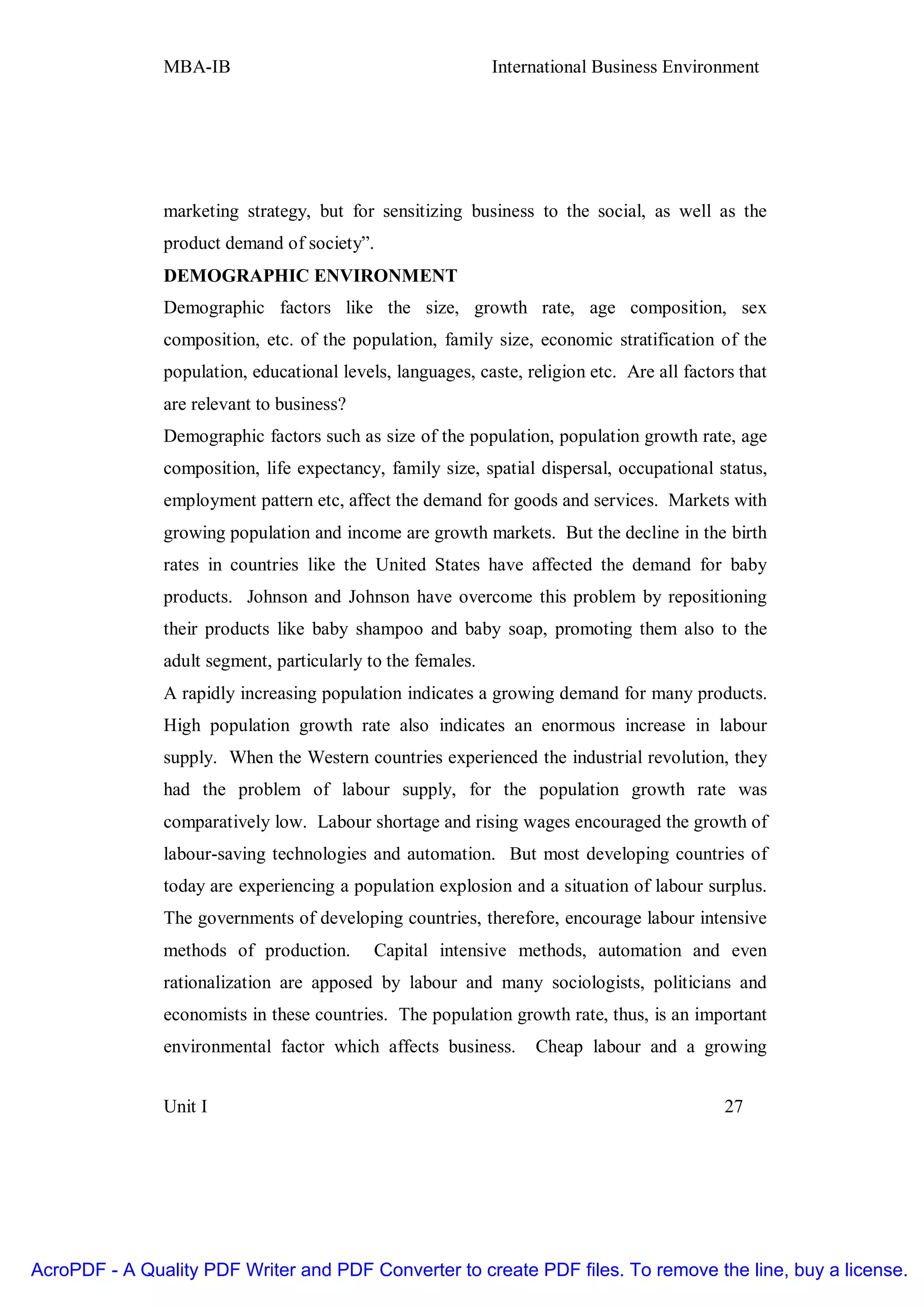





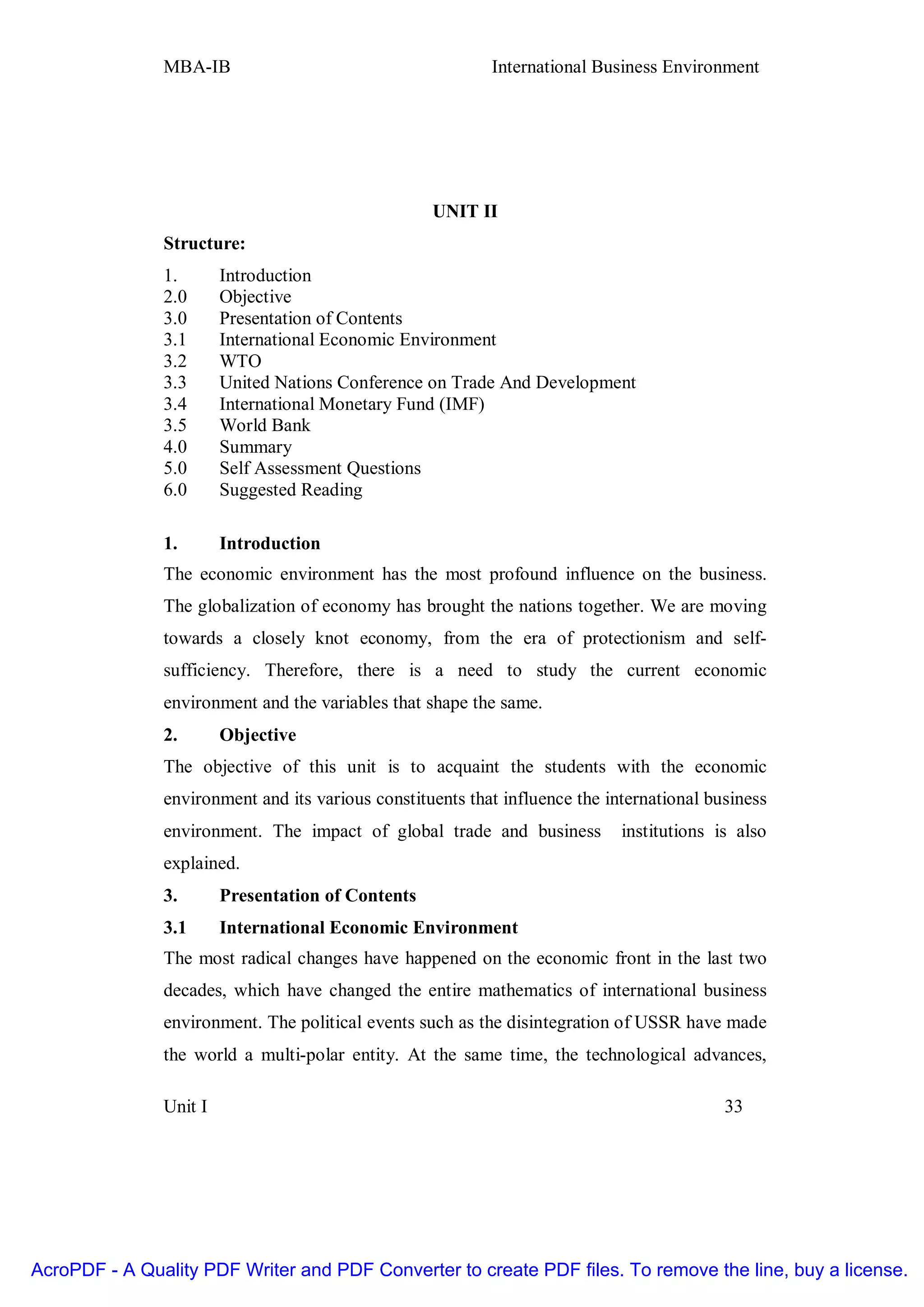
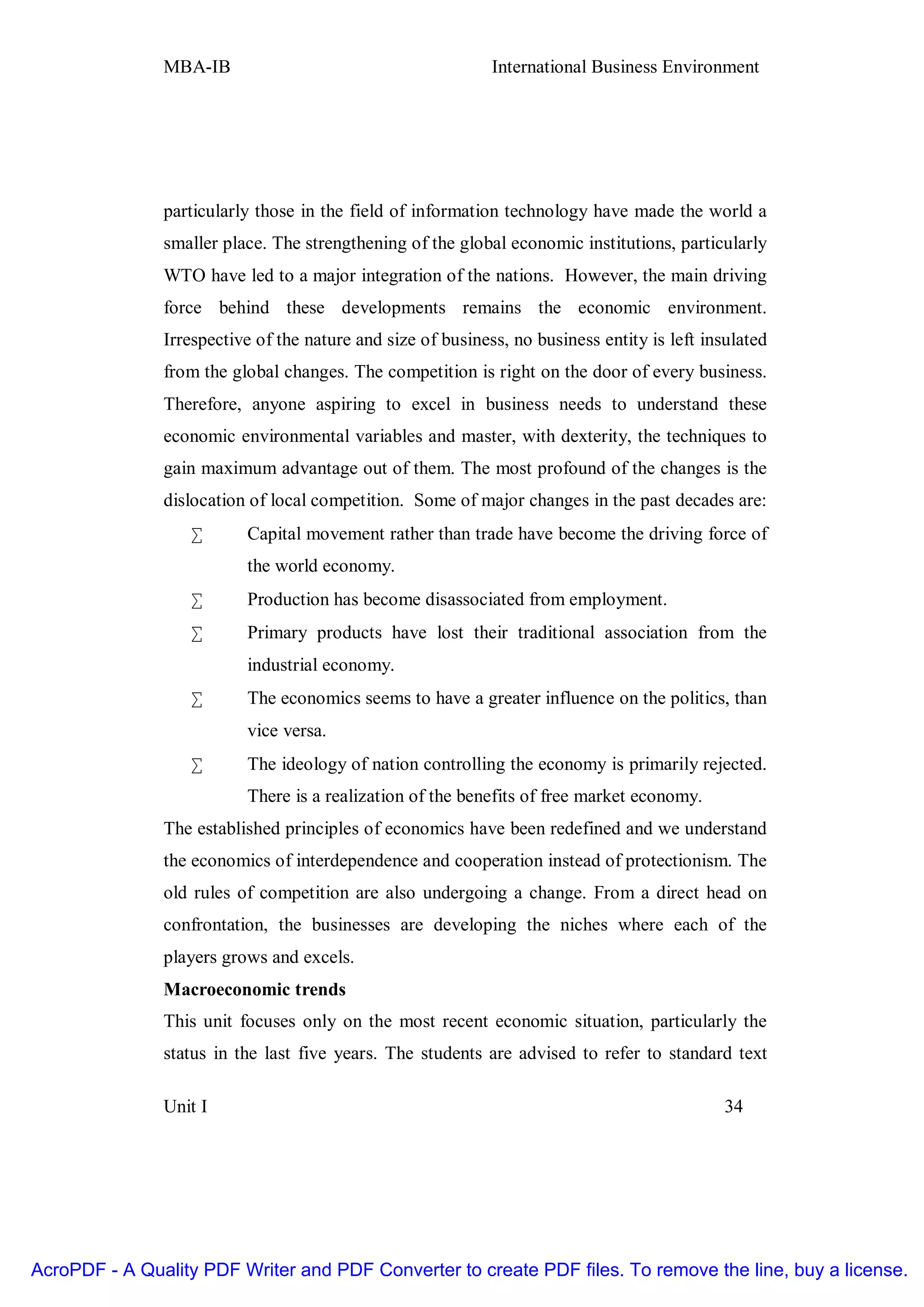



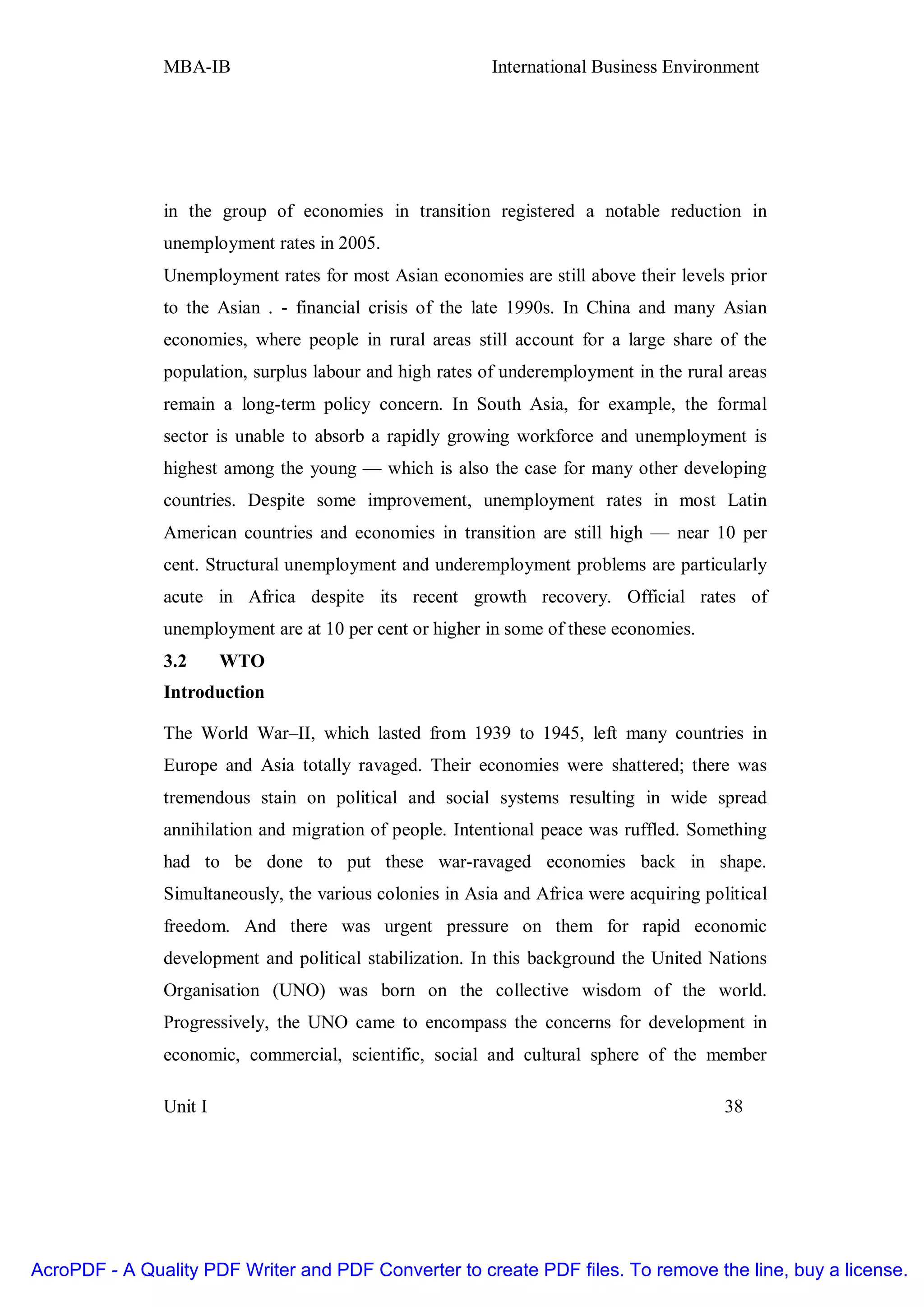





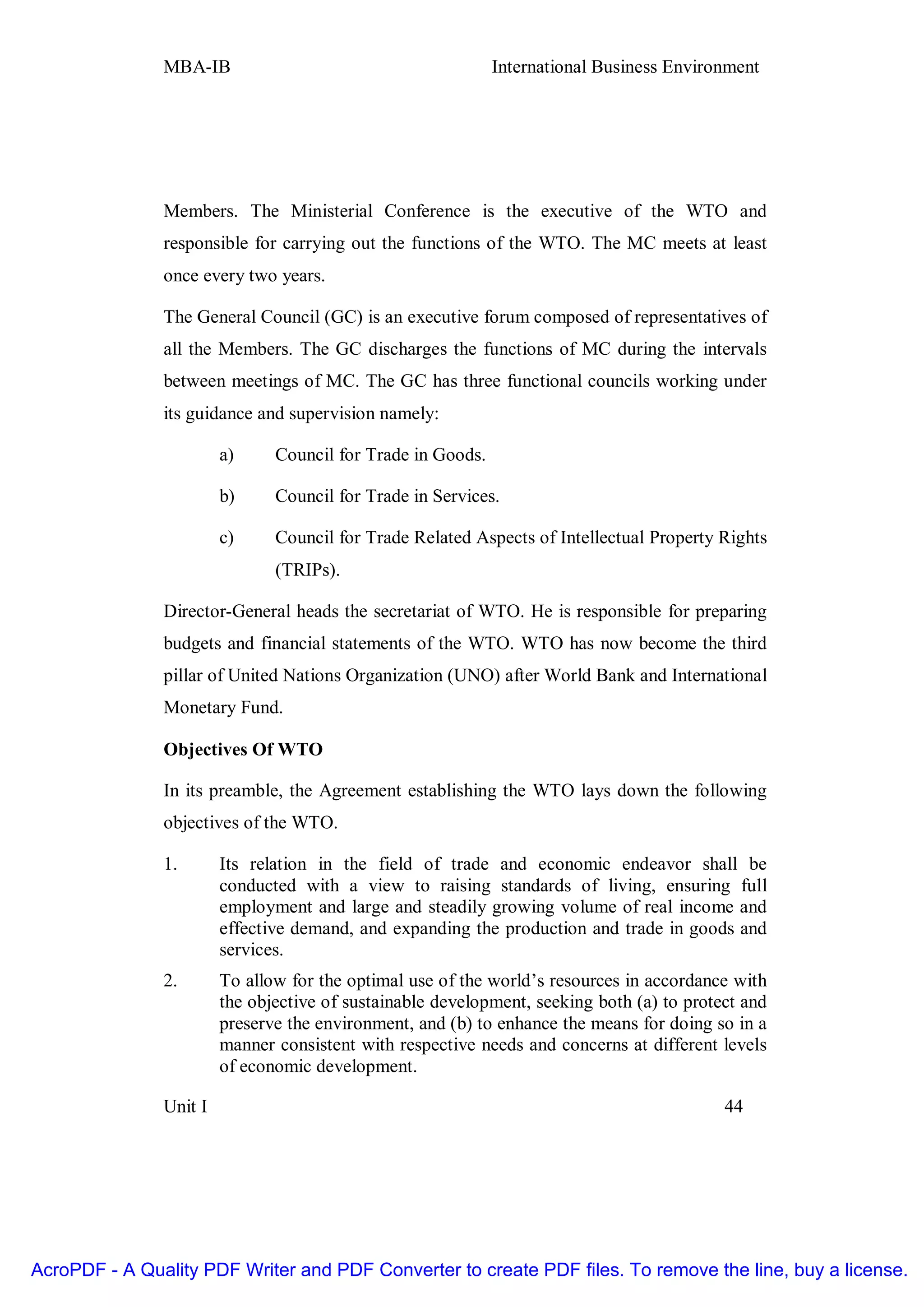






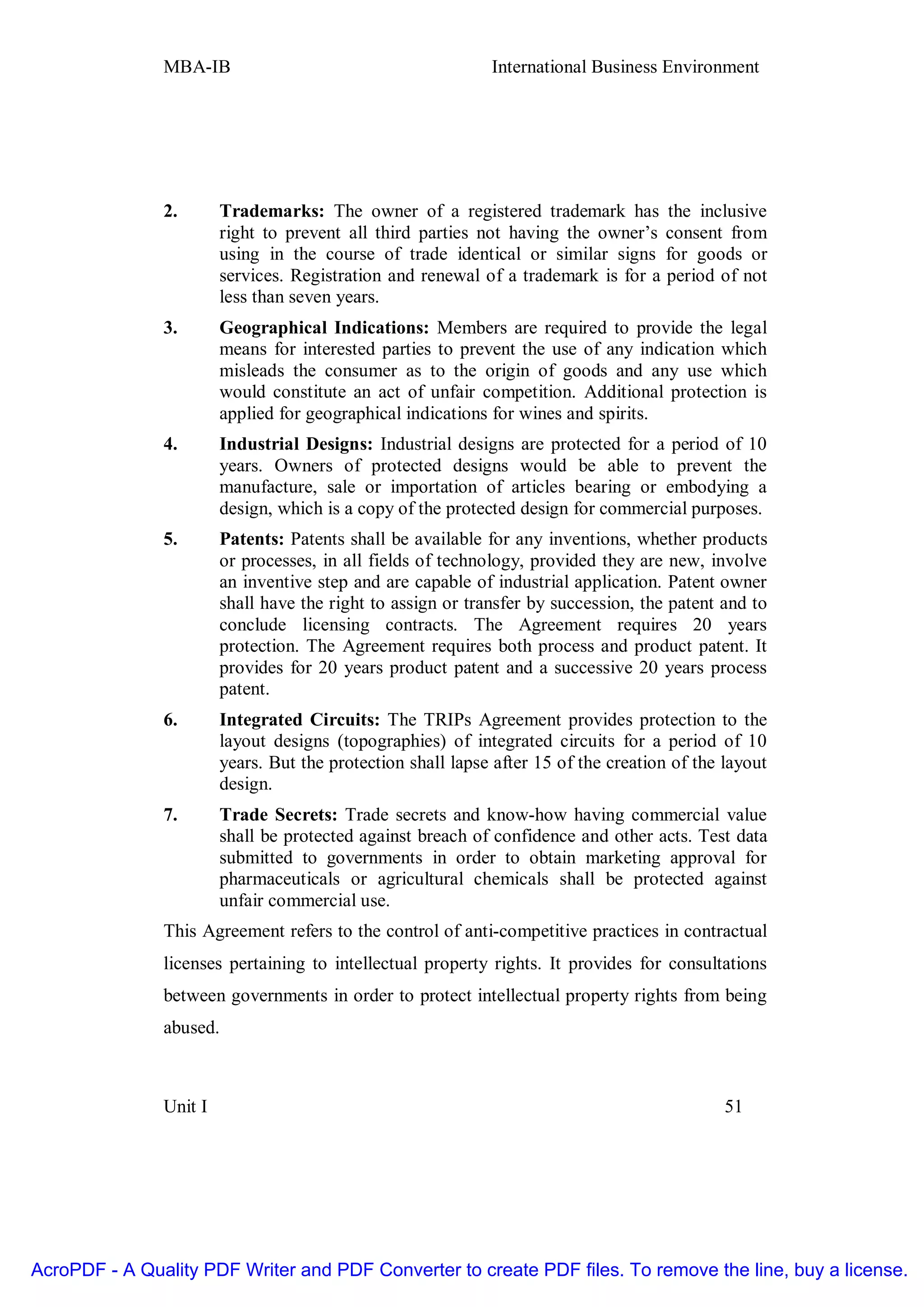




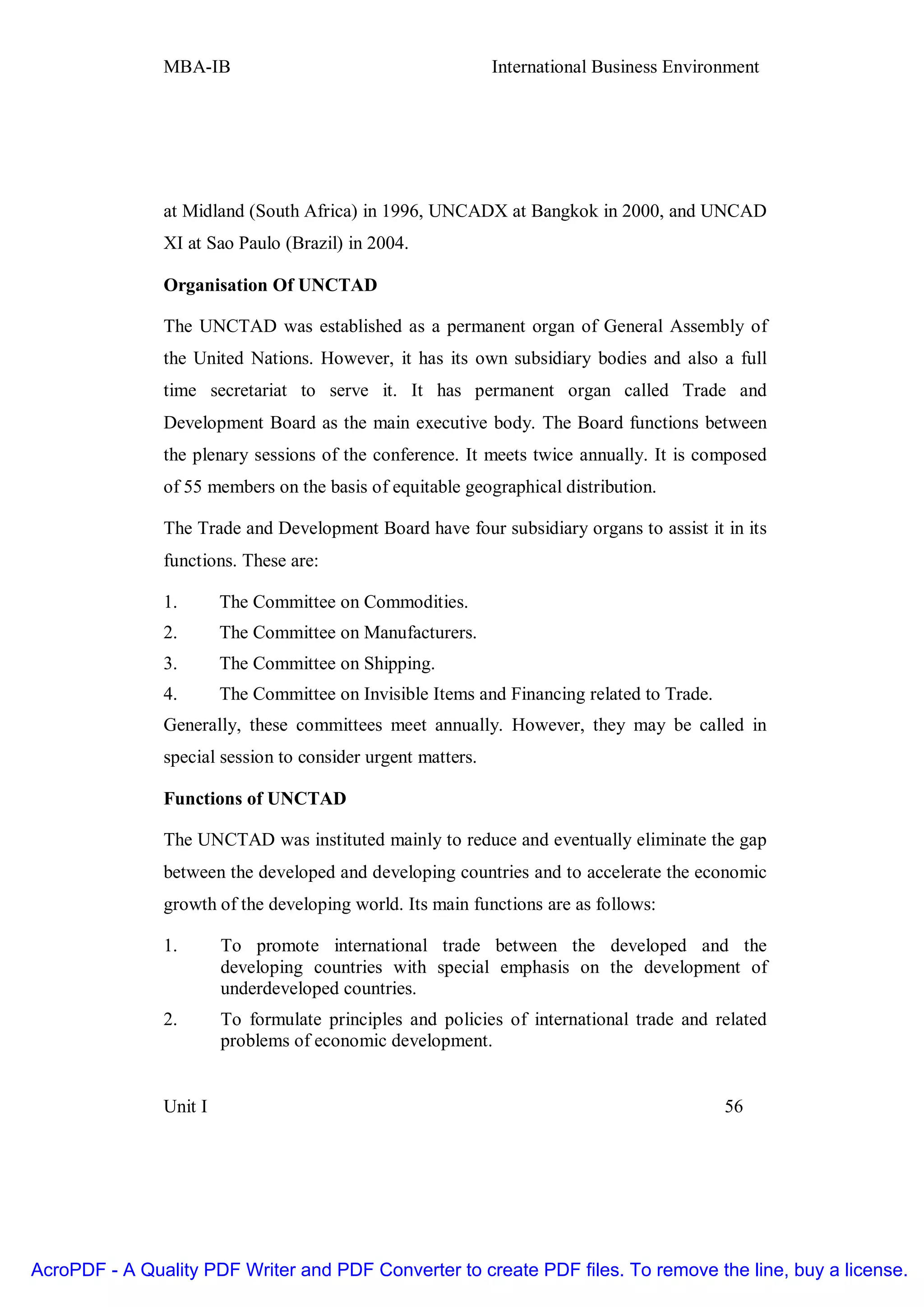
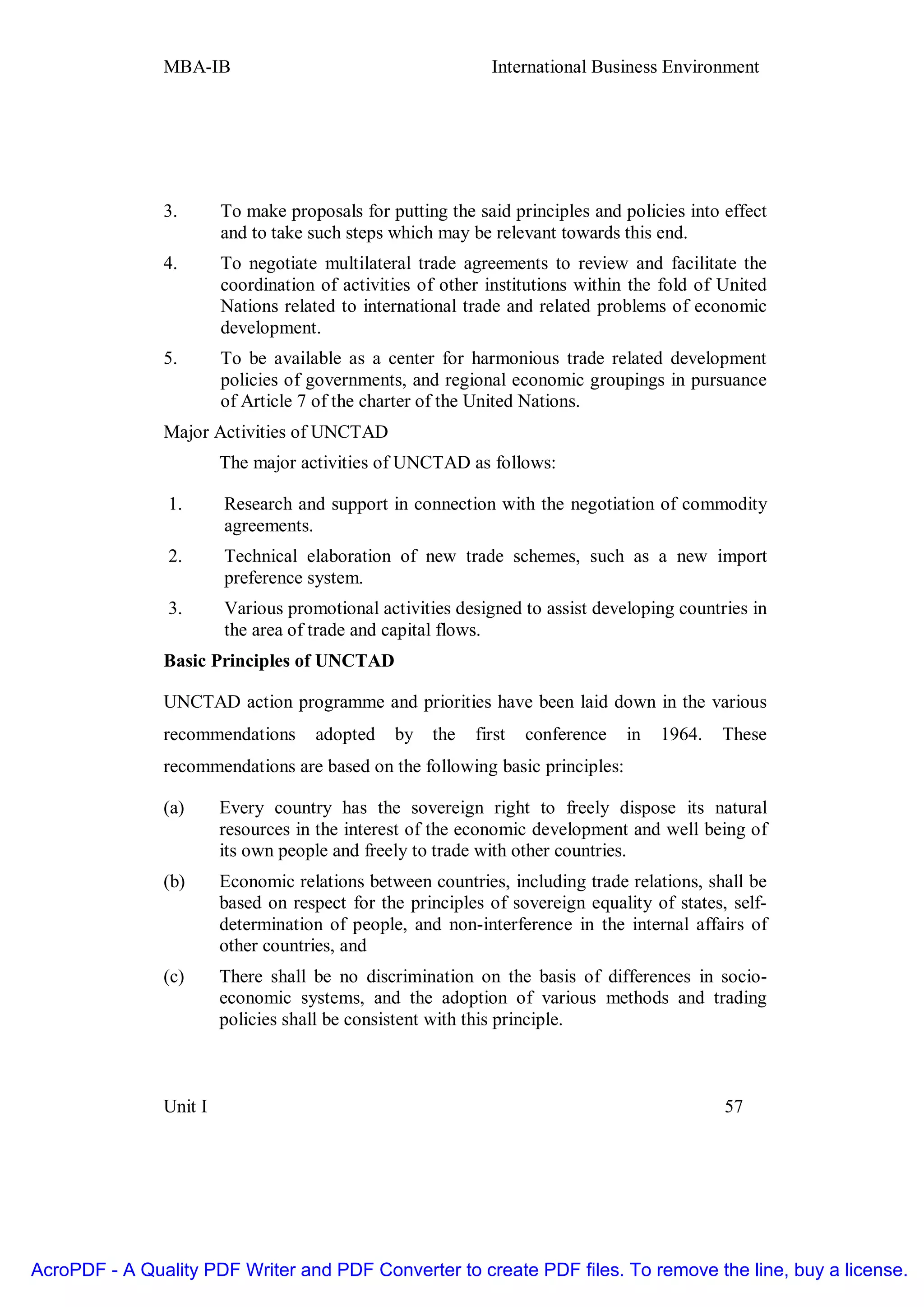


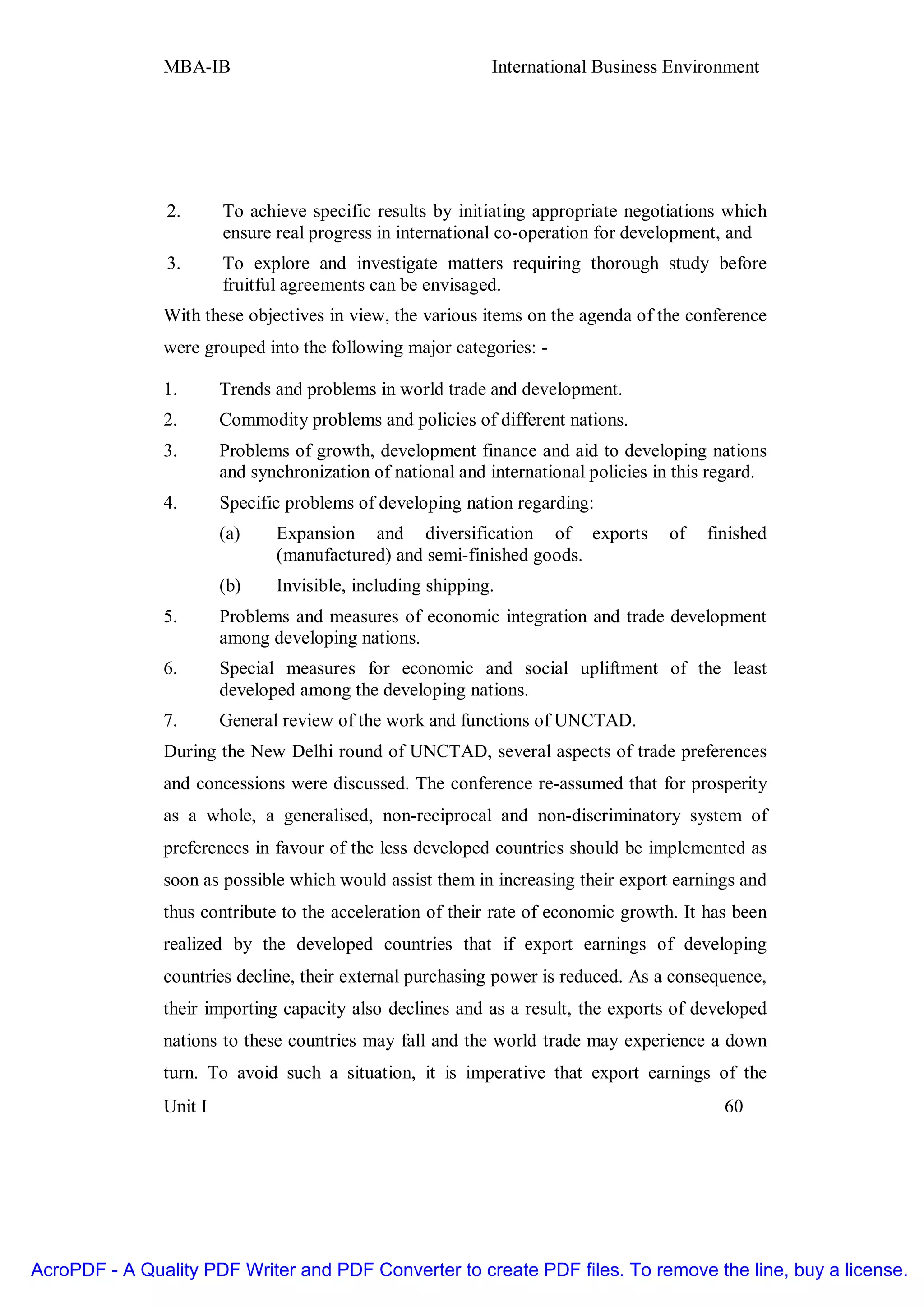

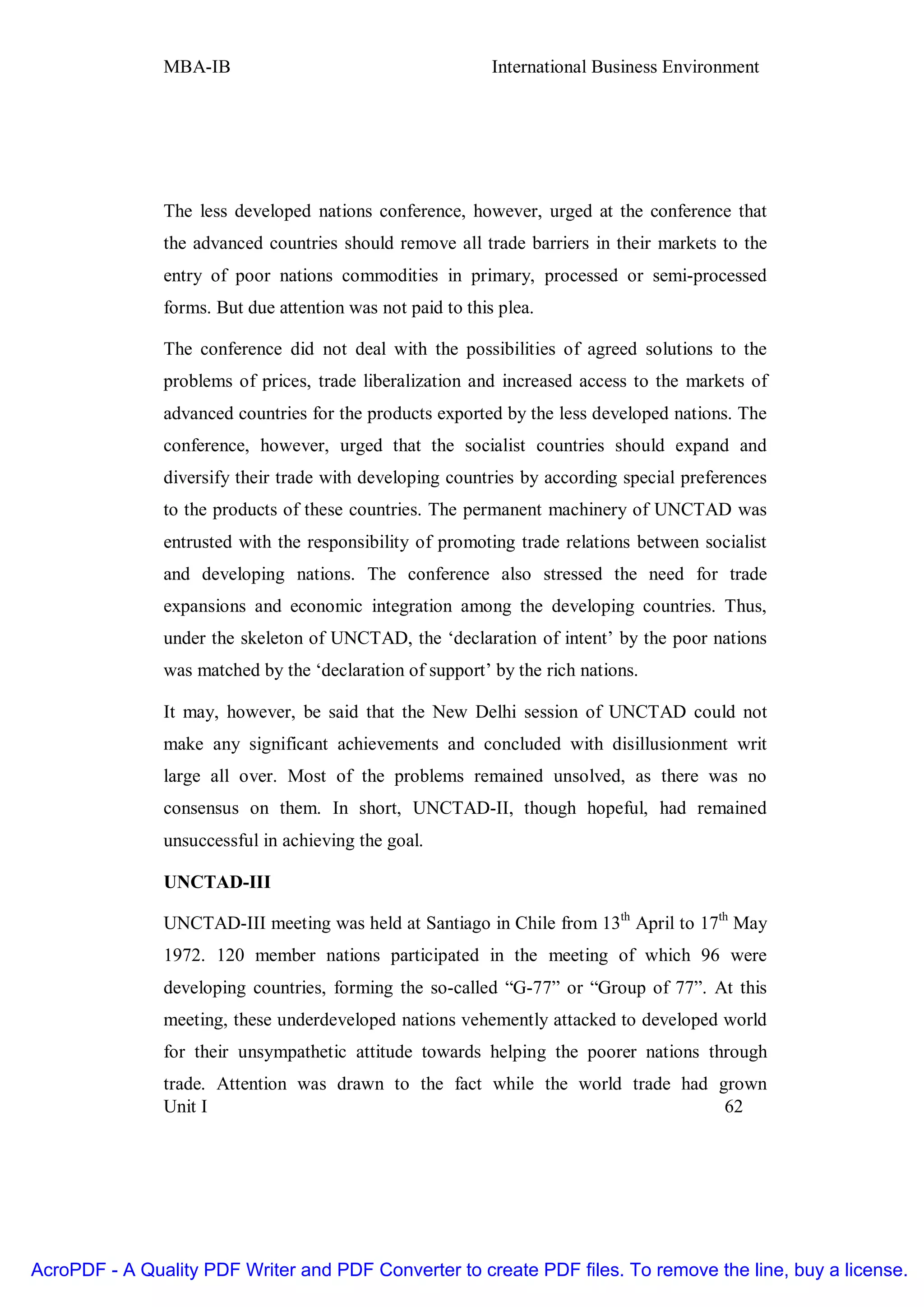






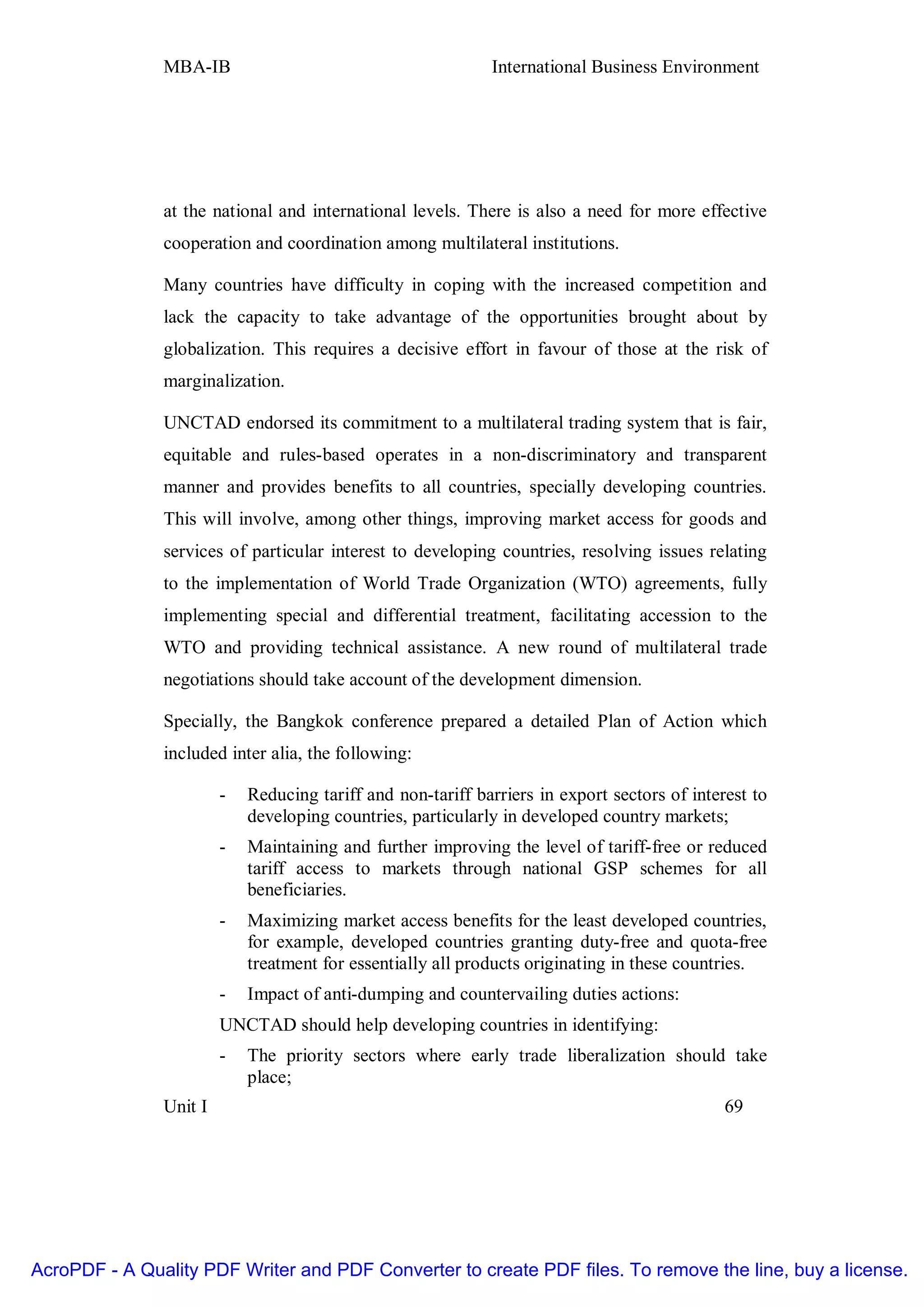

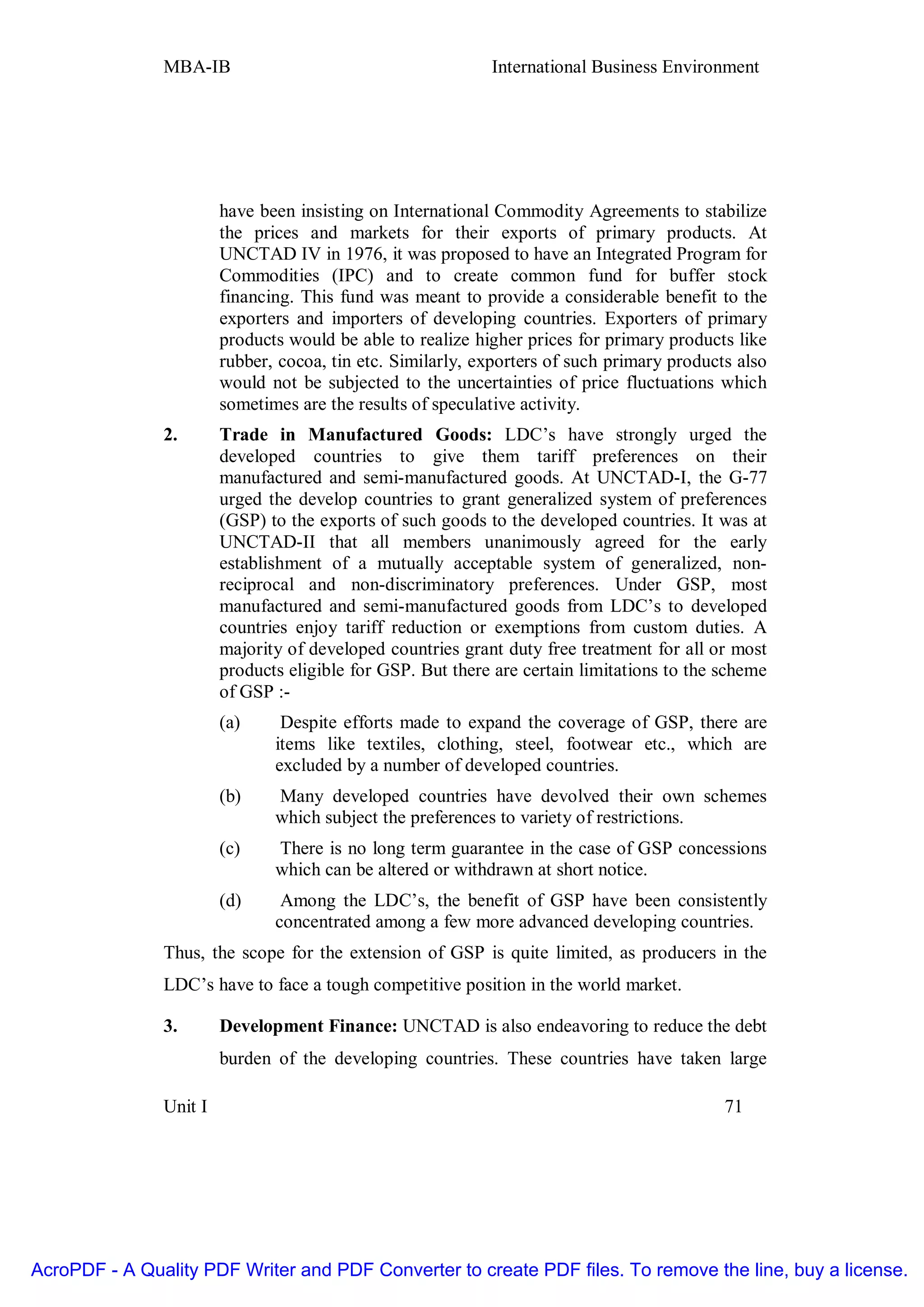
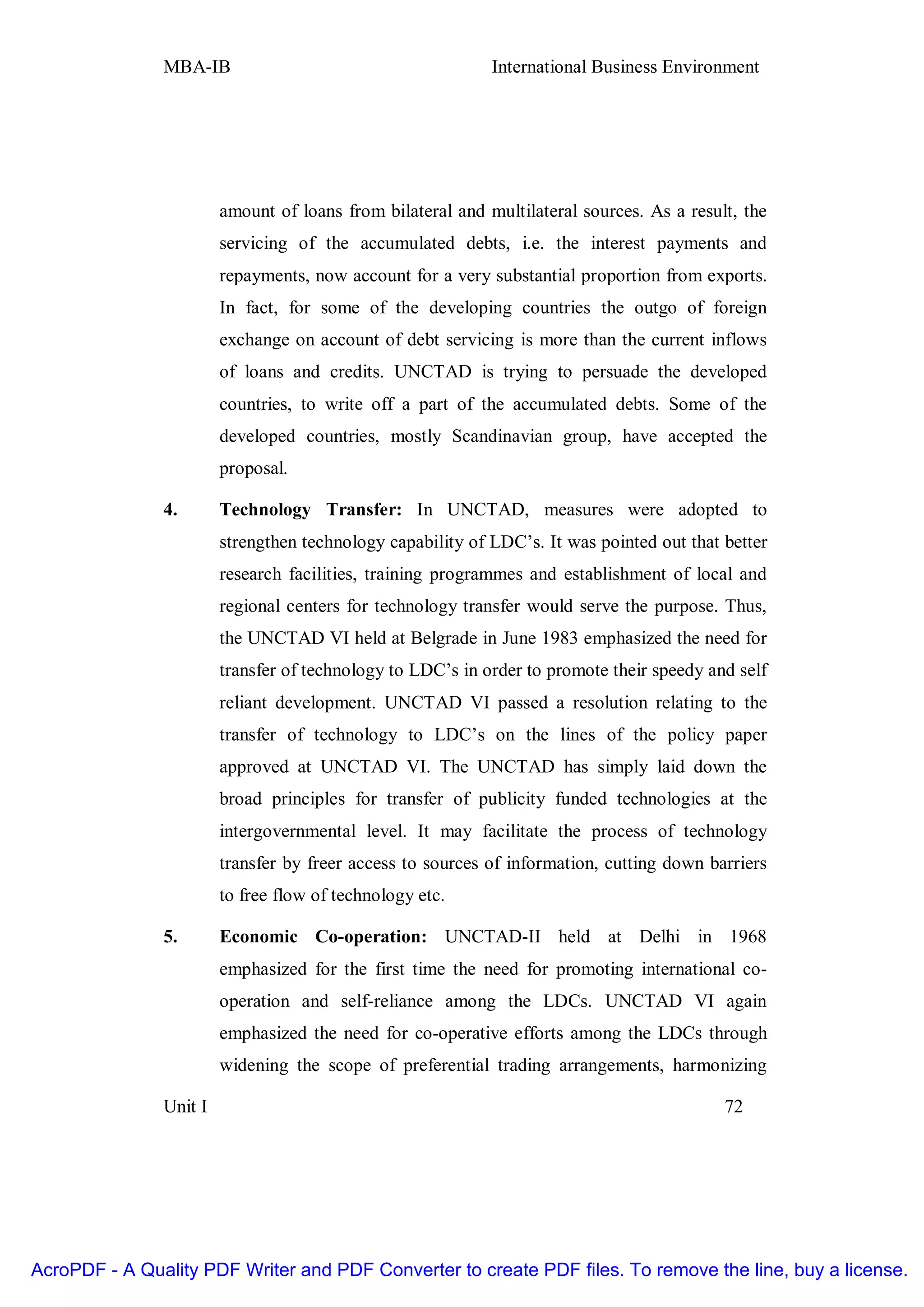

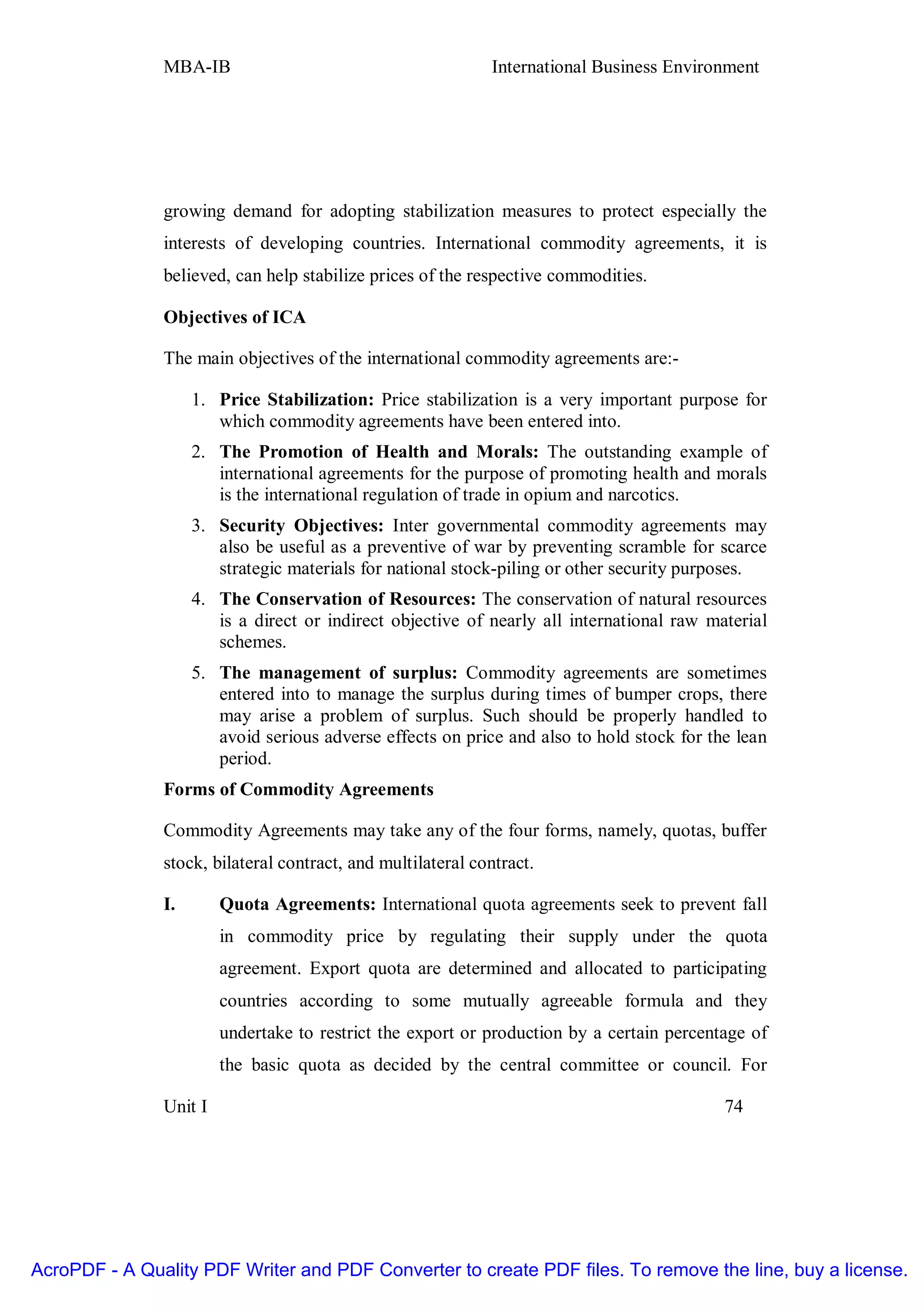



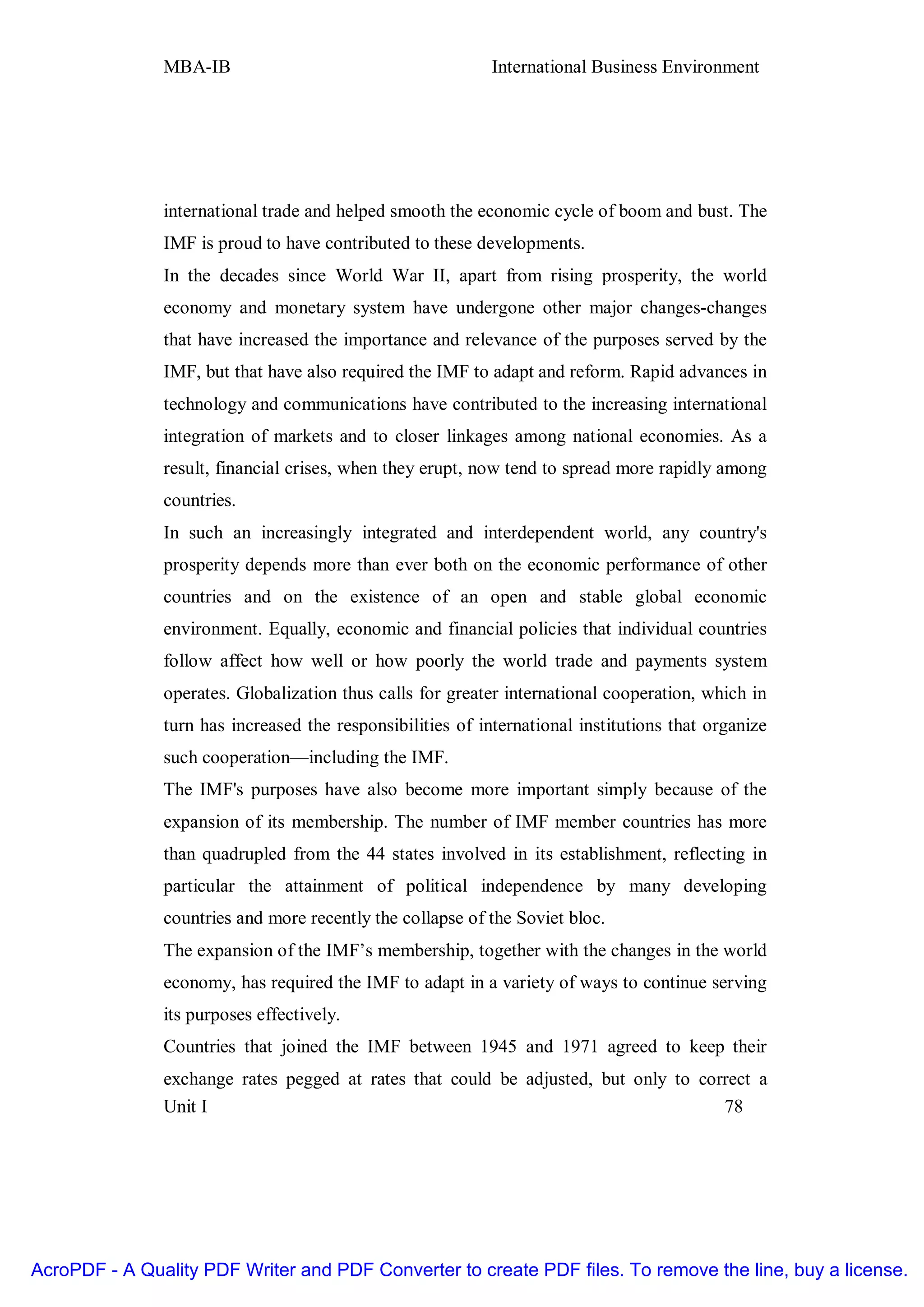






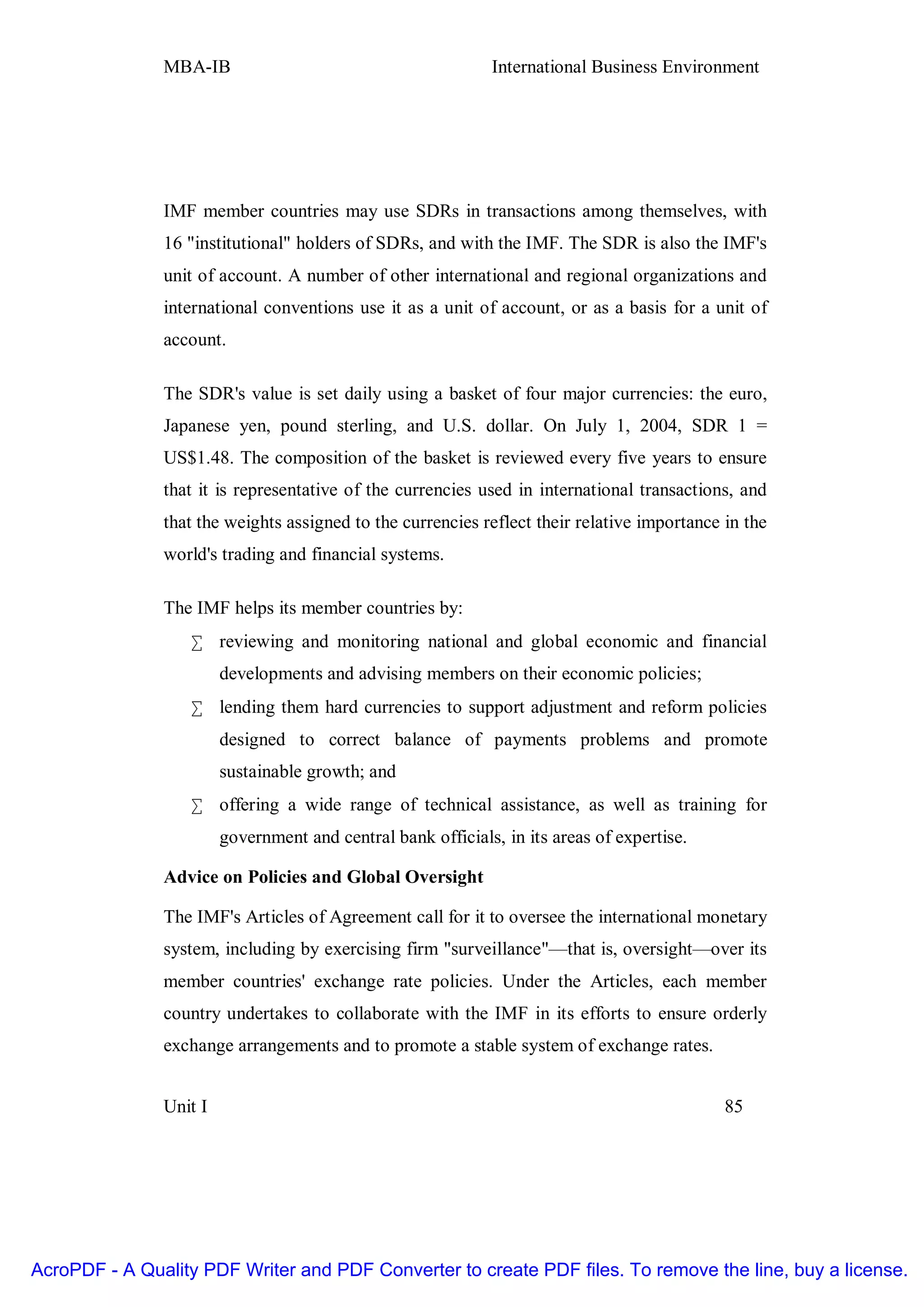

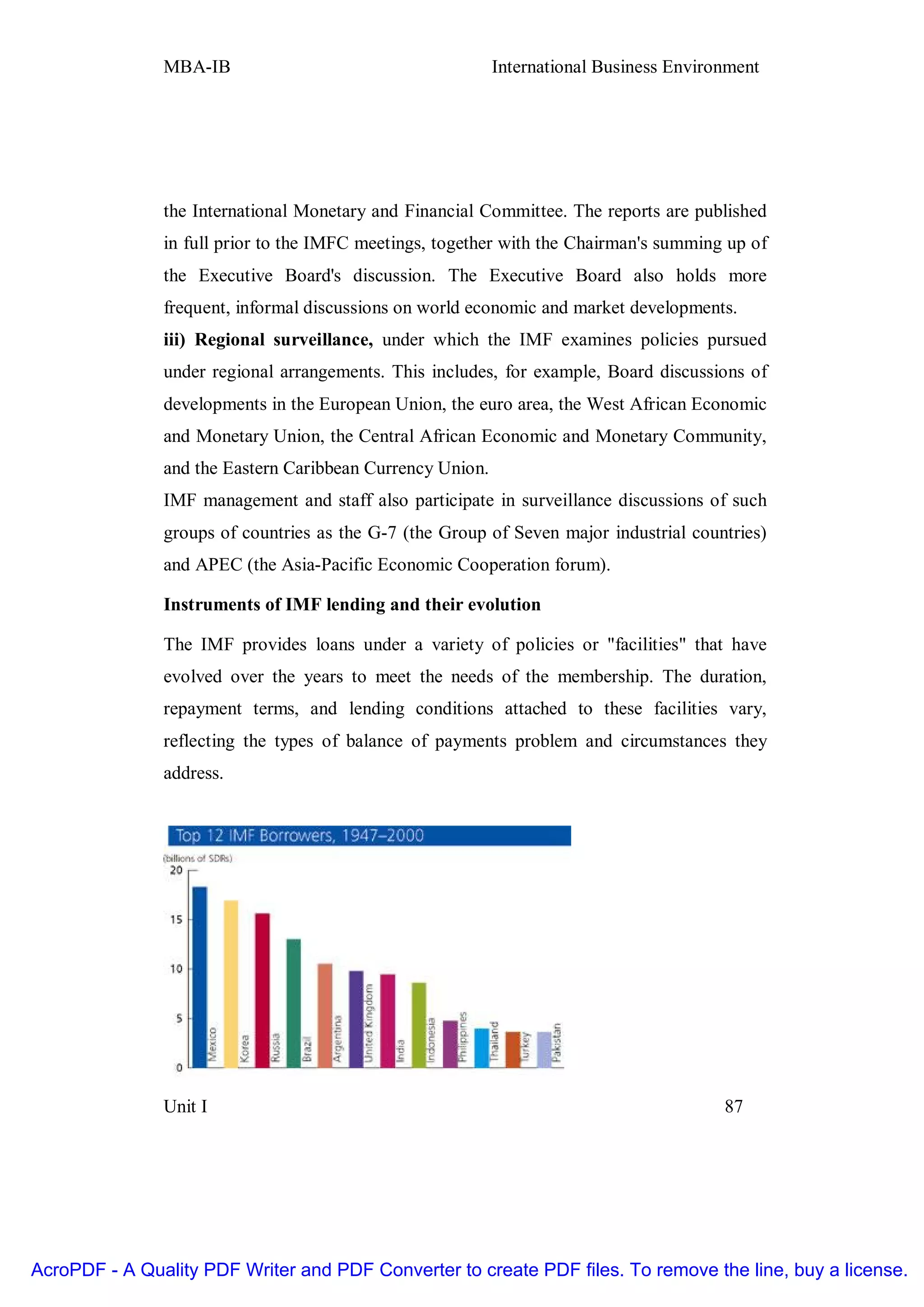



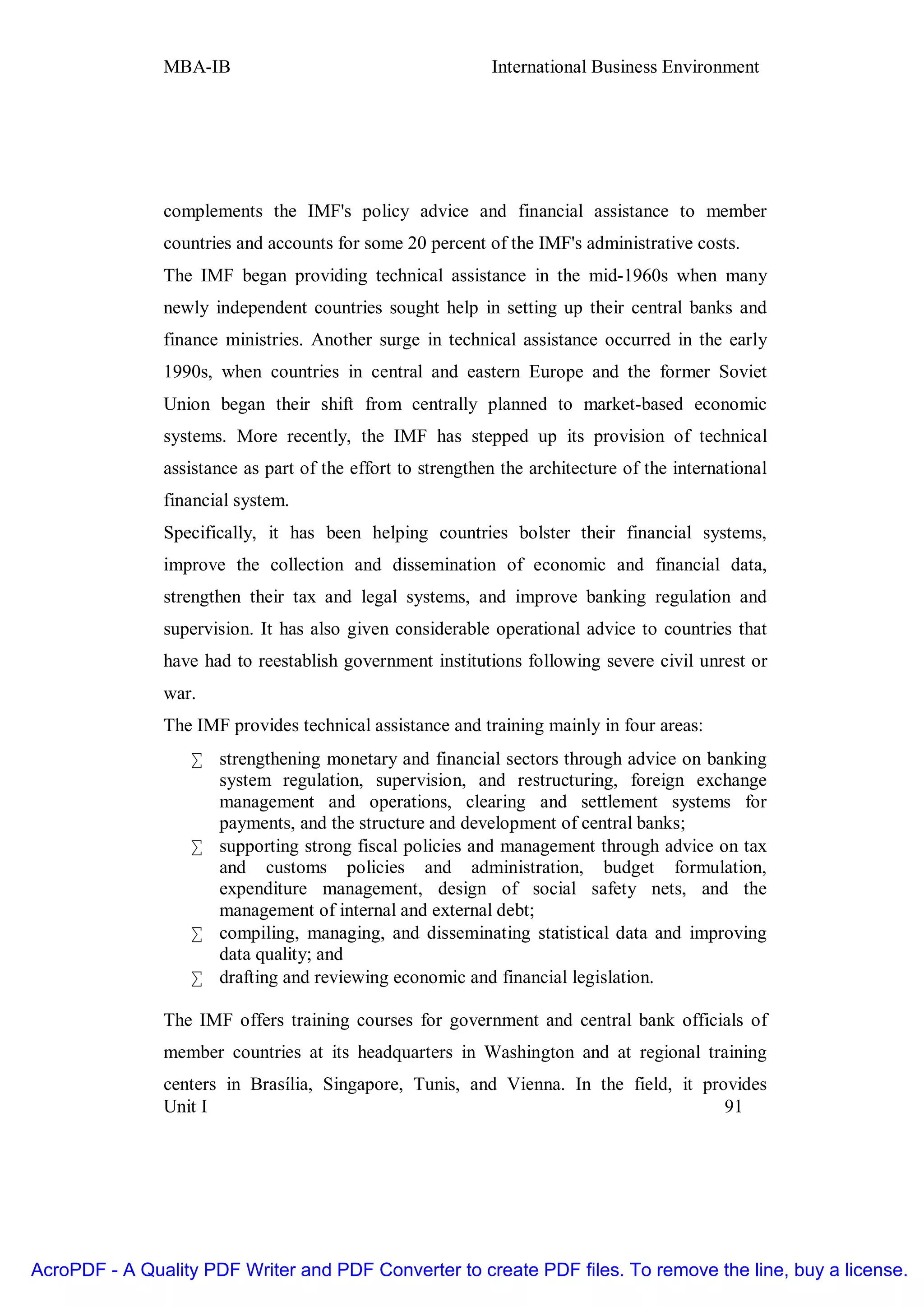

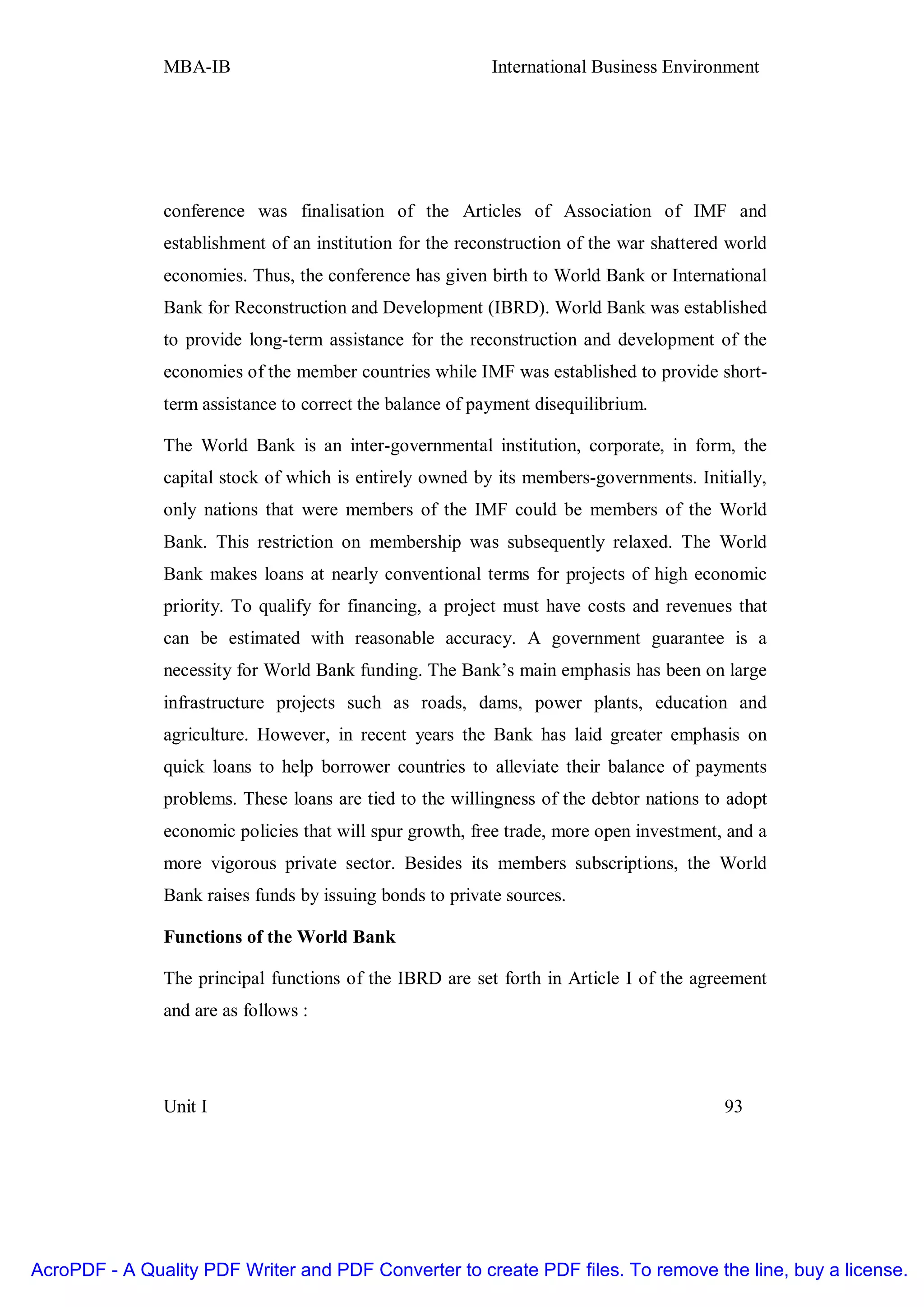
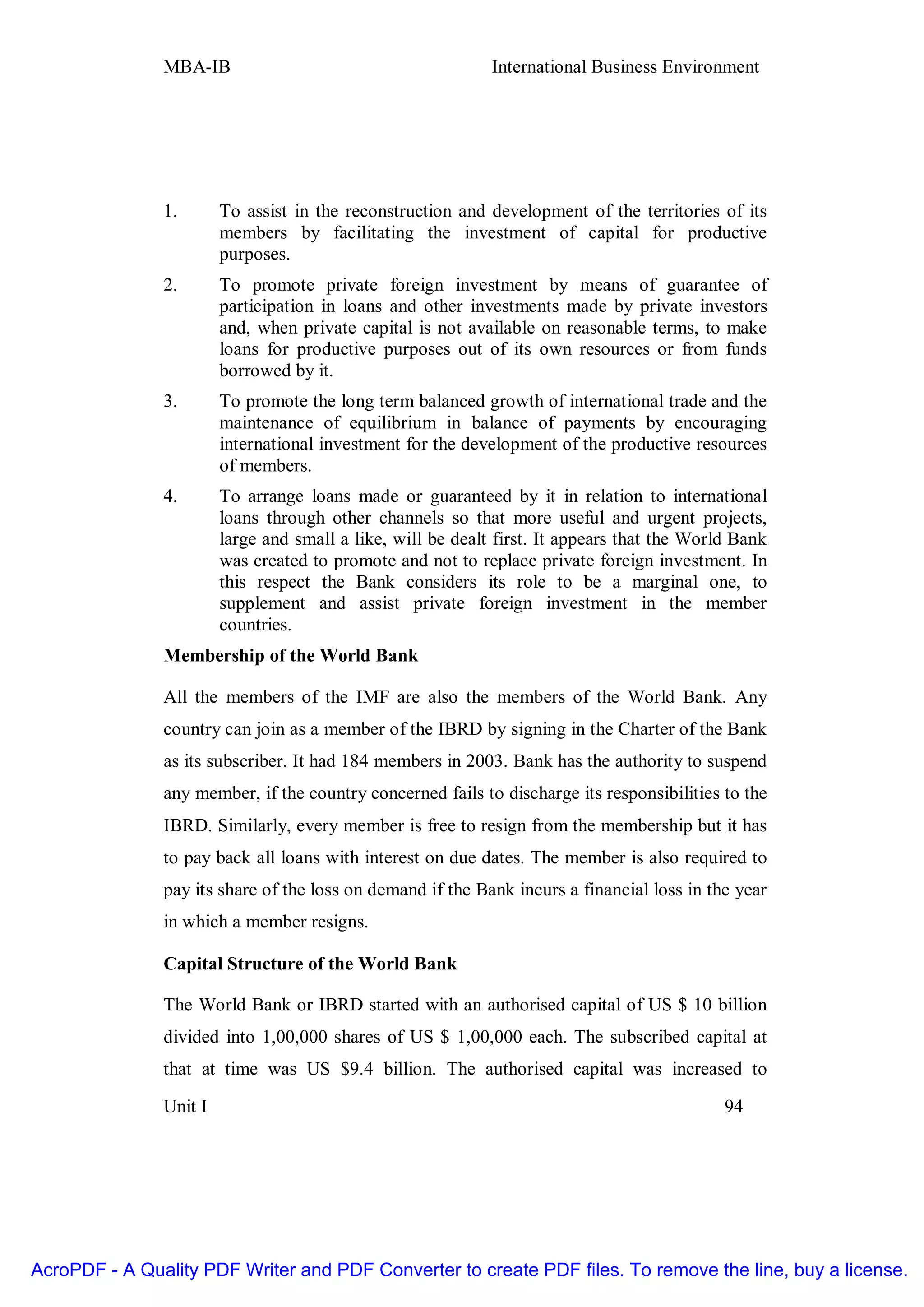



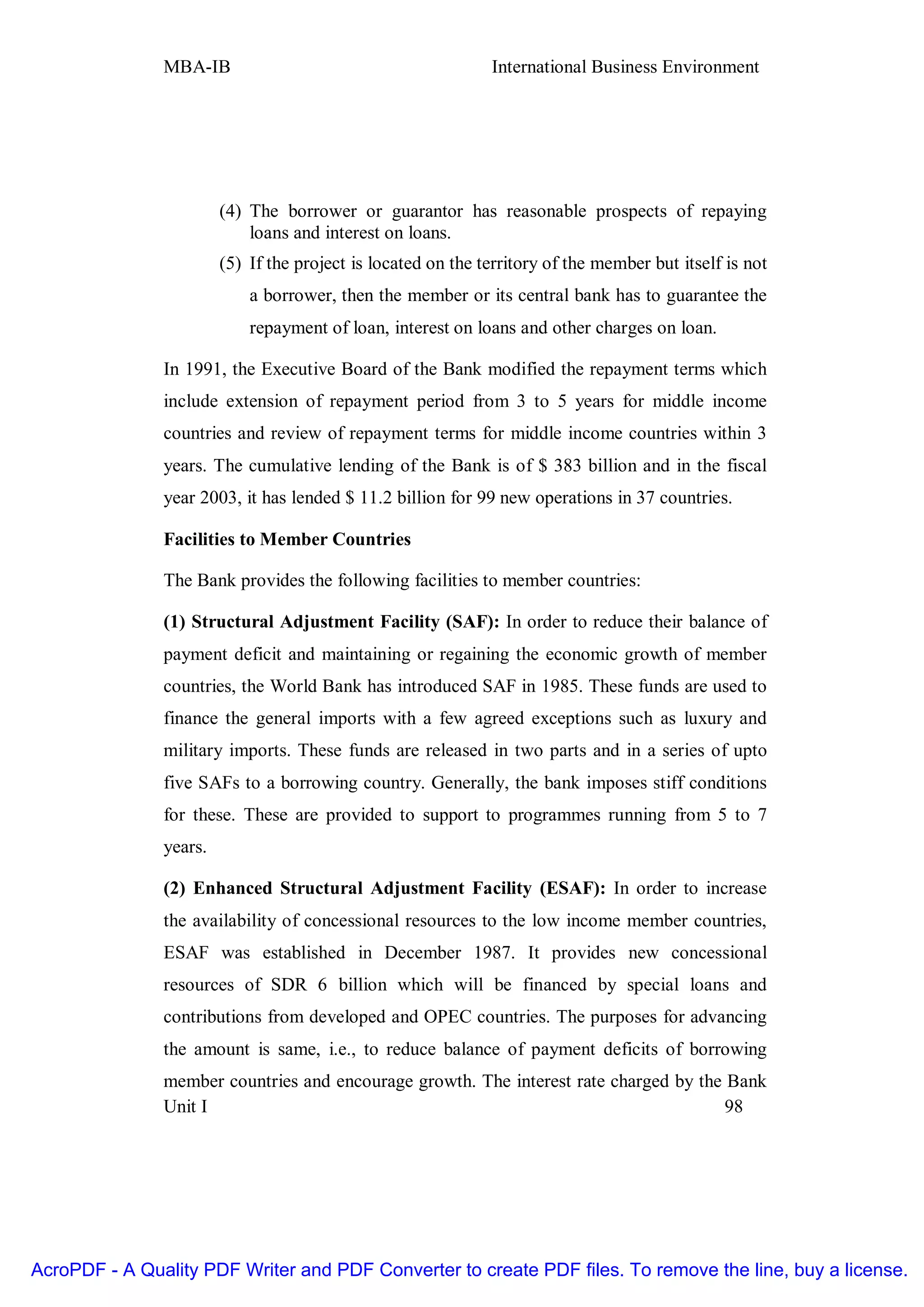


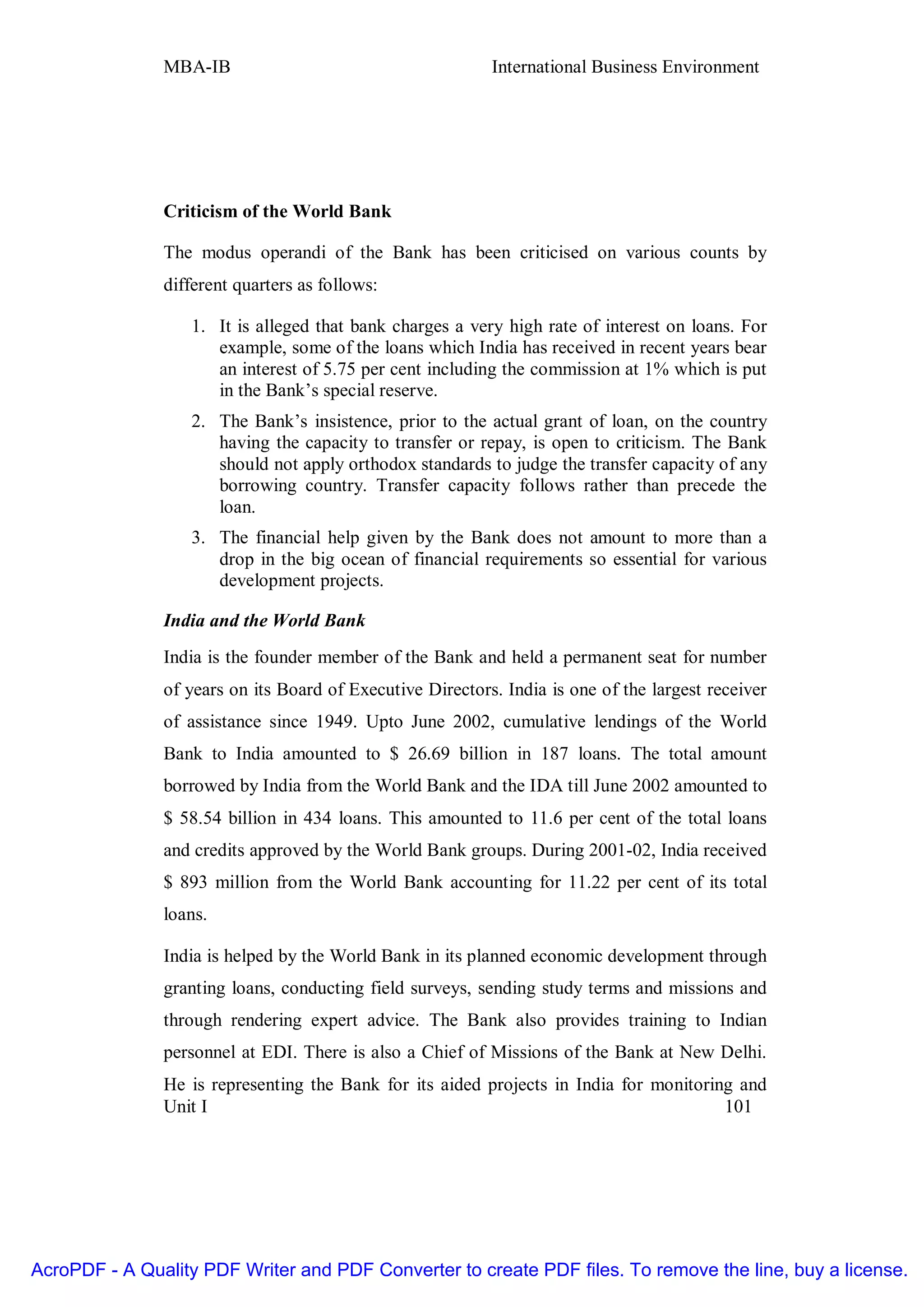
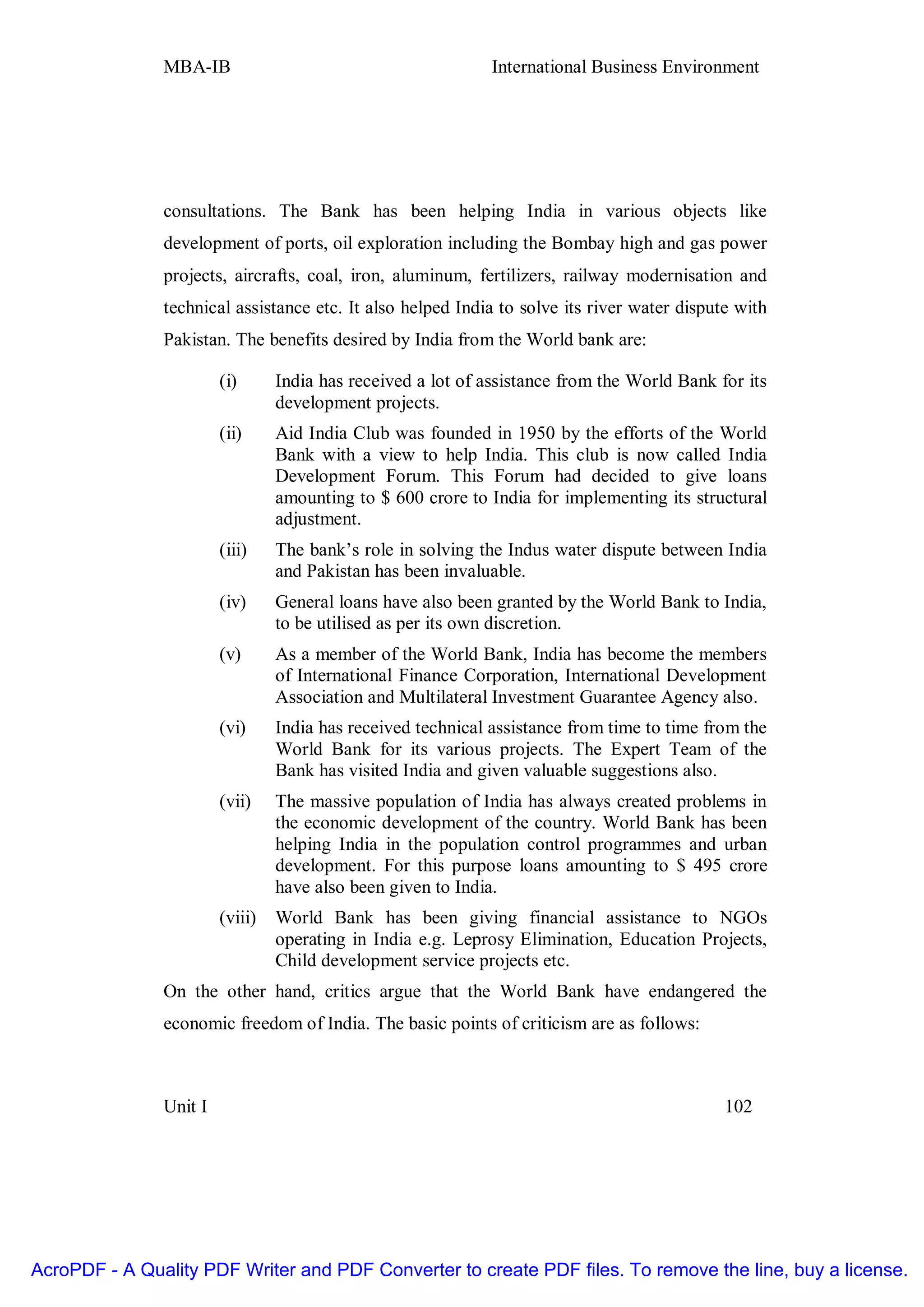




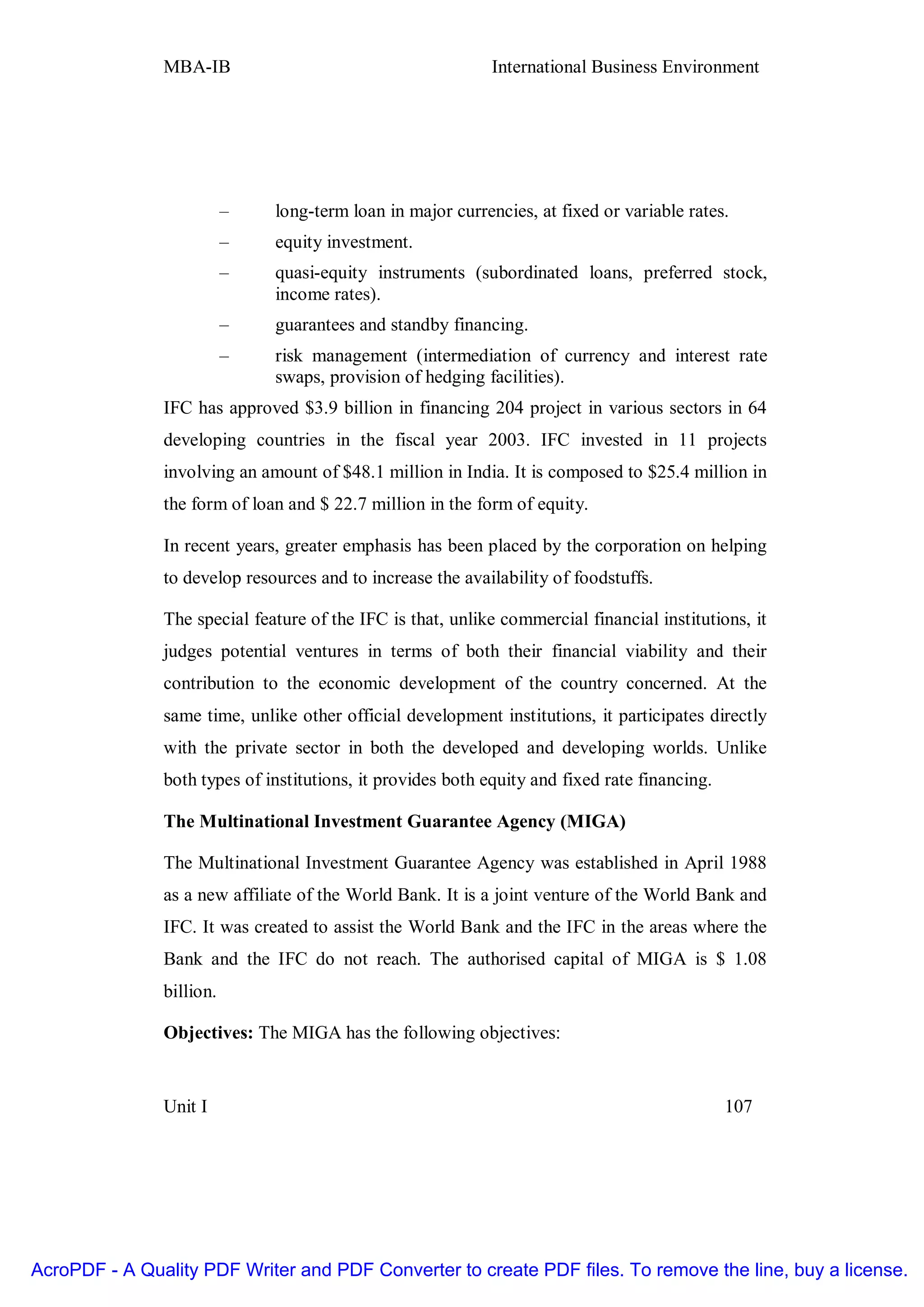
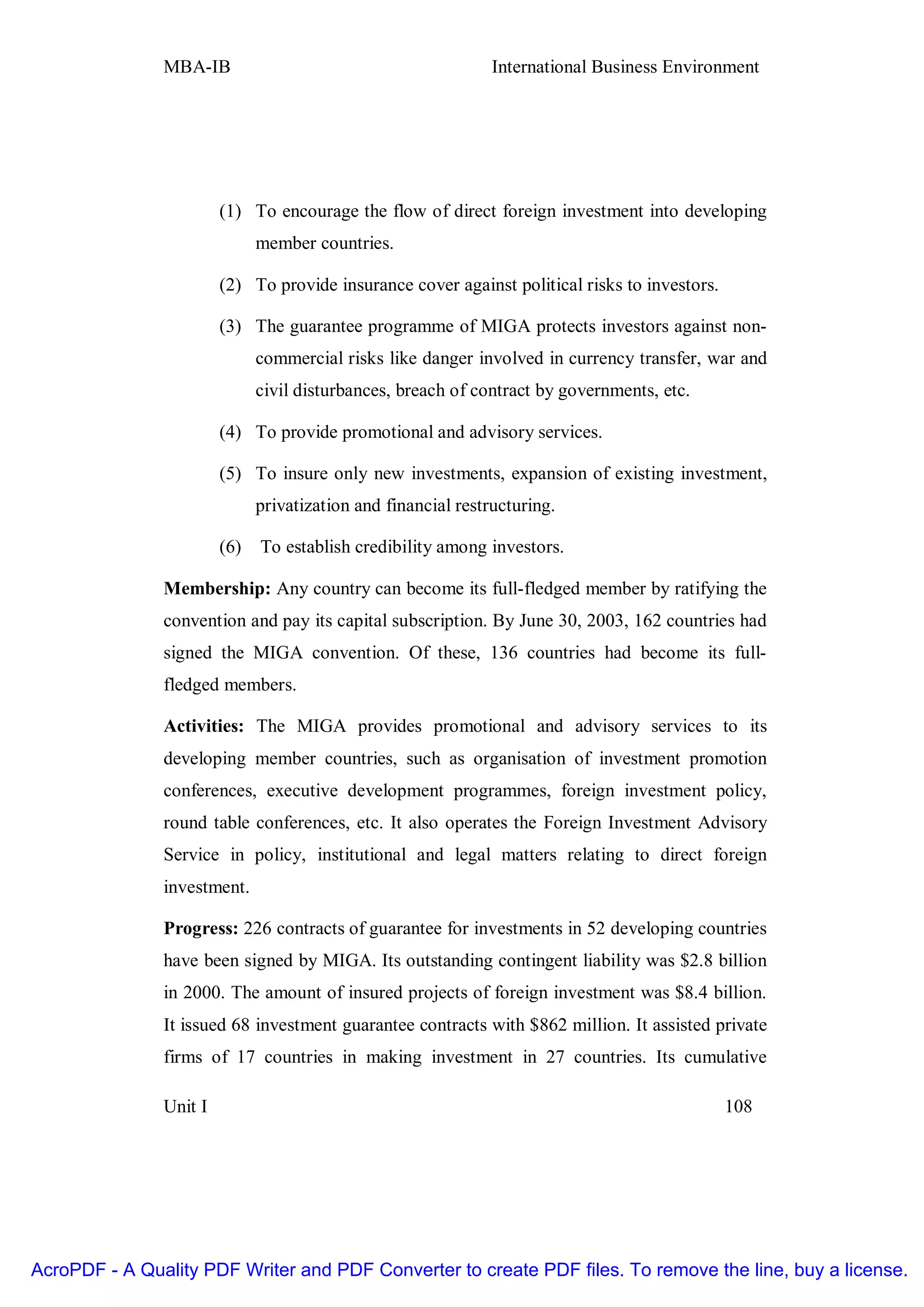

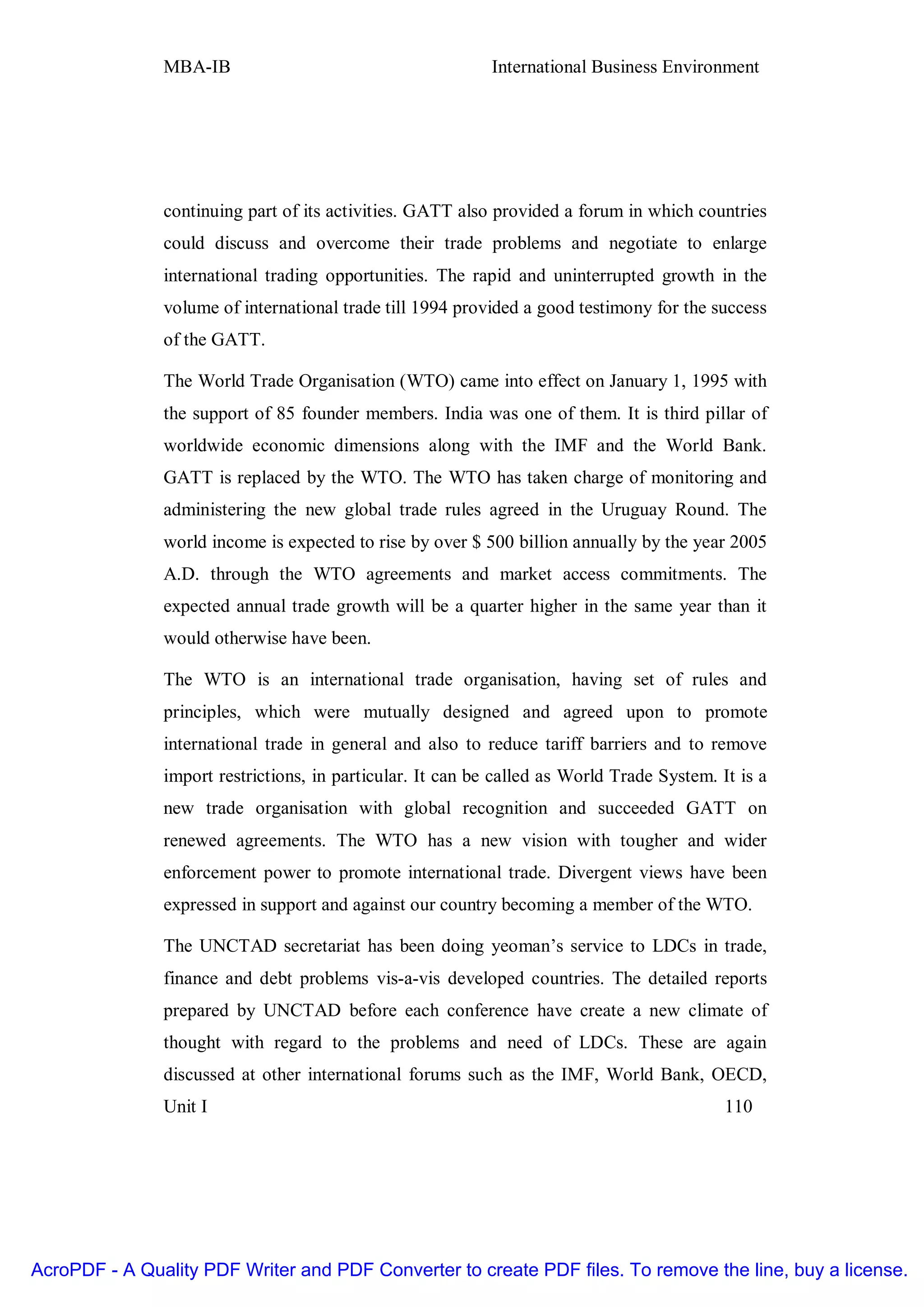
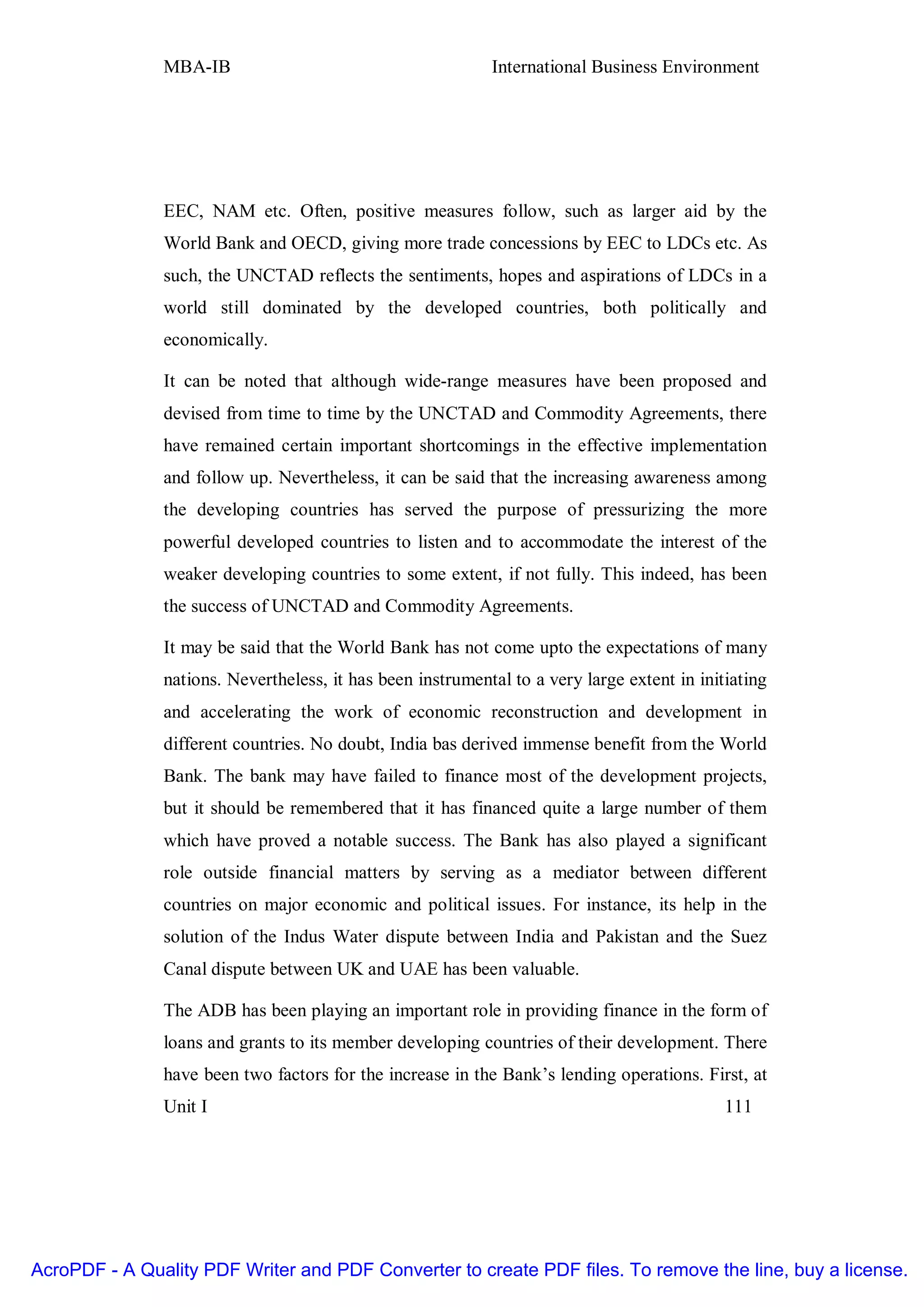


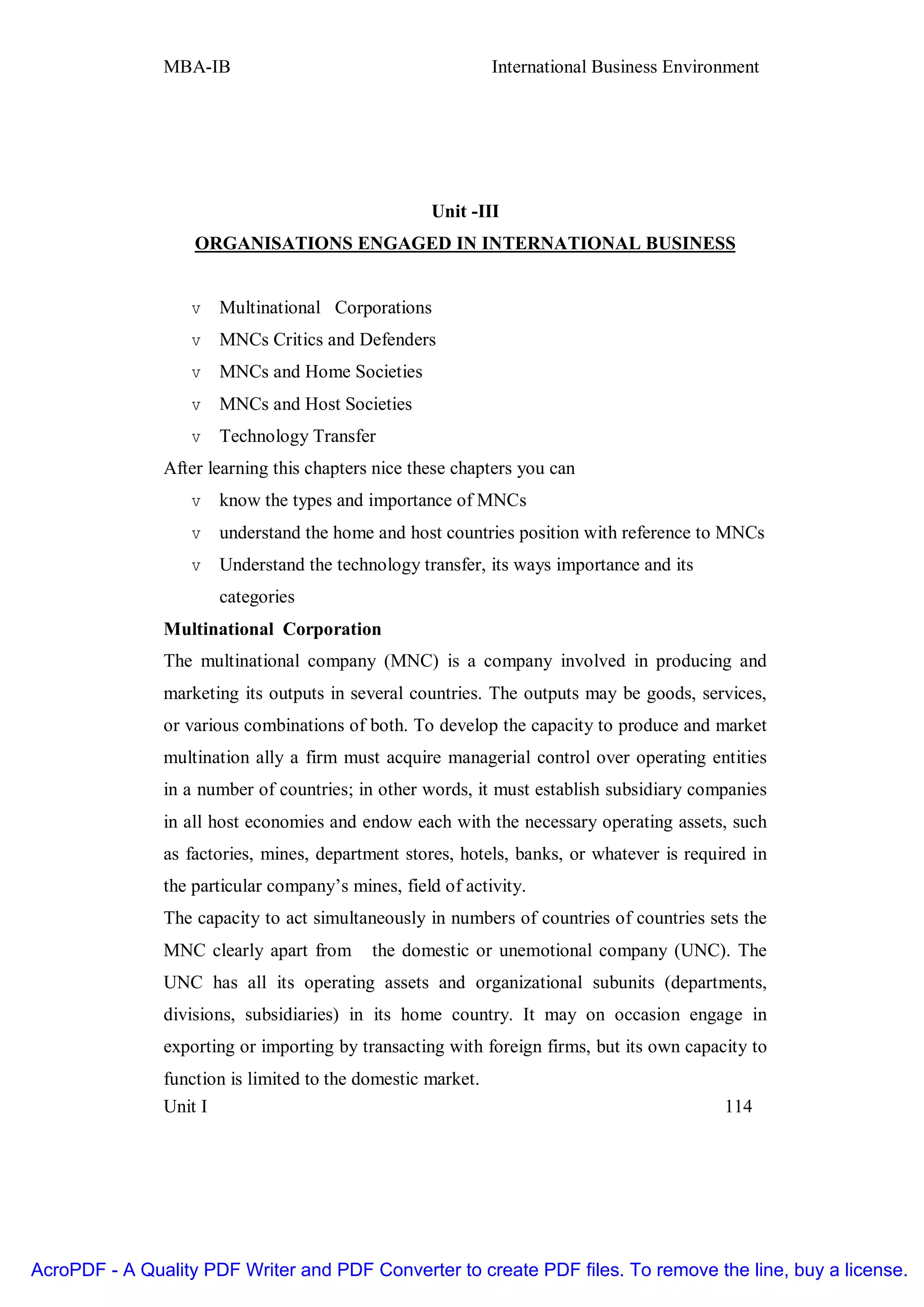
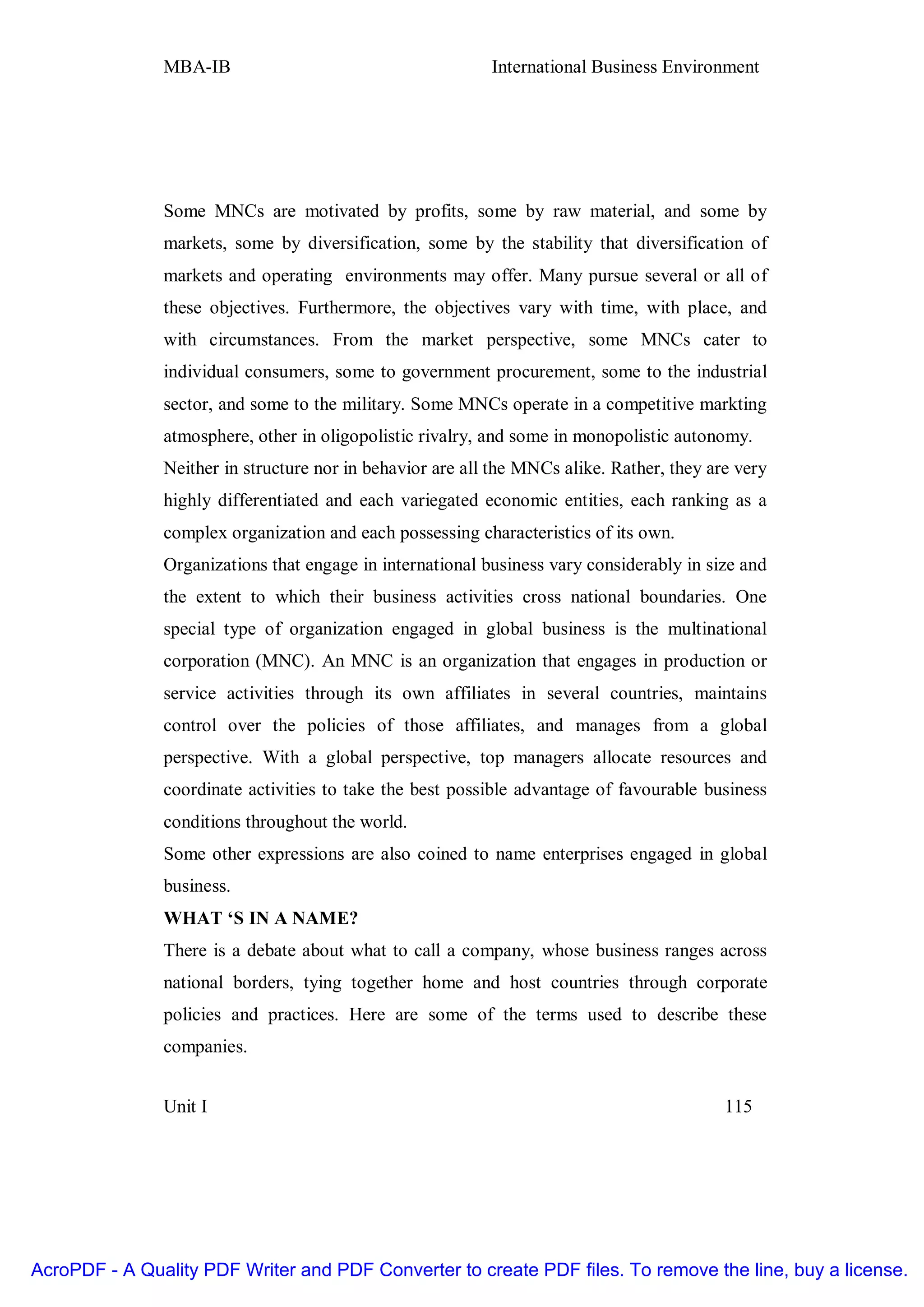

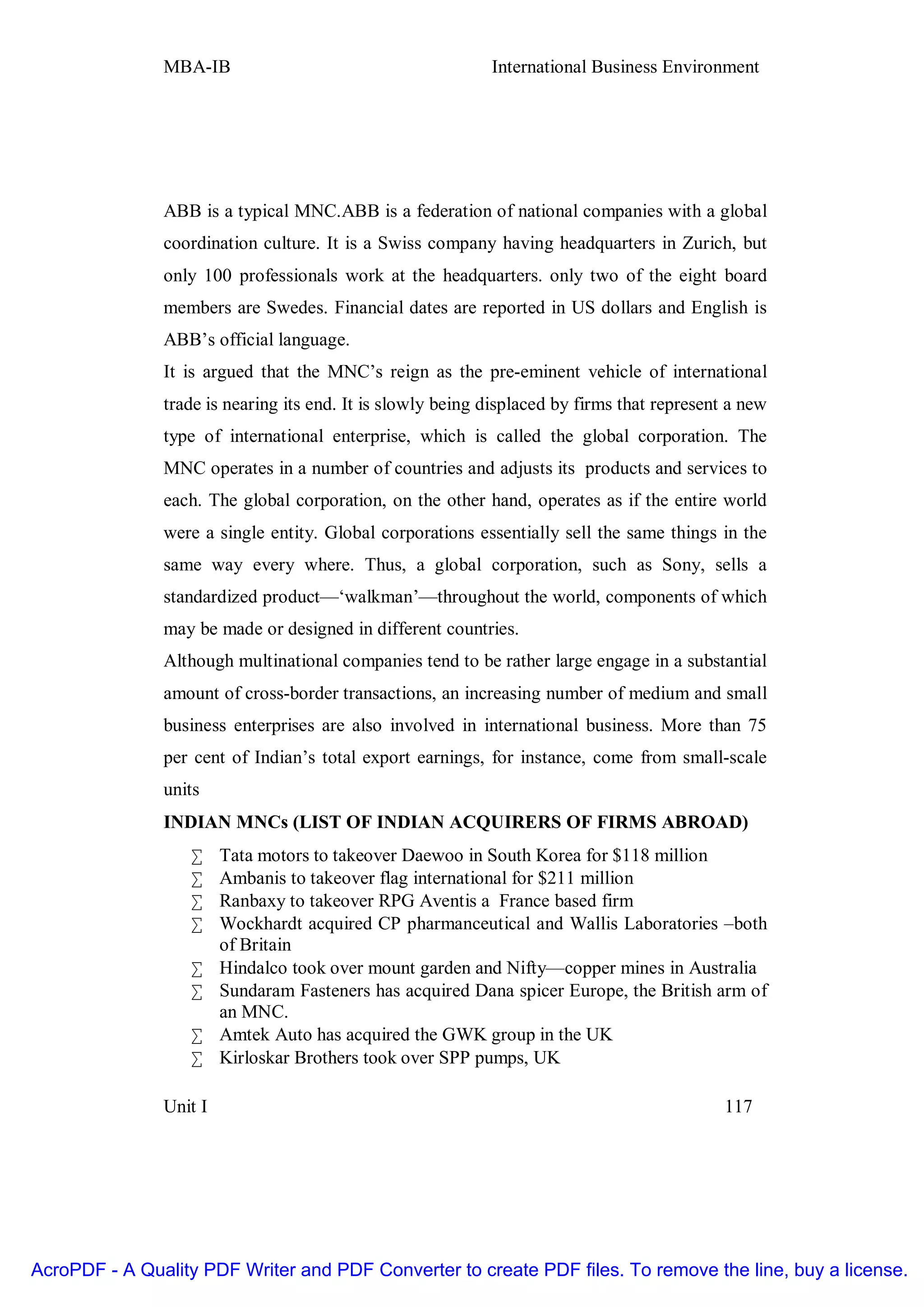
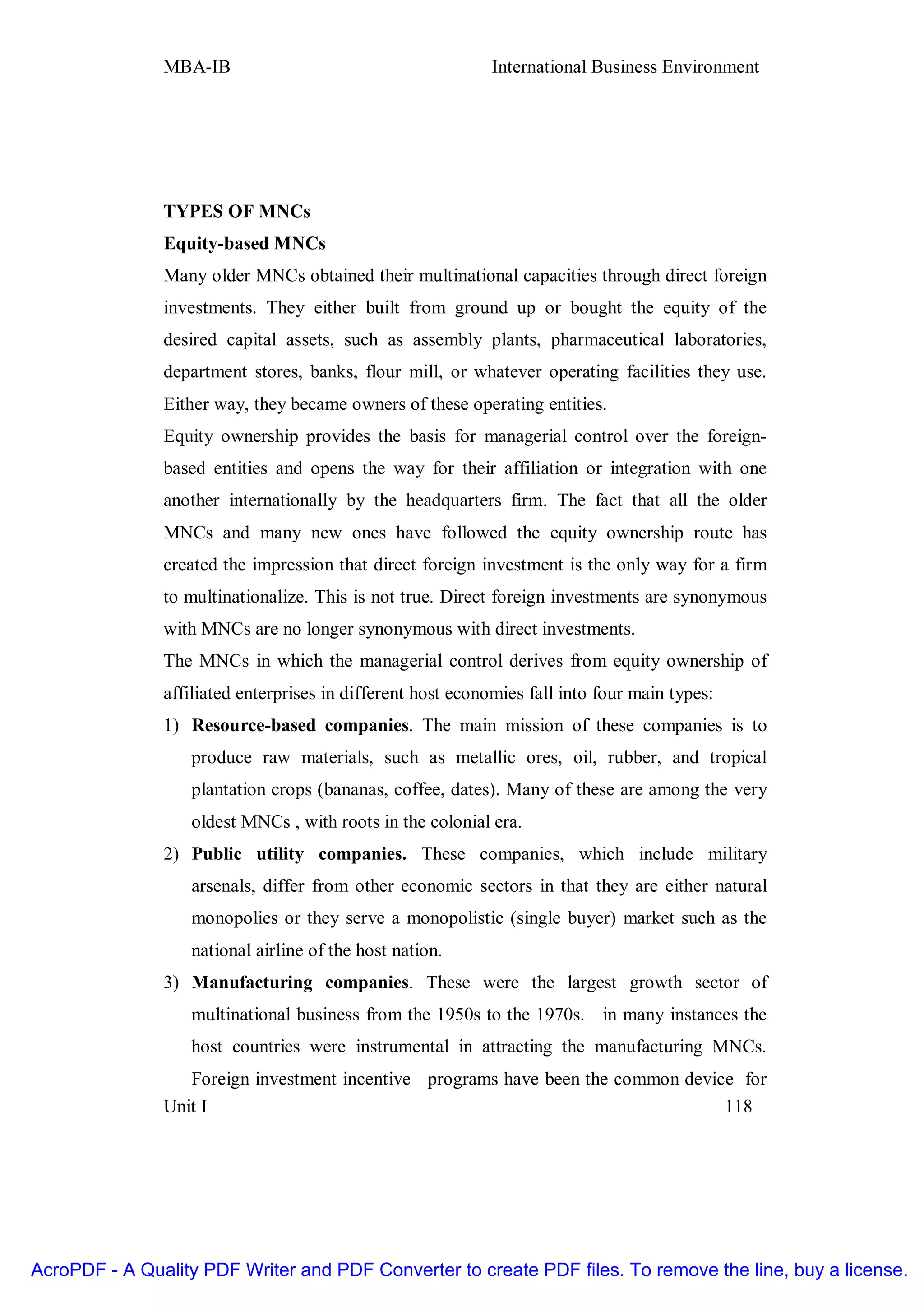
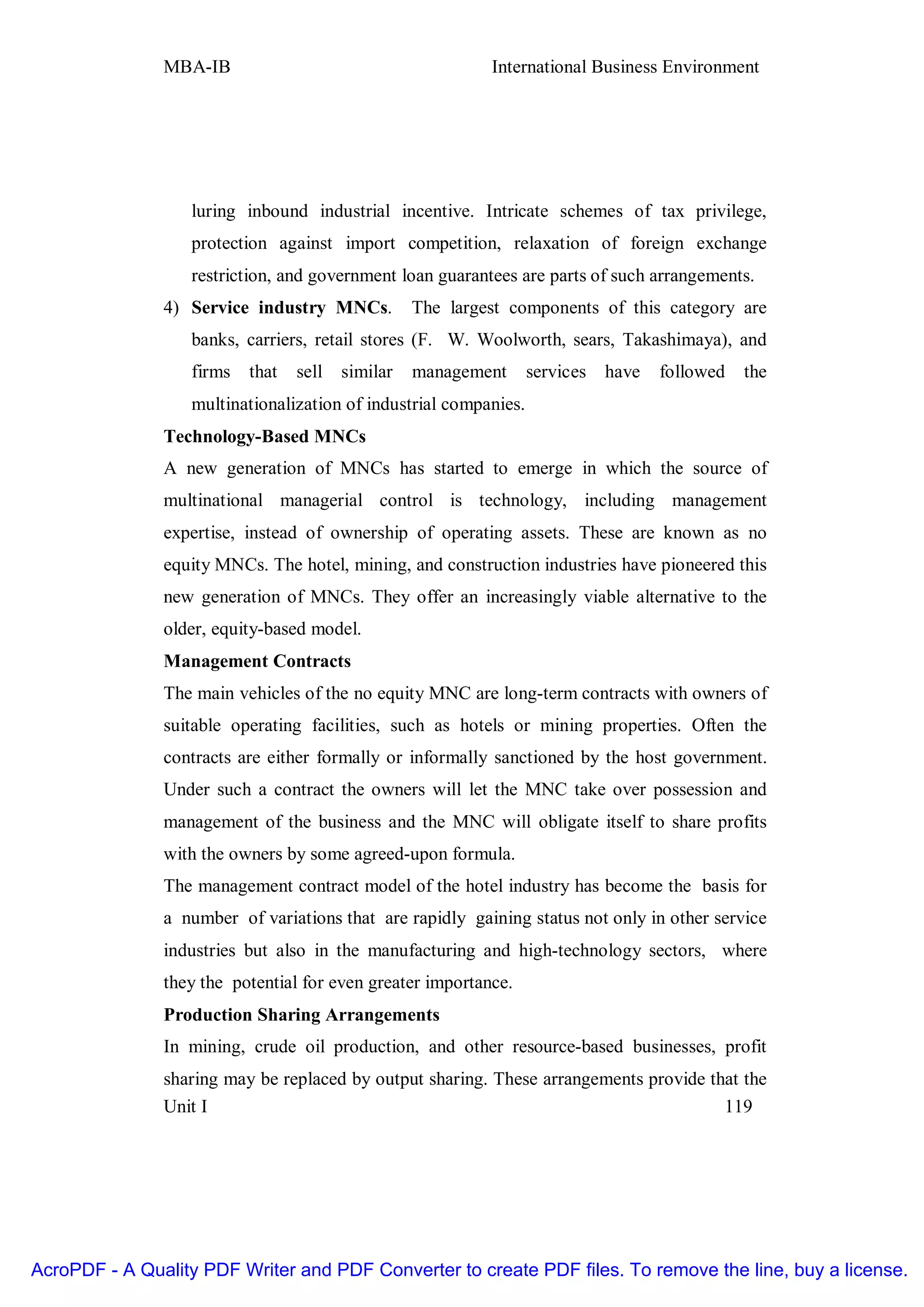


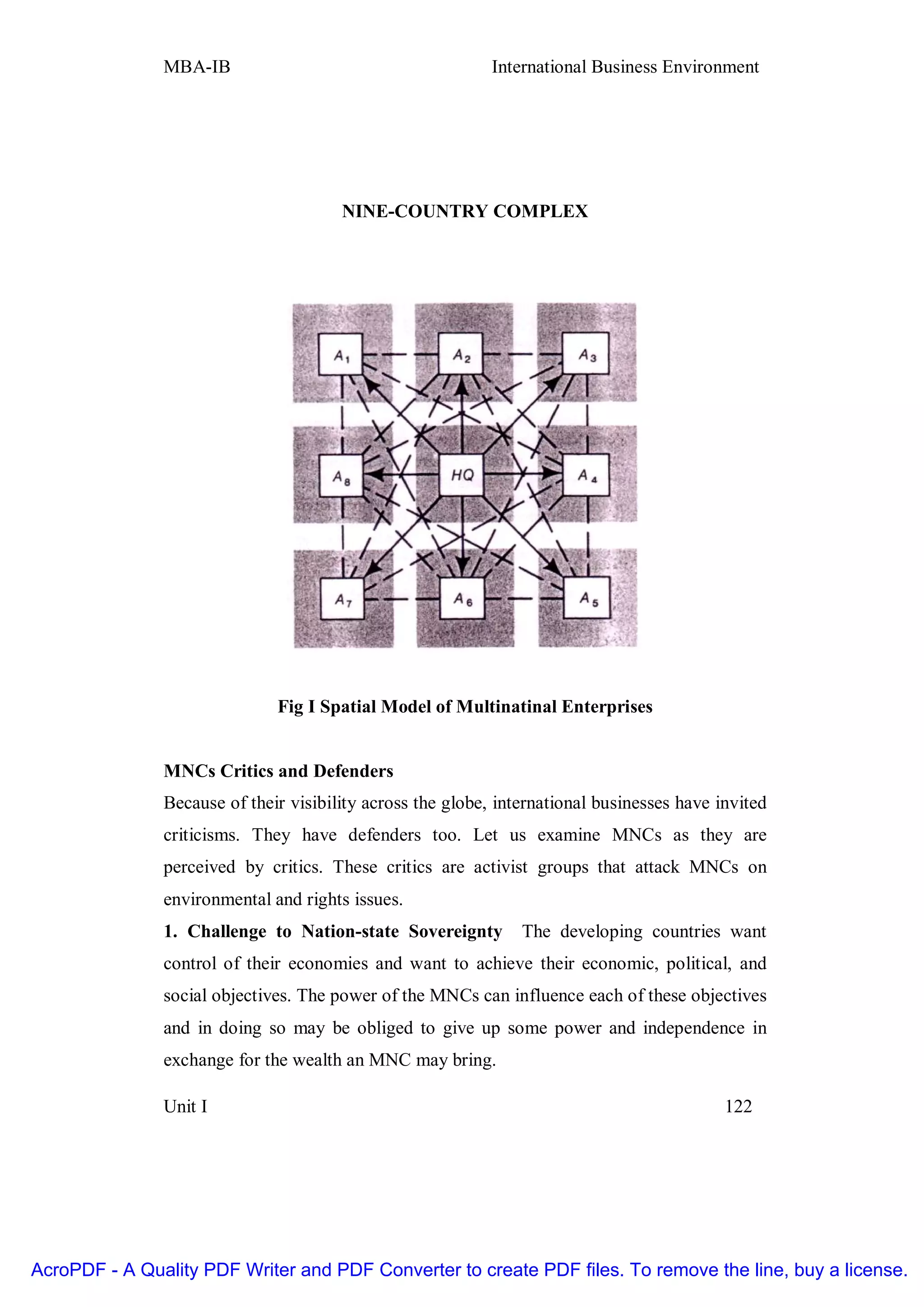
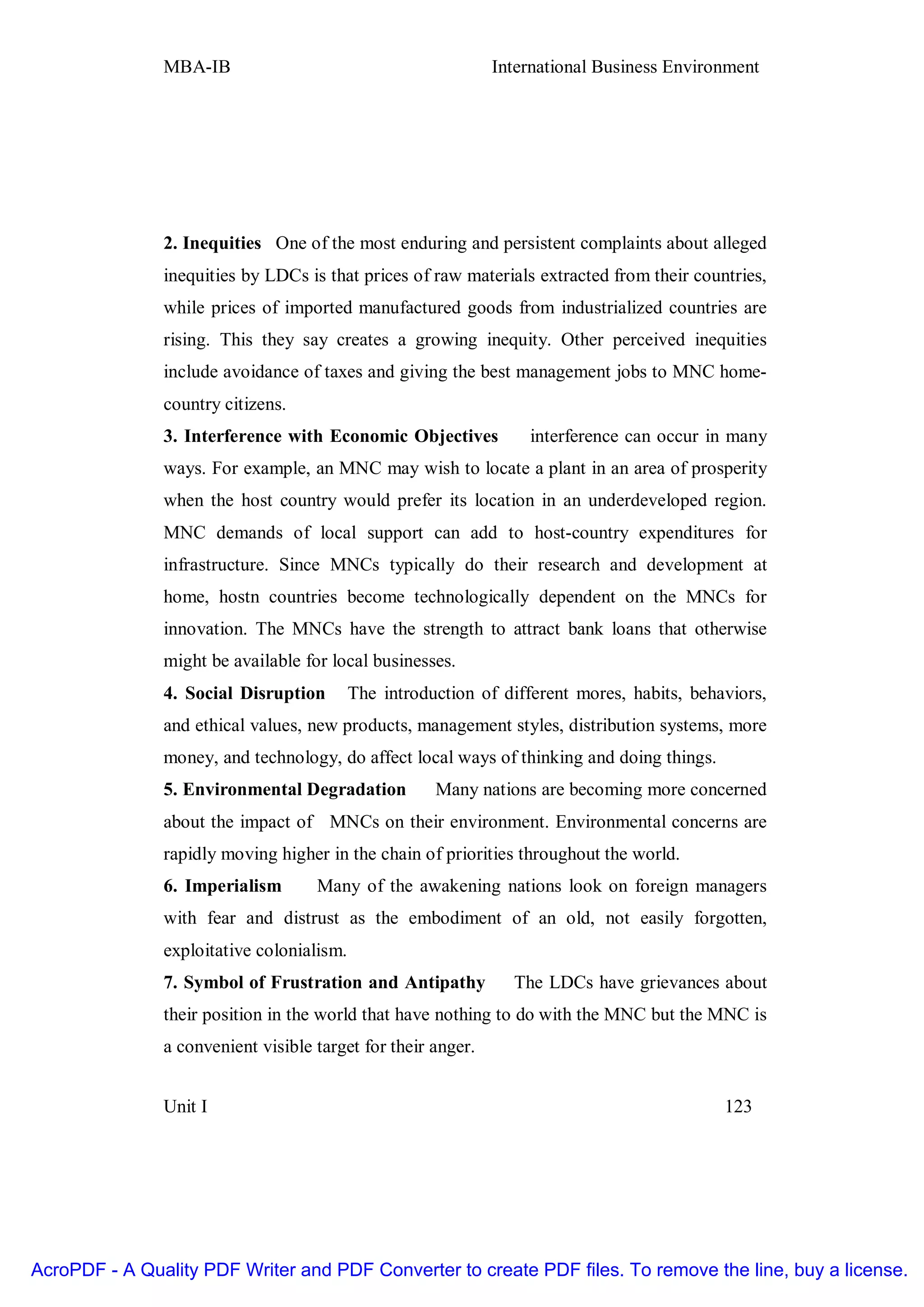




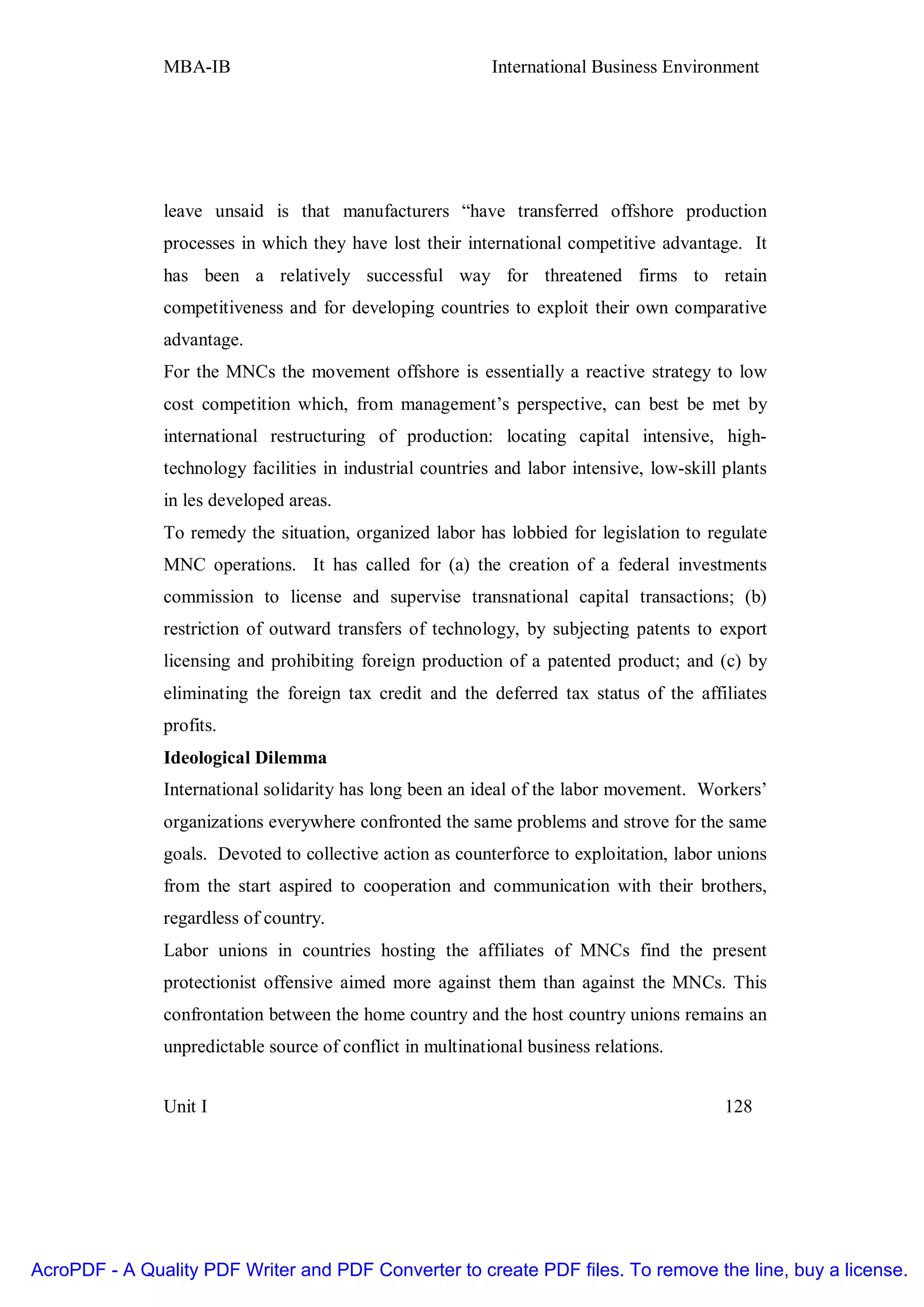




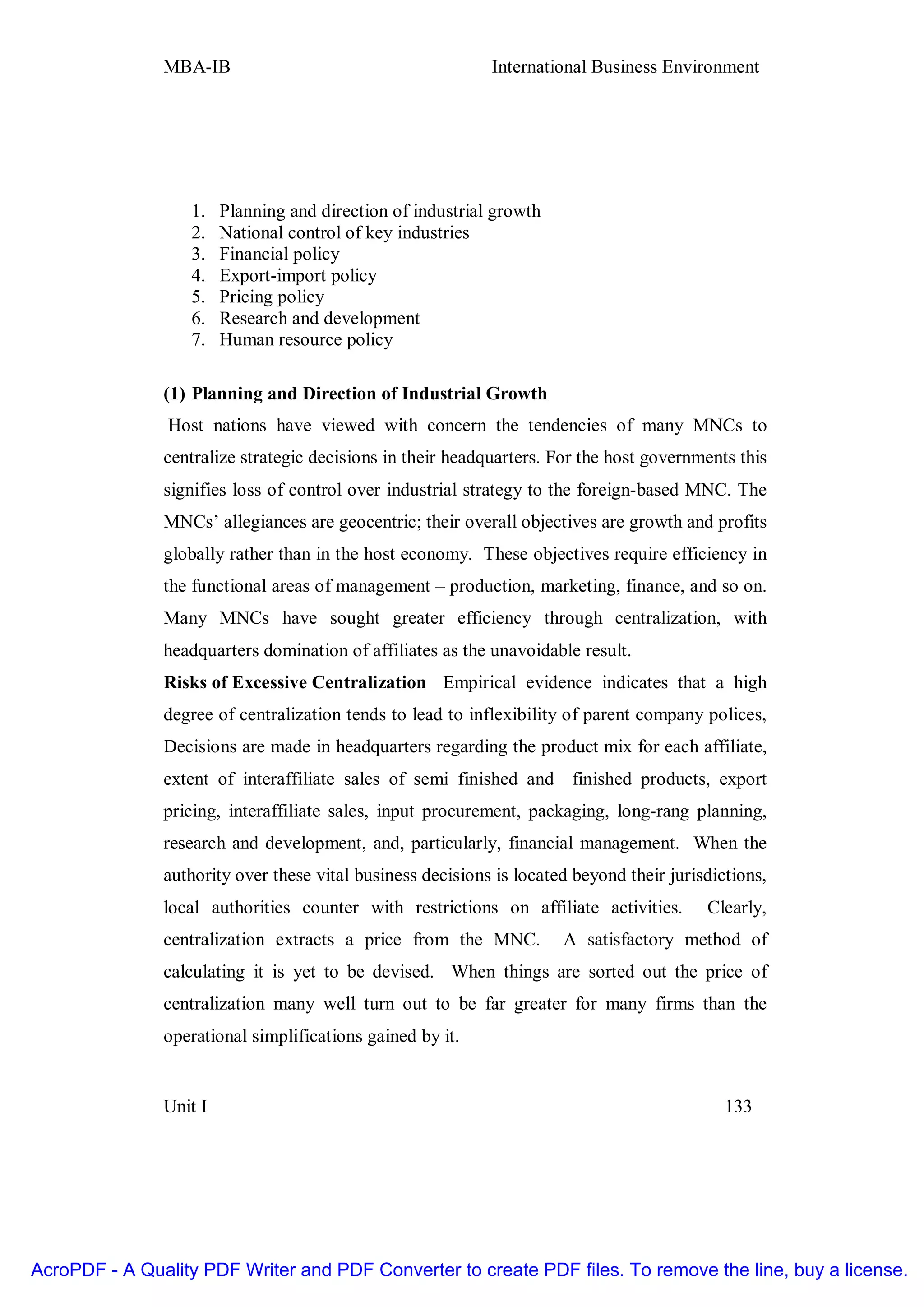




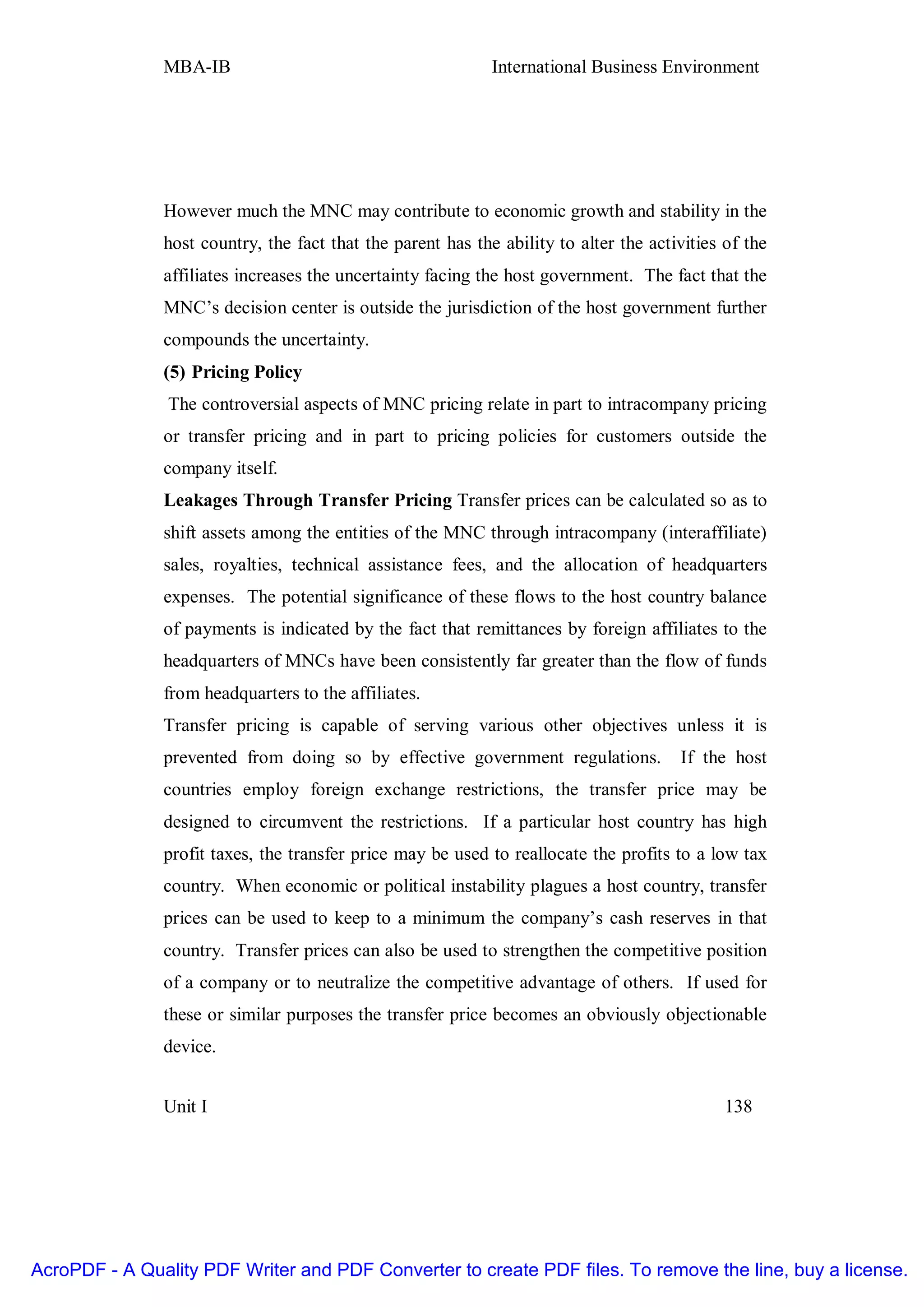
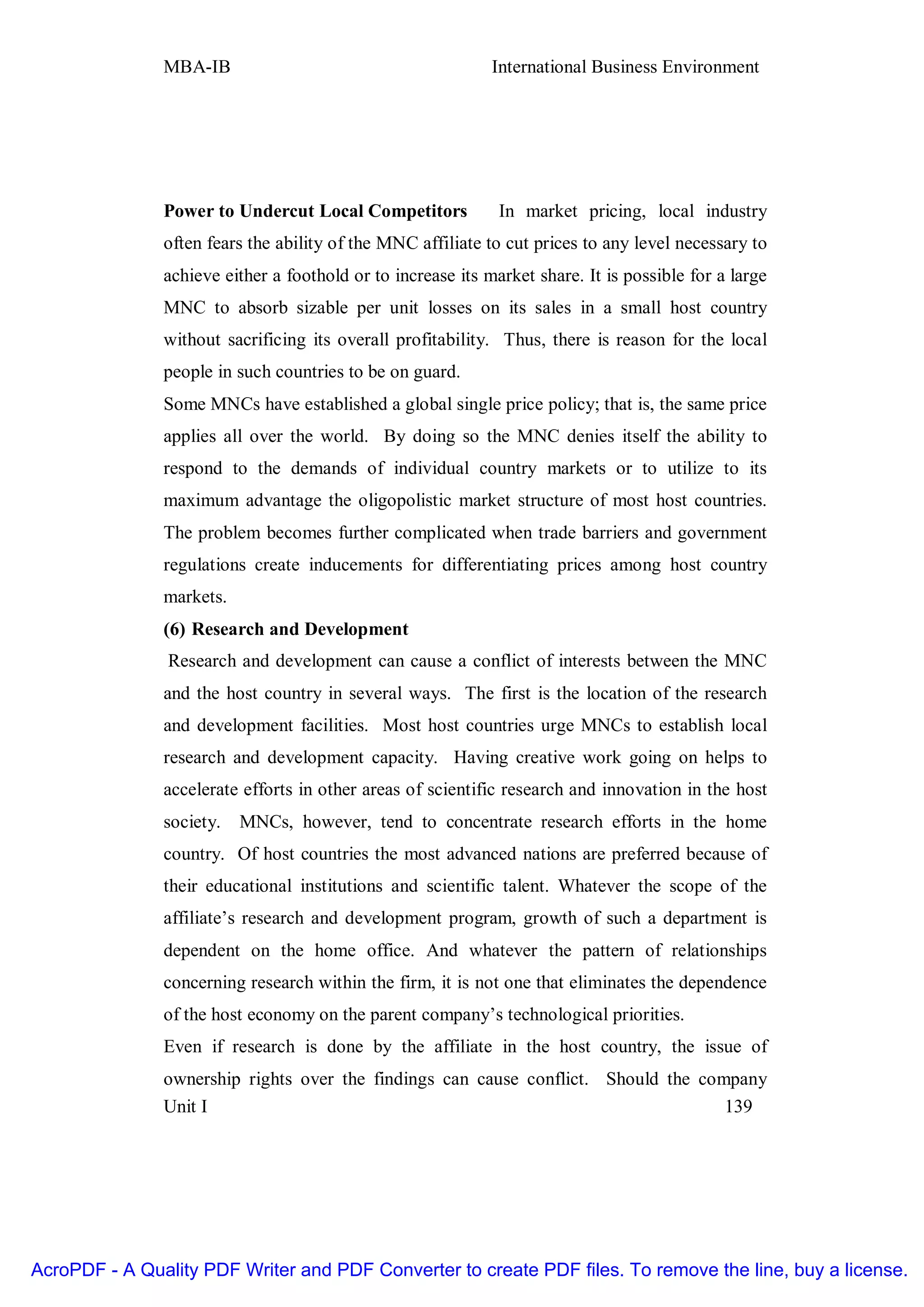

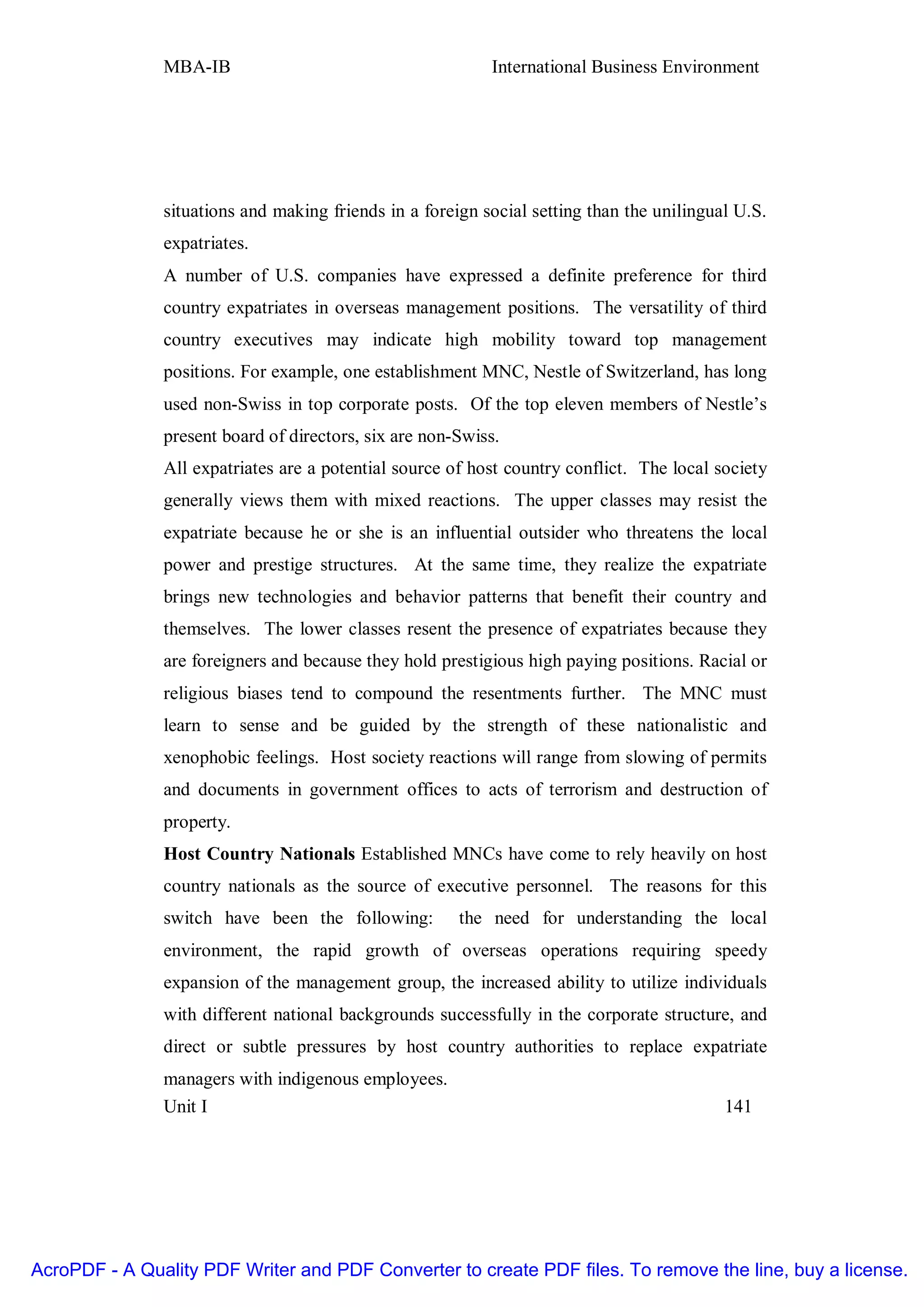
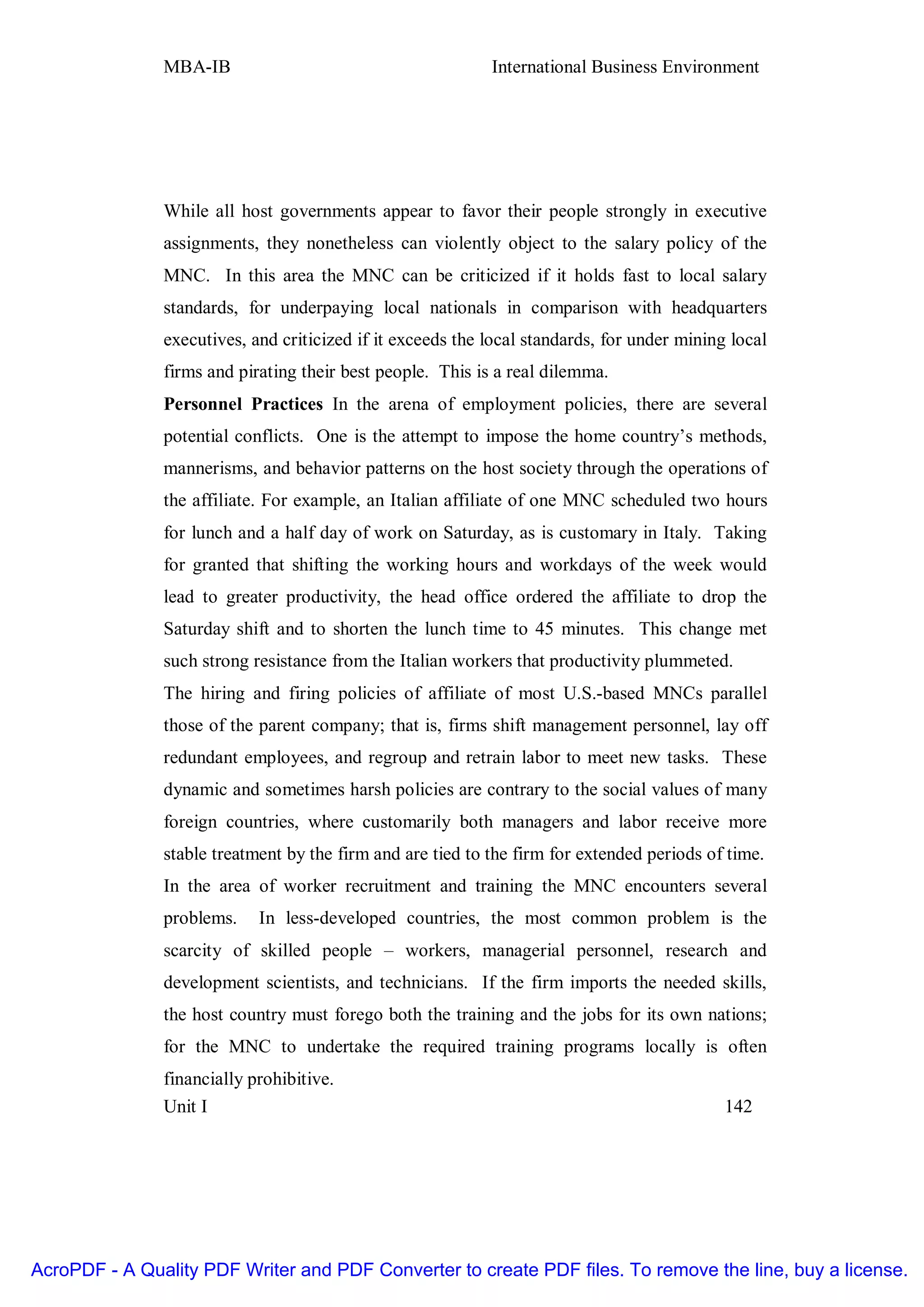
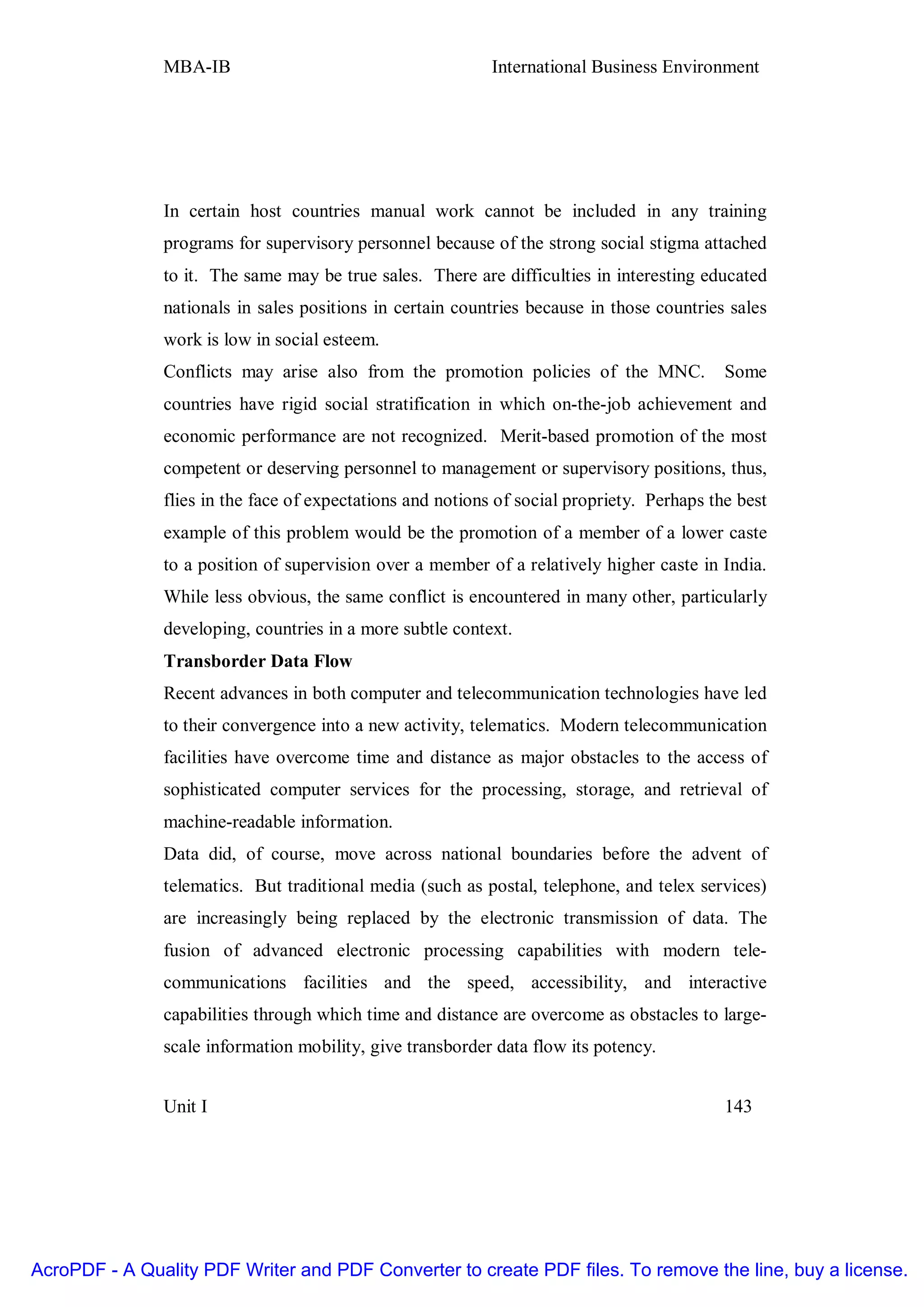
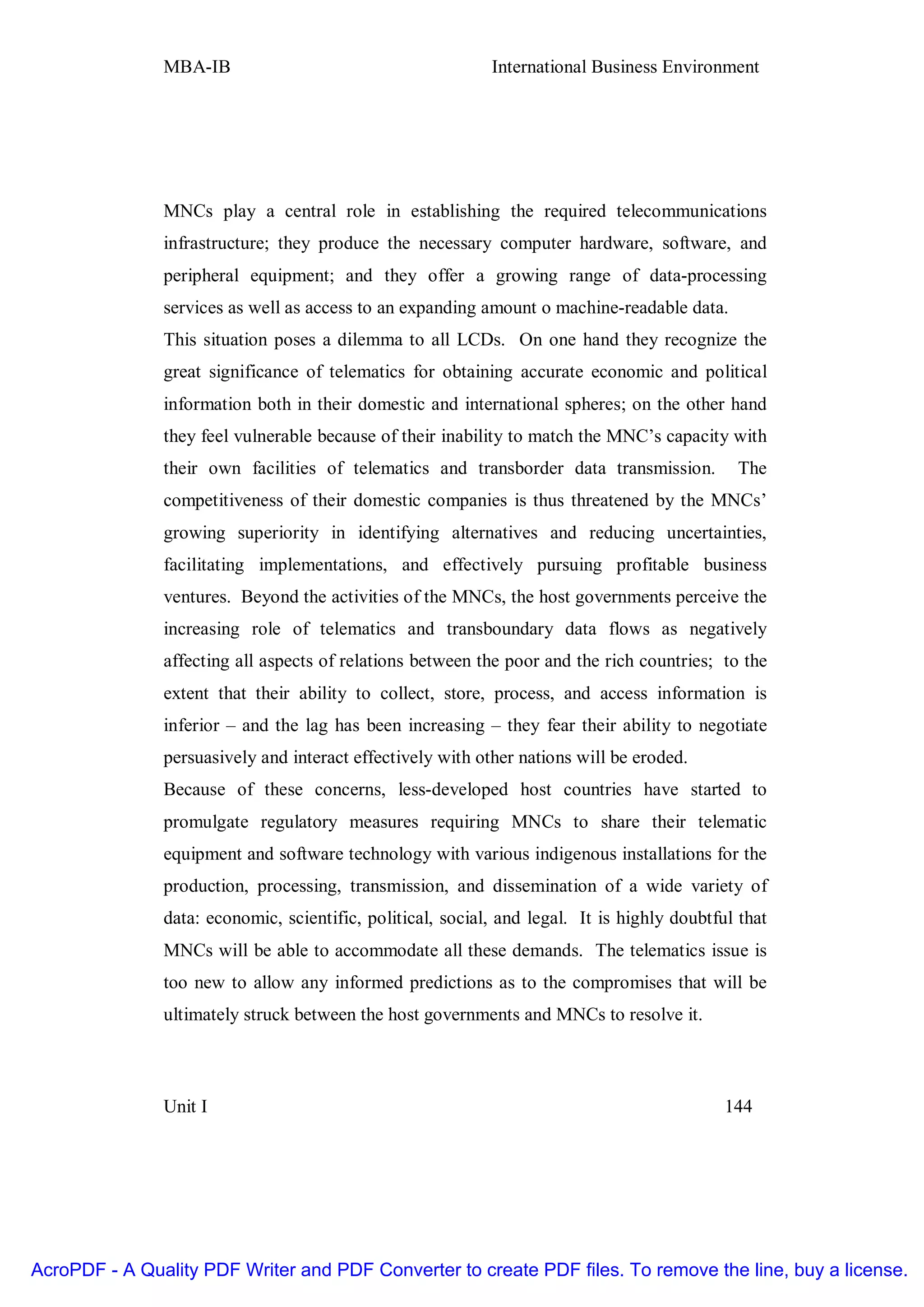

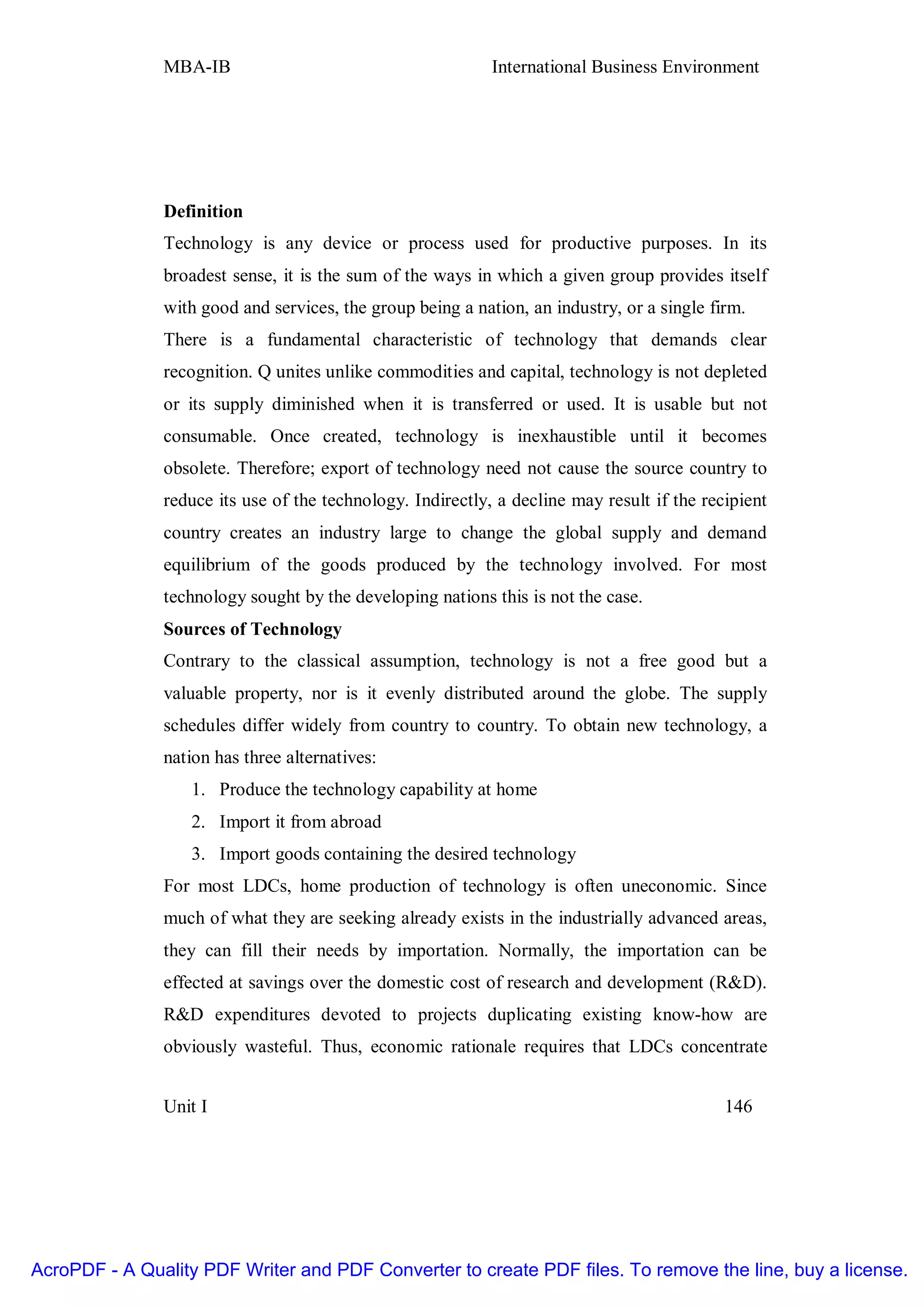

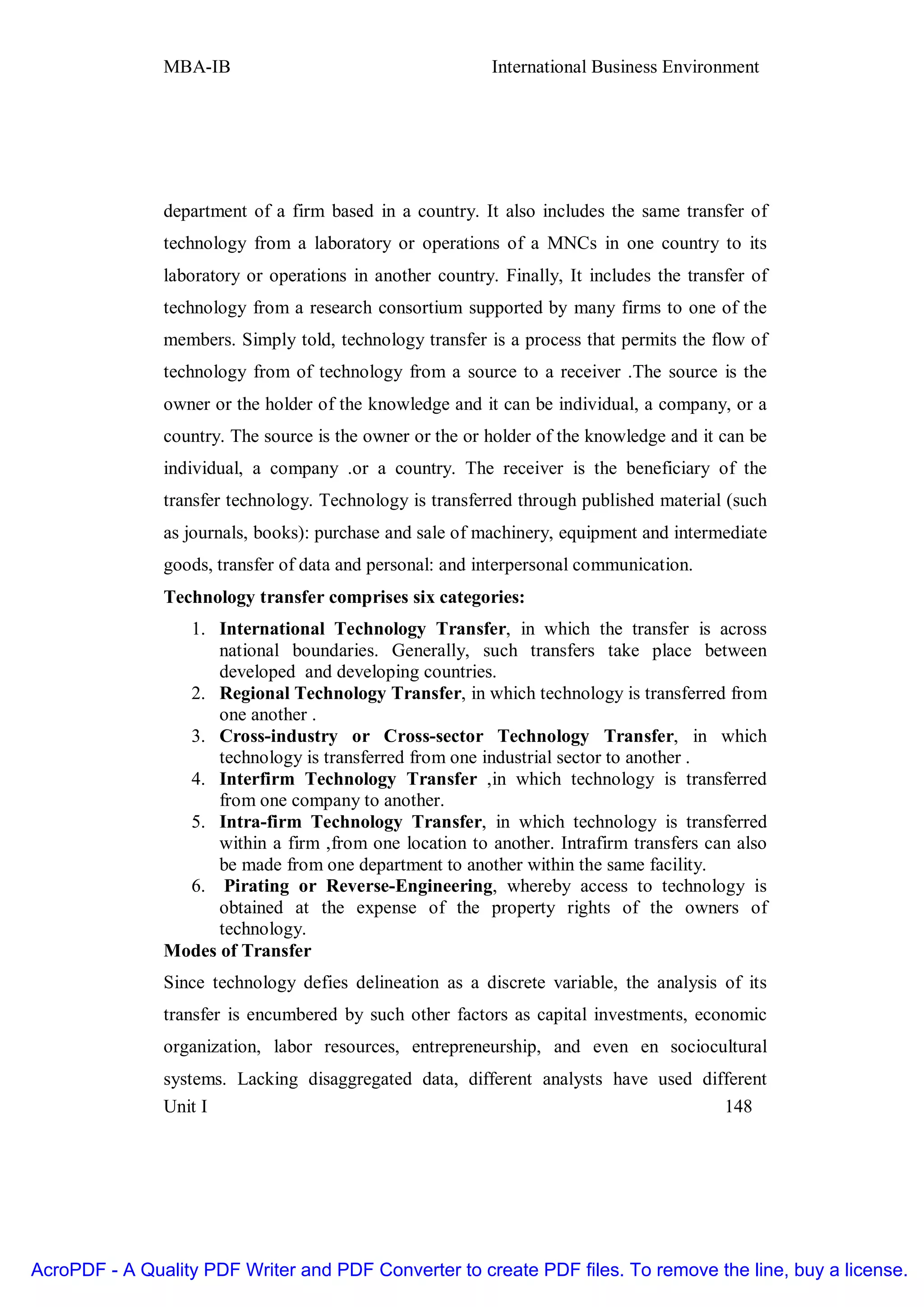

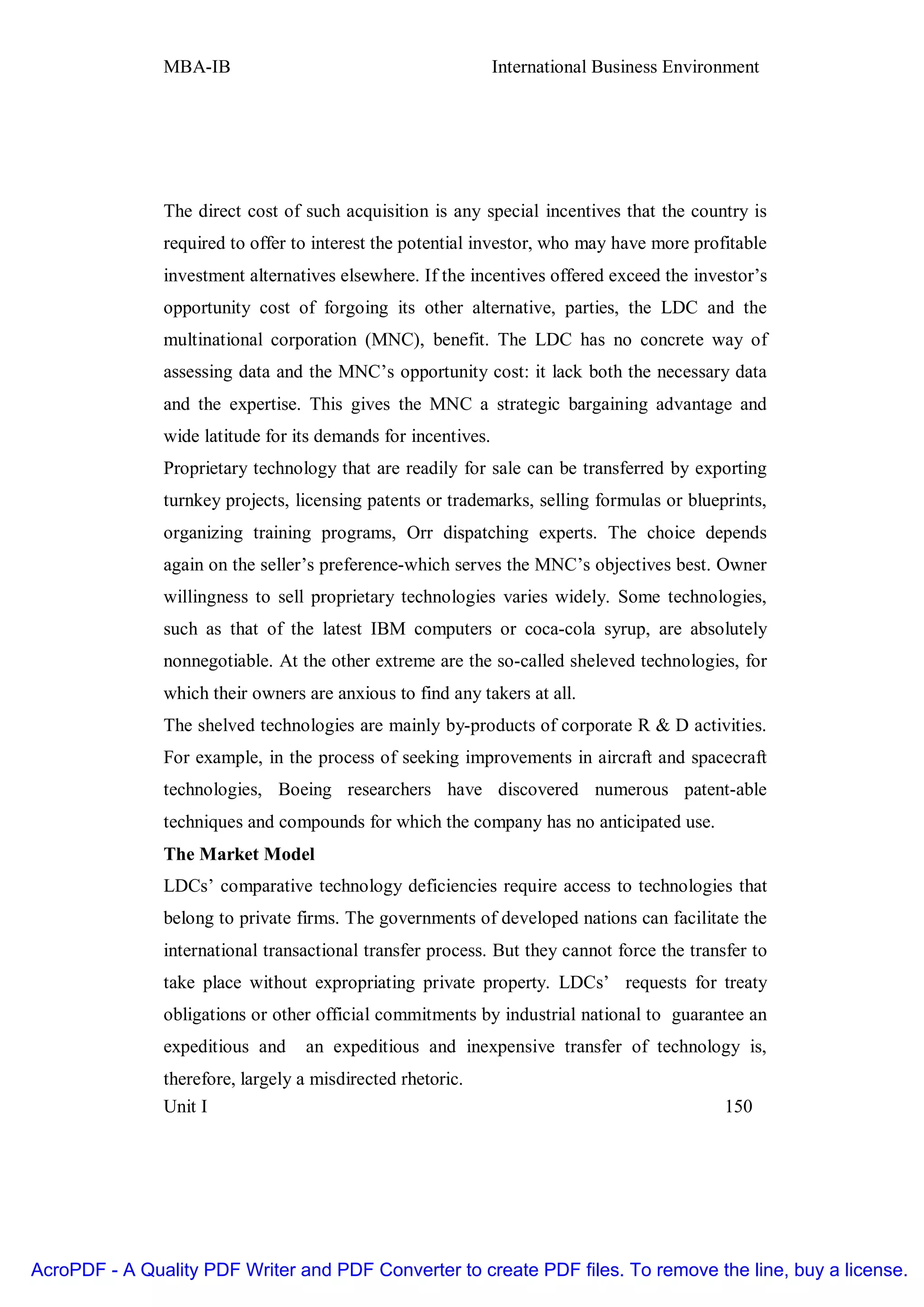
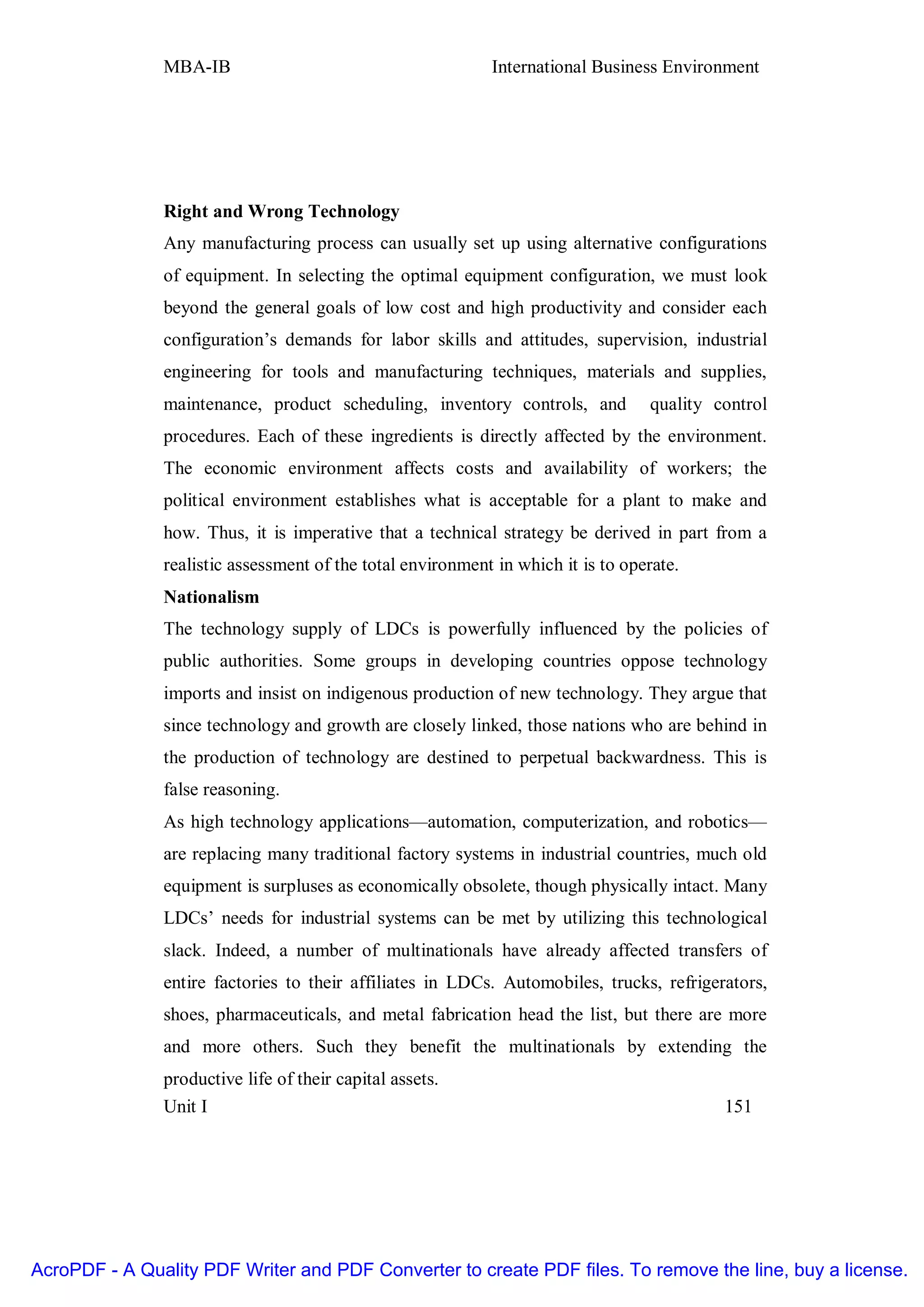


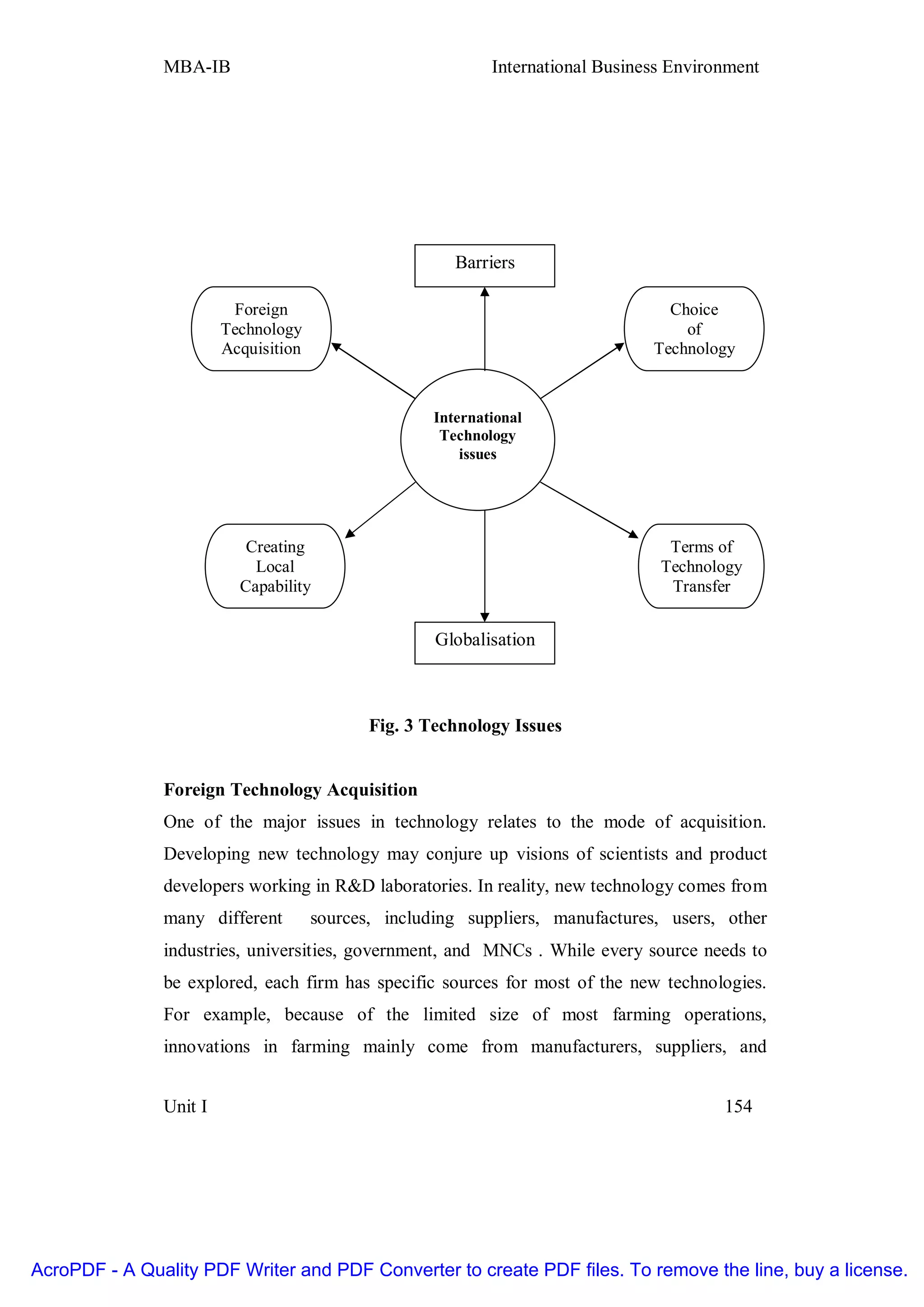









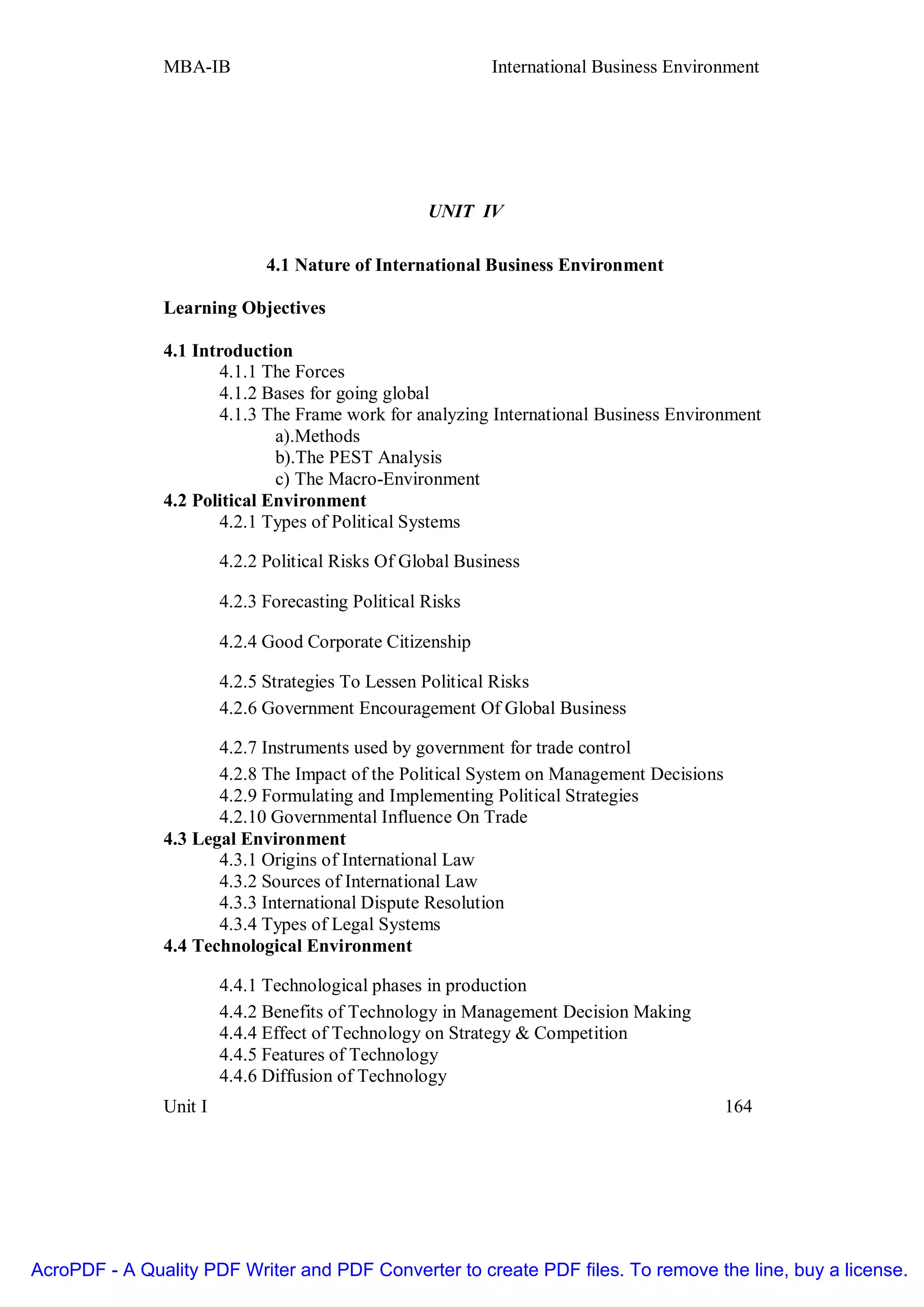






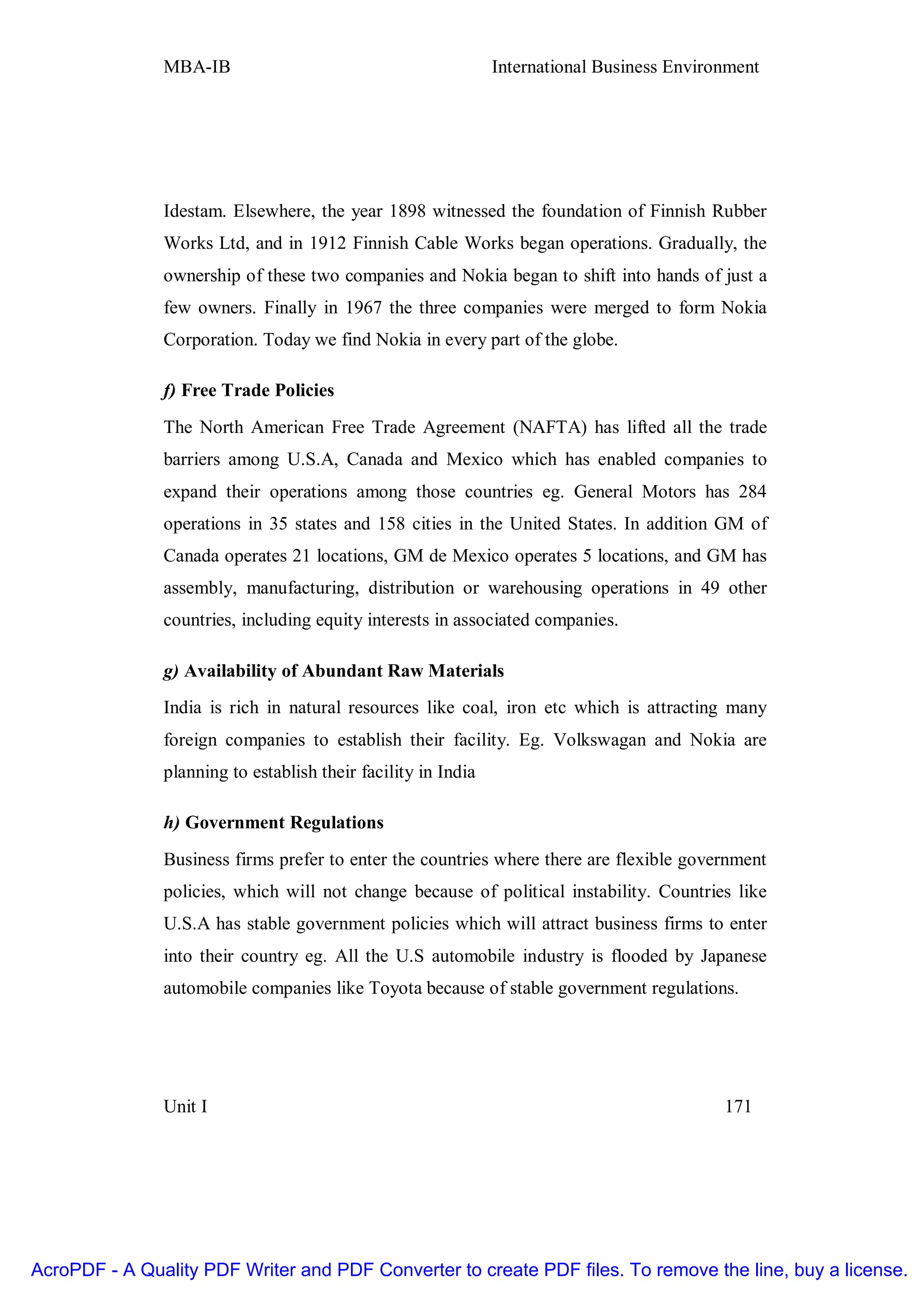

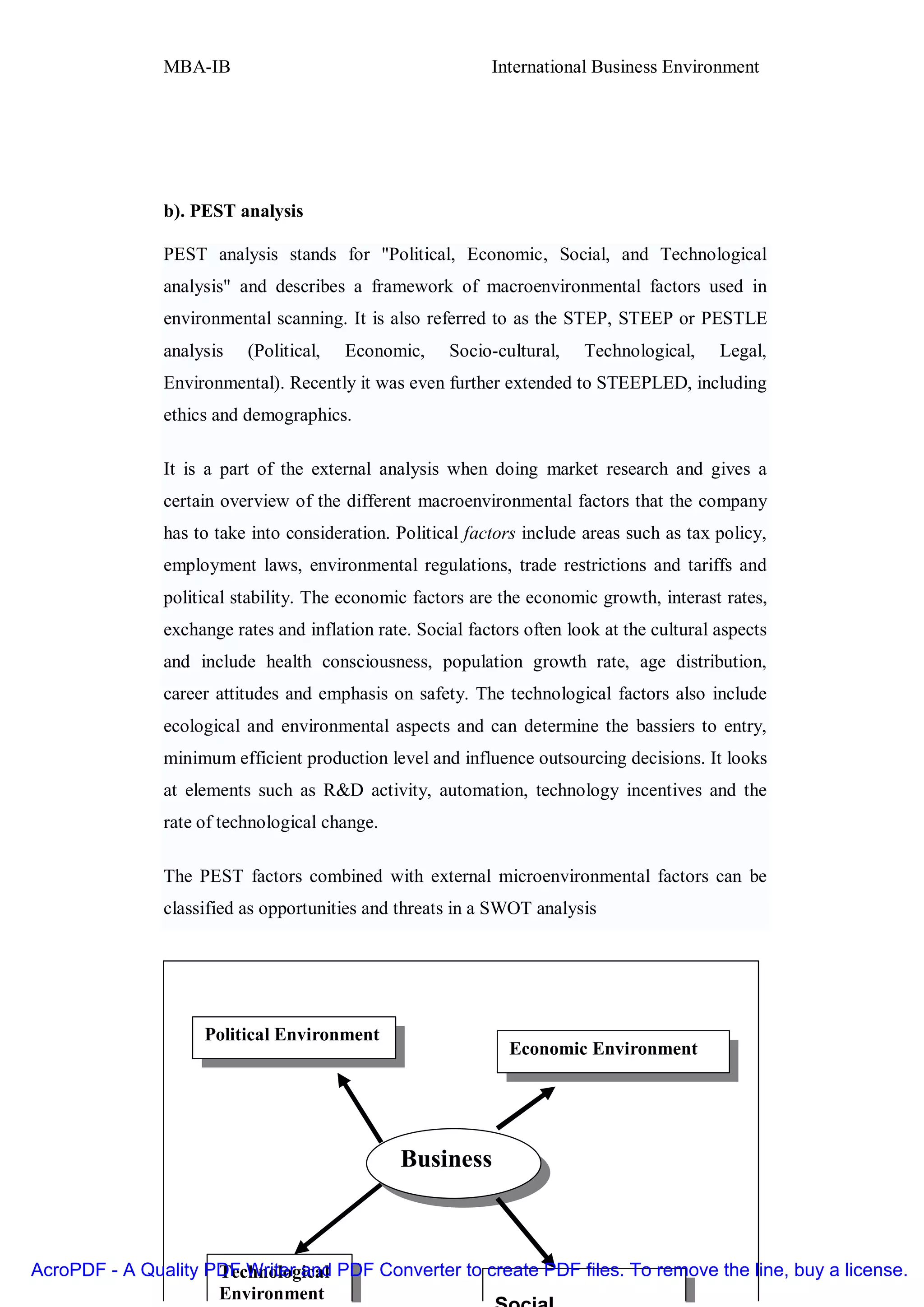





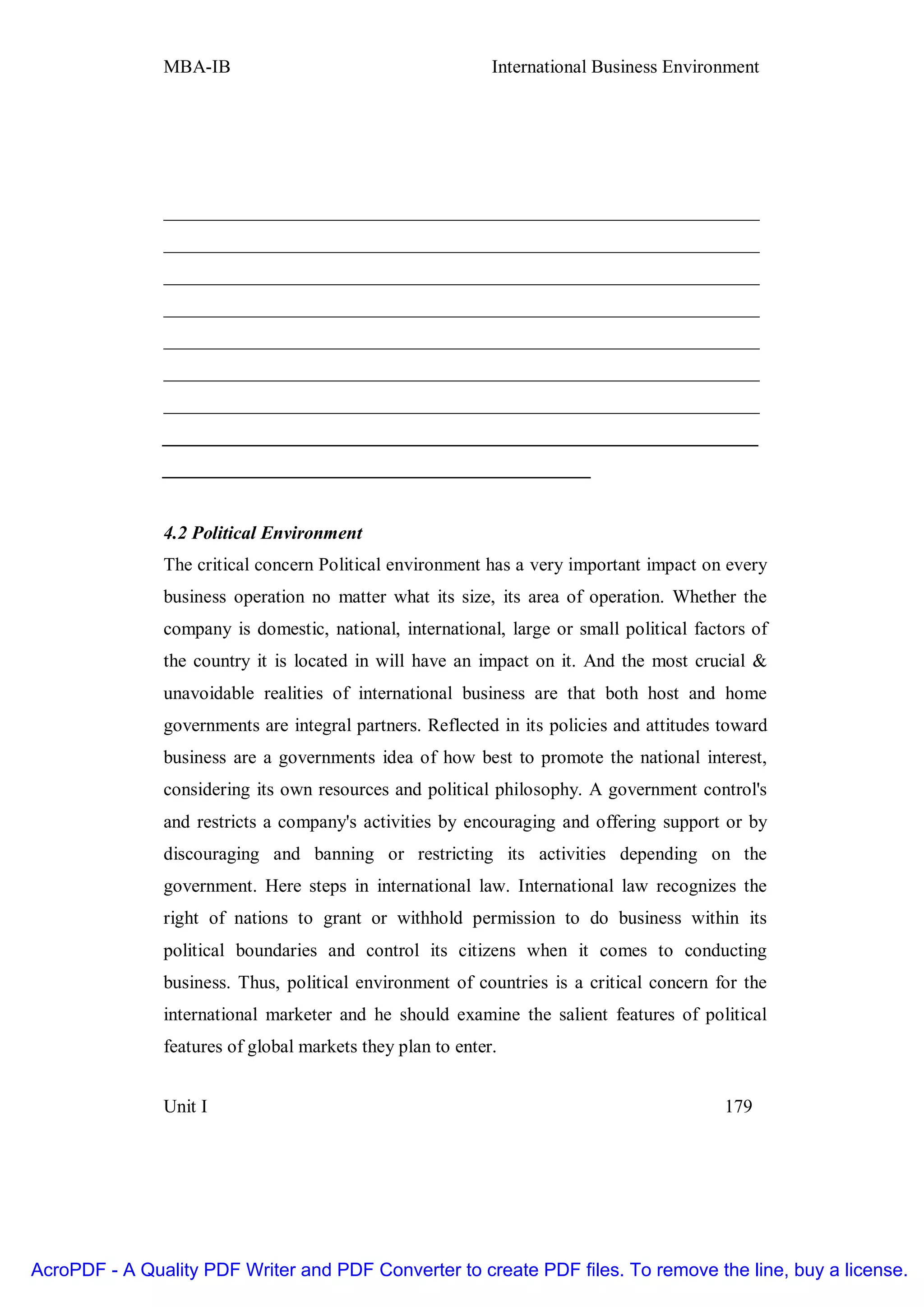





![MBA-IB International Business Environment
Basic ways government controls trade
Economic Rationales for Governmental Intervention
• Unemployment
• Protection of infant industry
• Using intervention to increase industrialization
• Economic relationships with other countries
Non-Economic Rationales for Governmental Intervention
• Maintaining essential industries
• "Unfriendly" countries
• Maintaining spheres of influence
• Preserving culture and national identity
4.2.7 Instruments used by government for trade control
Trade Restrictions / Trade Barriers
• Dumping
• Subsidies
• Countervailing Duties
• Tariffs
• Quotas
• VERs - Voluntary Export Restraints
Tariffs and the "Political Environment"
"The United Steelworkers union [in Canada] wants provincial governments to
lobby Ottawa to protect the country's steel industry now that federal officials
have decided against penalizing low-cost imports....A spokesperson for Finance
Minister John Manley confirmed yesterday that the government had decided
against imposing tariffs on steel imports"
Canadian Press (as quoted by the Toronto Star 2003 Oct 7th) reported
Unit I 185
AcroPDF - A Quality PDF Writer and PDF Converter to create PDF files. To remove the line, buy a license.](https://image.slidesharecdn.com/international-business-environment-1220943187483599-81-110623200655-phpapp01/75/International-business-environment-1220943187483599-8-1-185-2048.jpg)
![MBA-IB International Business Environment
This is a part of the "Political Environment" because if the Steelworkers do not
get tariffs they may go on strike, or they may work to make sure the local
Member of Parliament is not re-elected in that constituency. If the governing
party [in the case the liberals] really needs to hold that constituency they may
give in
Non-Tariff Barriers
• Subsidies
• Aid (loans and grants)
• Customs valuation
• Quotas
• "Buy national" policies
• Standards
• Trade sanctions
The WTO Initiative
The WTO has become increasingly involved in dealing with the "challenging"
area of non-tariff barriers. It is challenging because more and more countries are
trying to show they will abide by bi-lateral and multi-lateral trade agreements so
they cut tariffs - but at the same time, domestic political pressure cause the
politicians to think of ways they can erect non-tariff barriers to still keep out
lower priced foreign products, so that domestic industries can still sell
competitively to their citizens.
Unit I 186
AcroPDF - A Quality PDF Writer and PDF Converter to create PDF files. To remove the line, buy a license.](https://image.slidesharecdn.com/international-business-environment-1220943187483599-81-110623200655-phpapp01/75/International-business-environment-1220943187483599-8-1-186-2048.jpg)





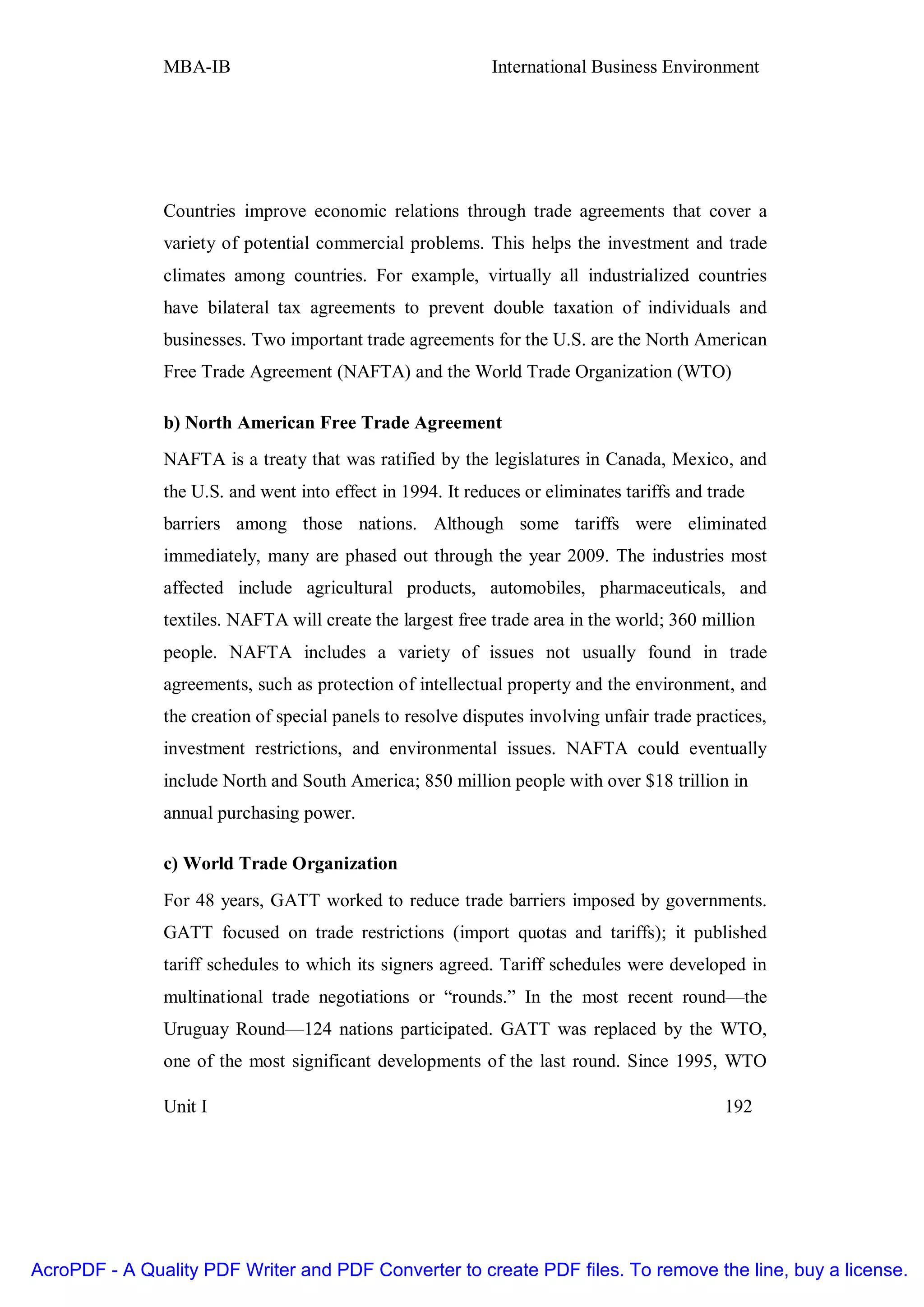
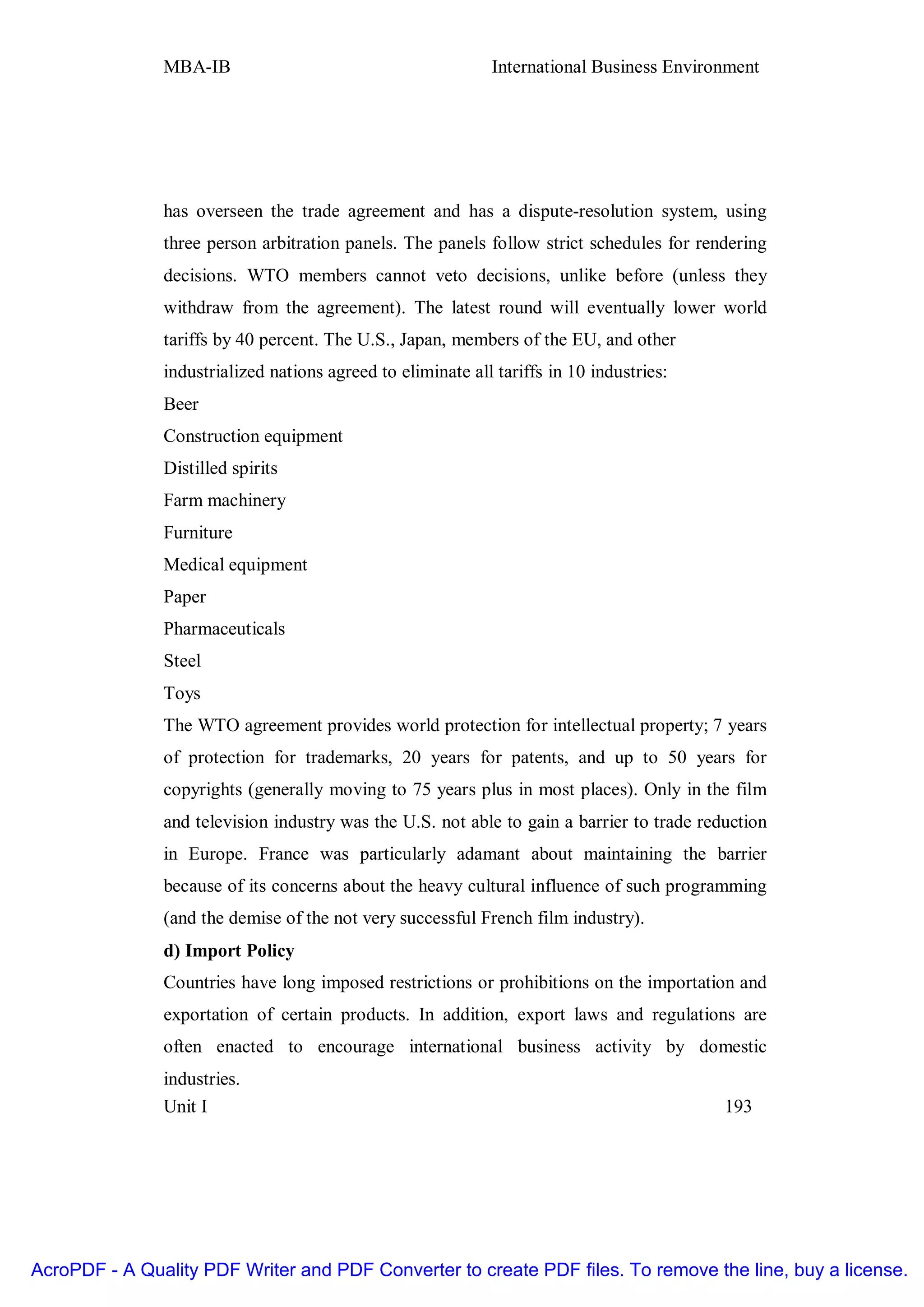






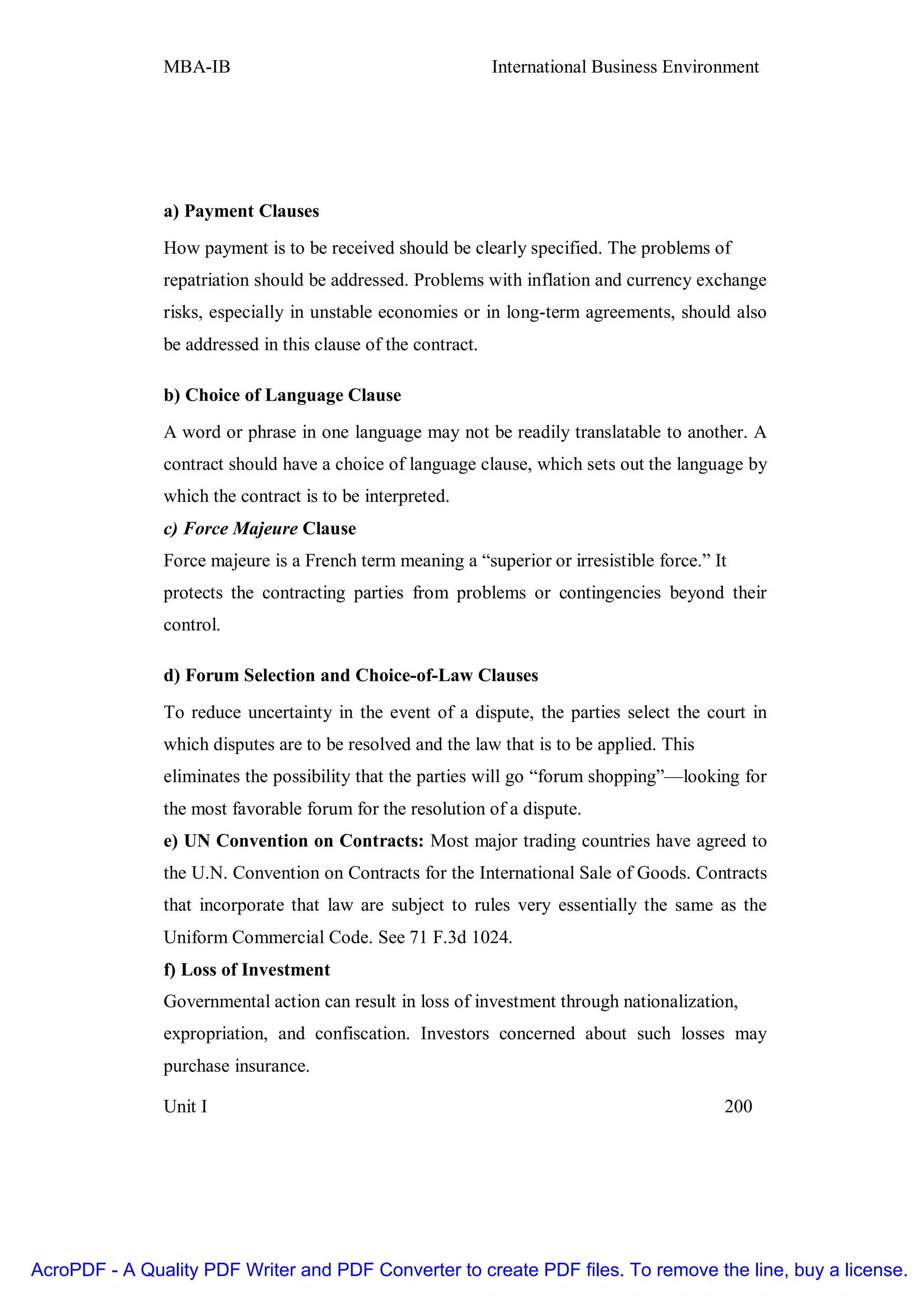
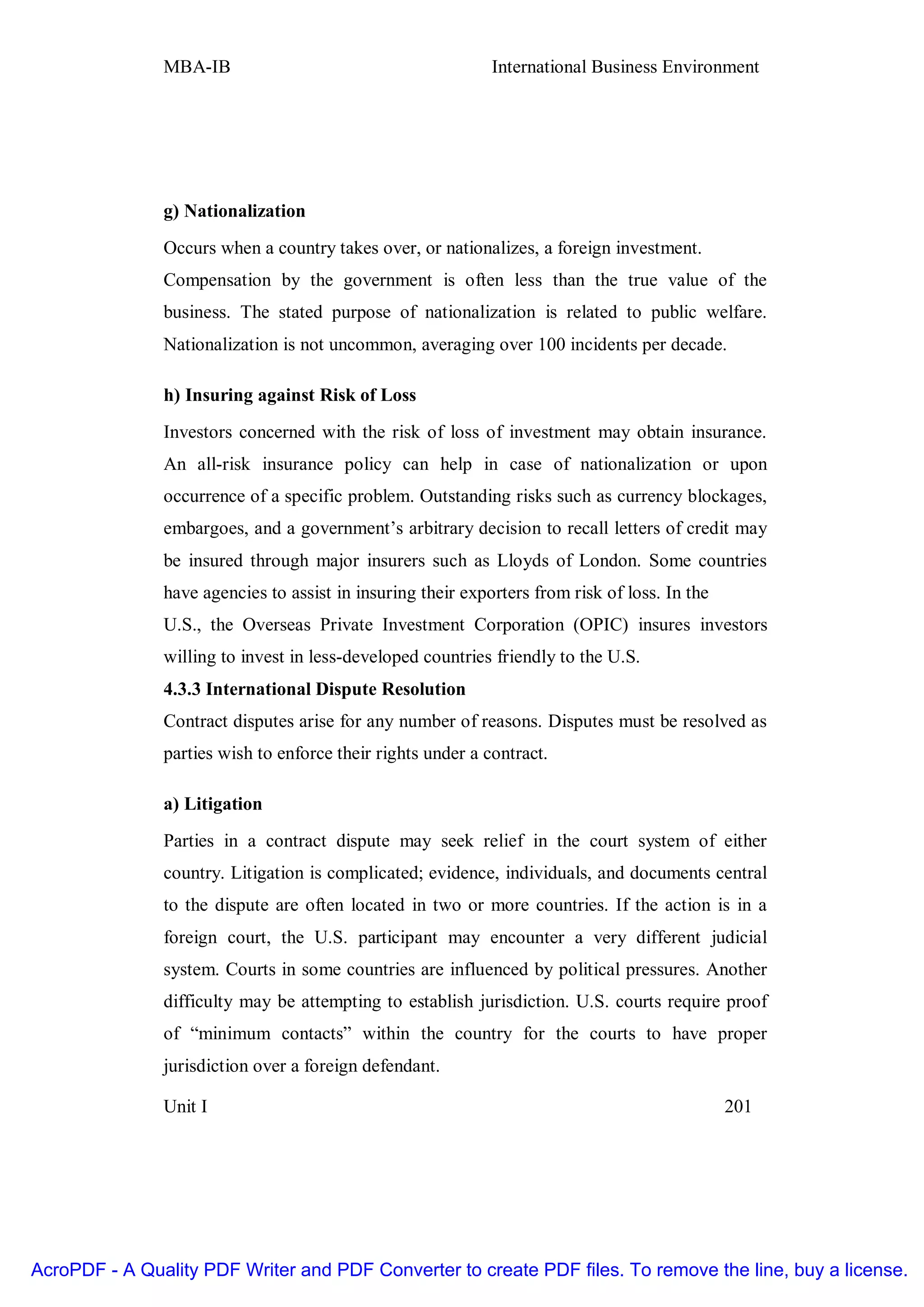



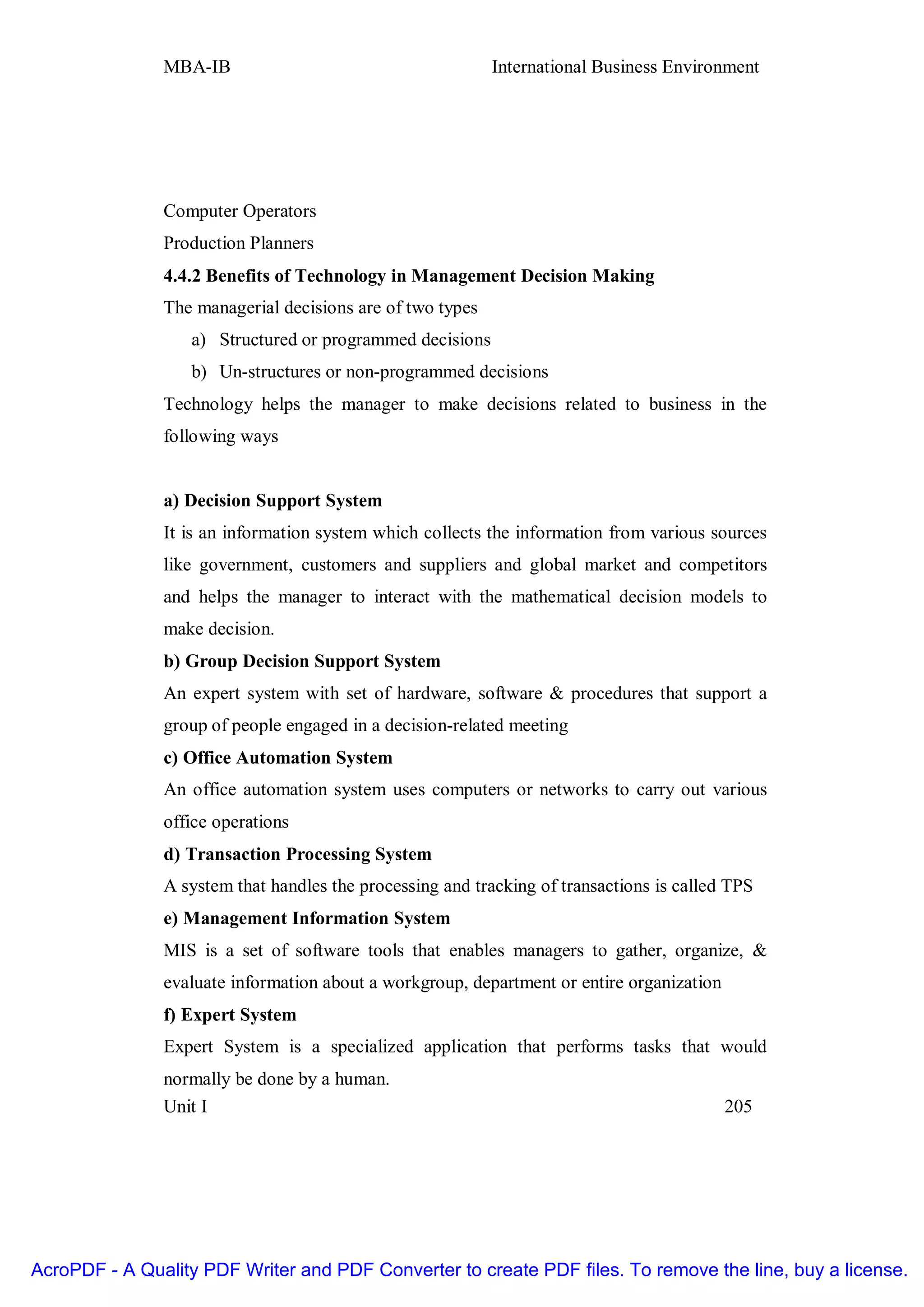

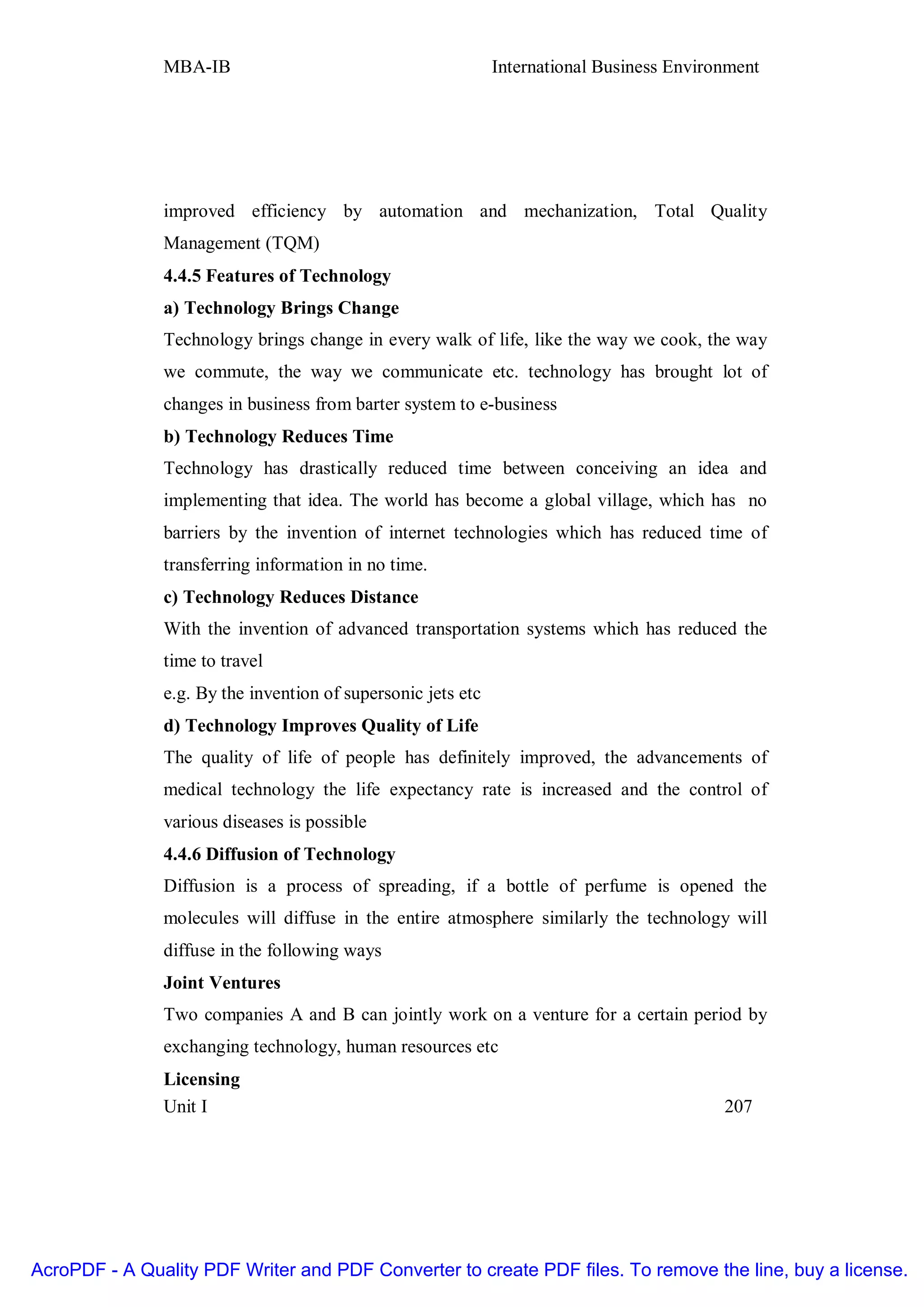


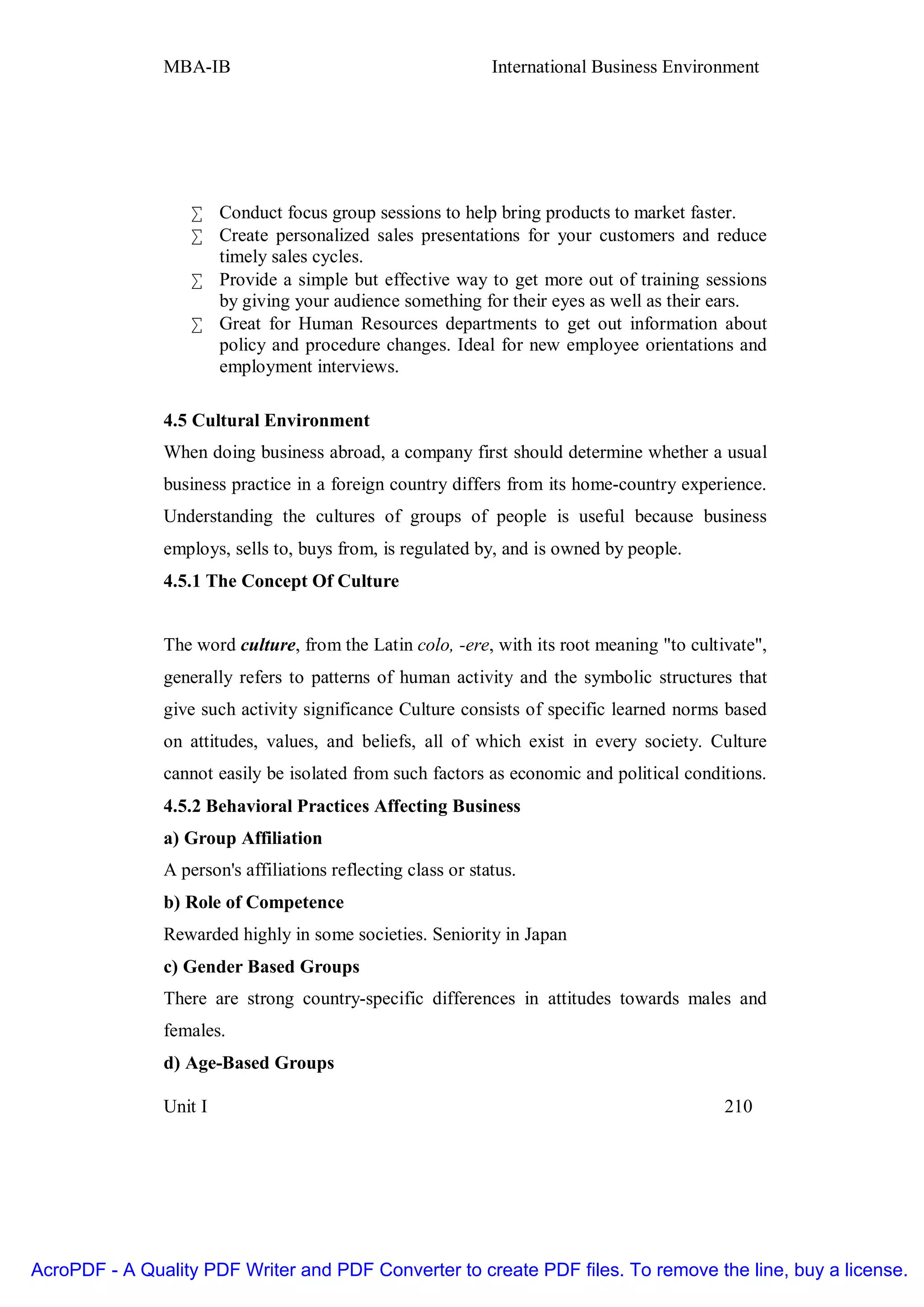


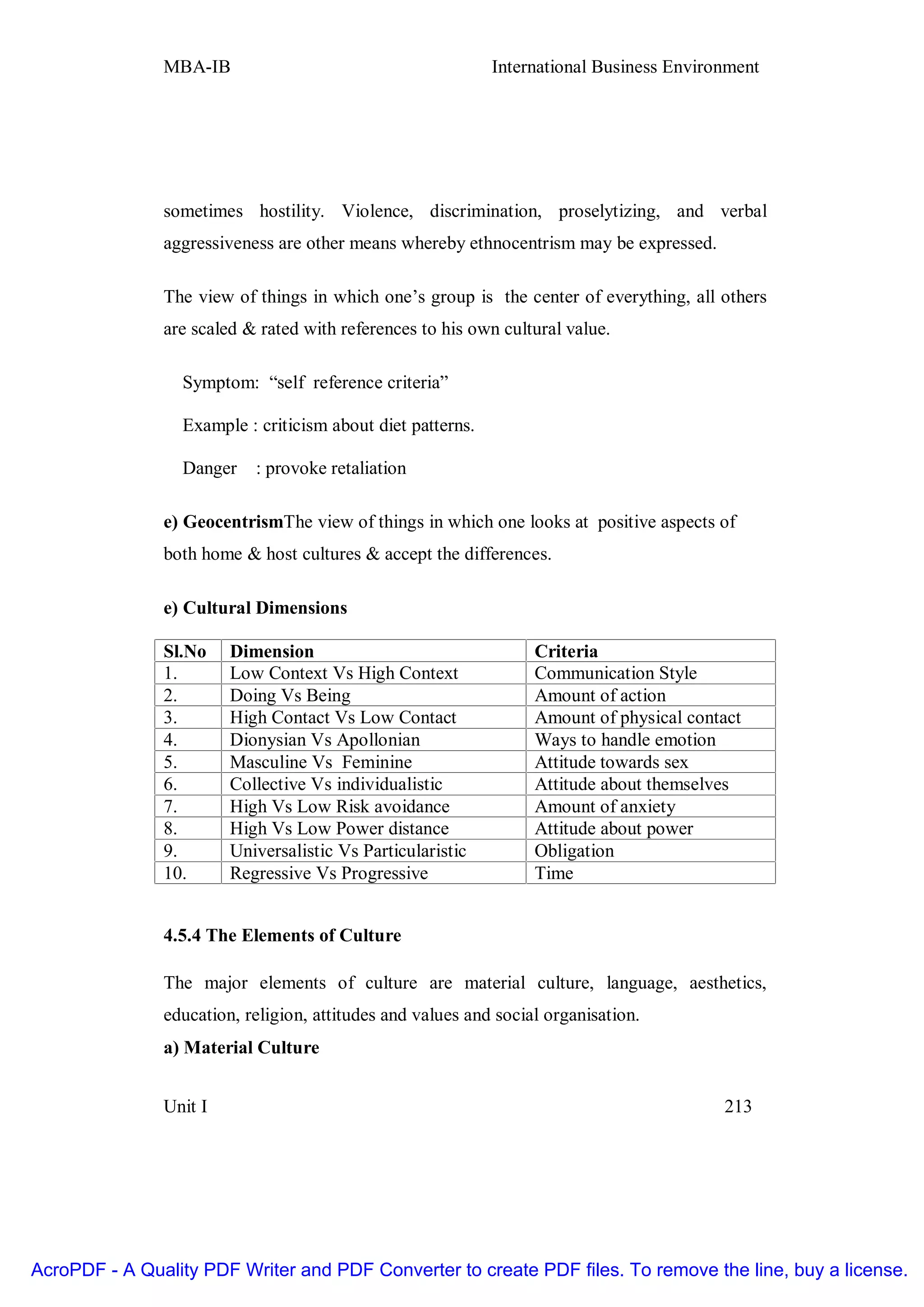

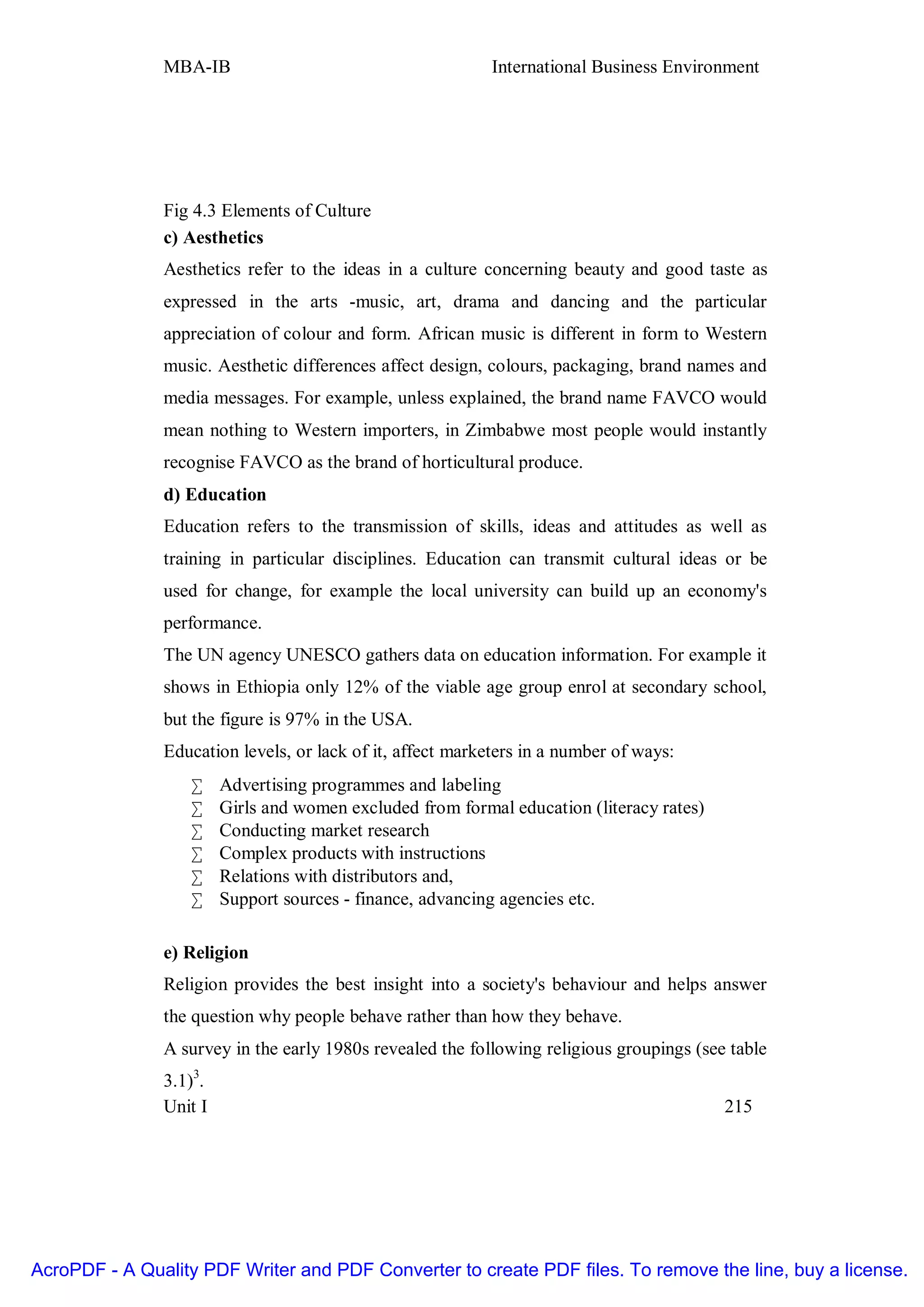

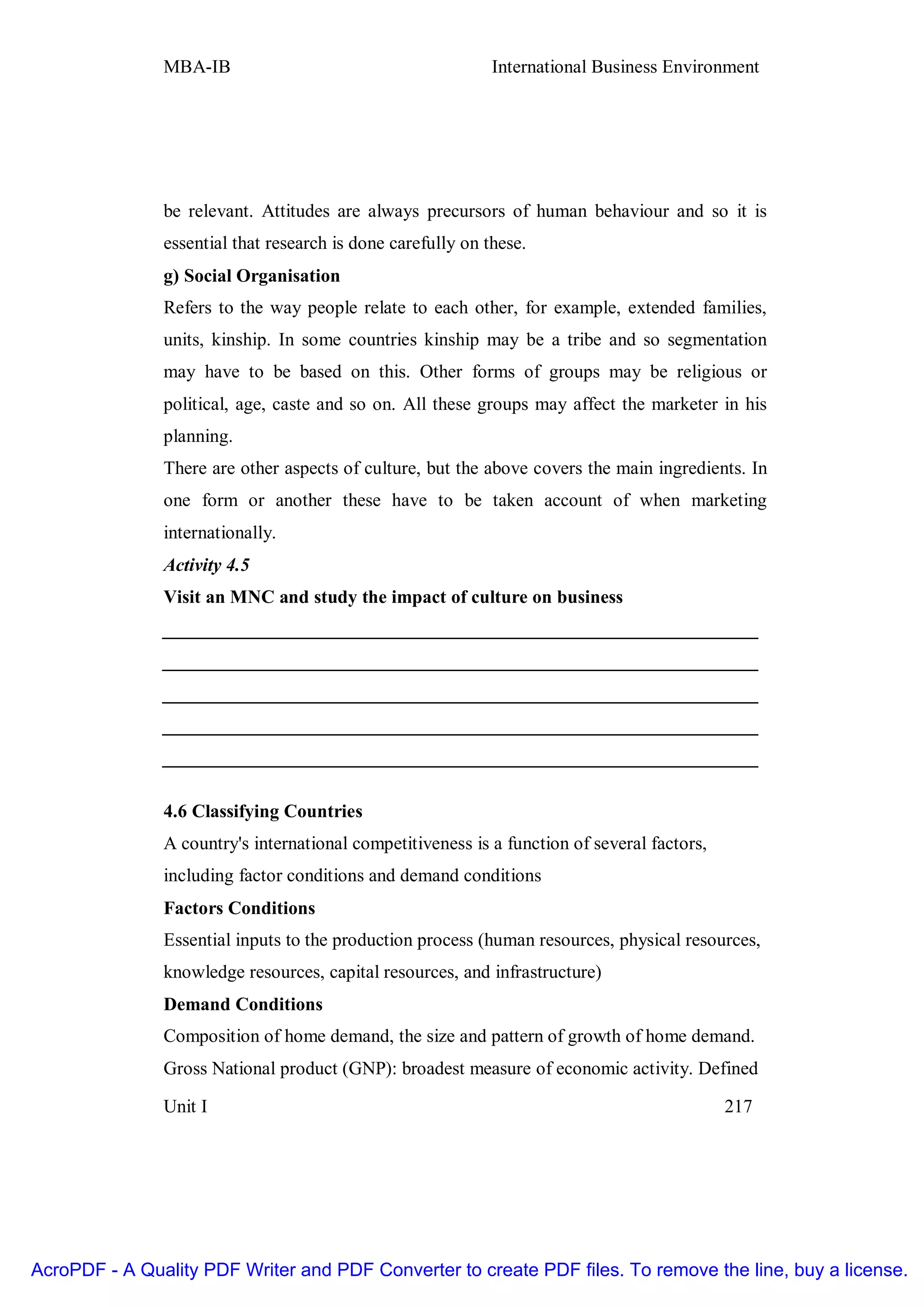


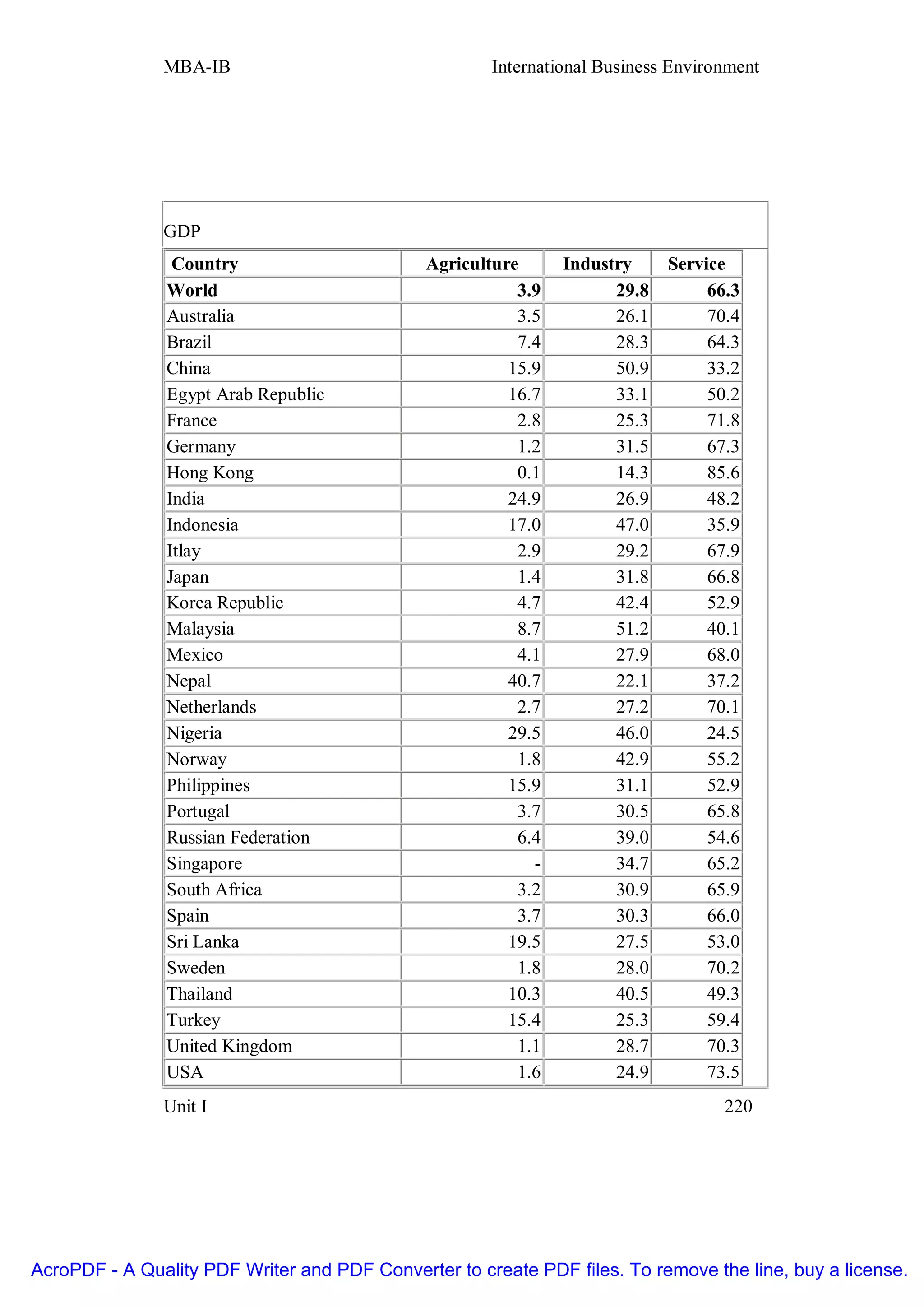



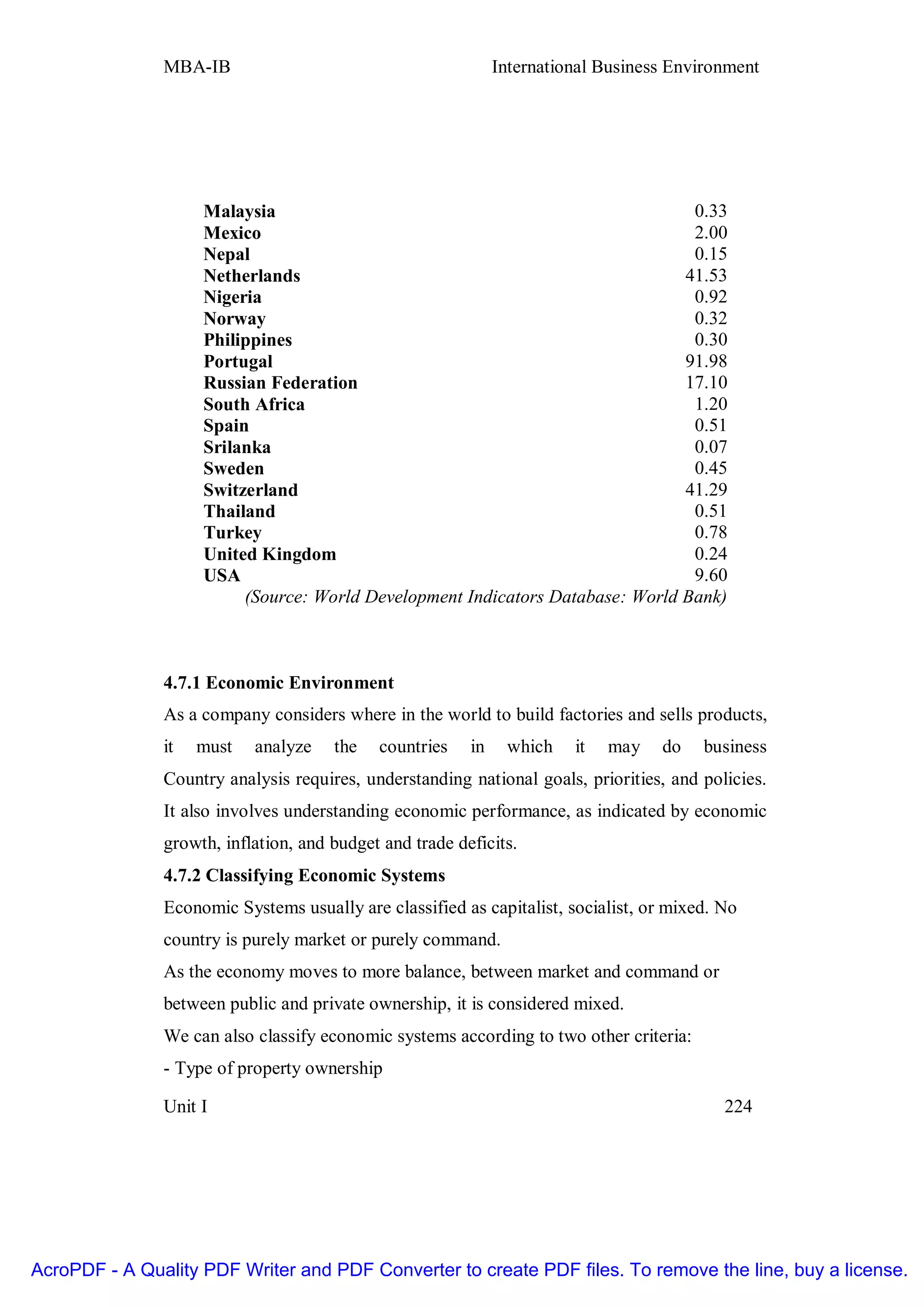
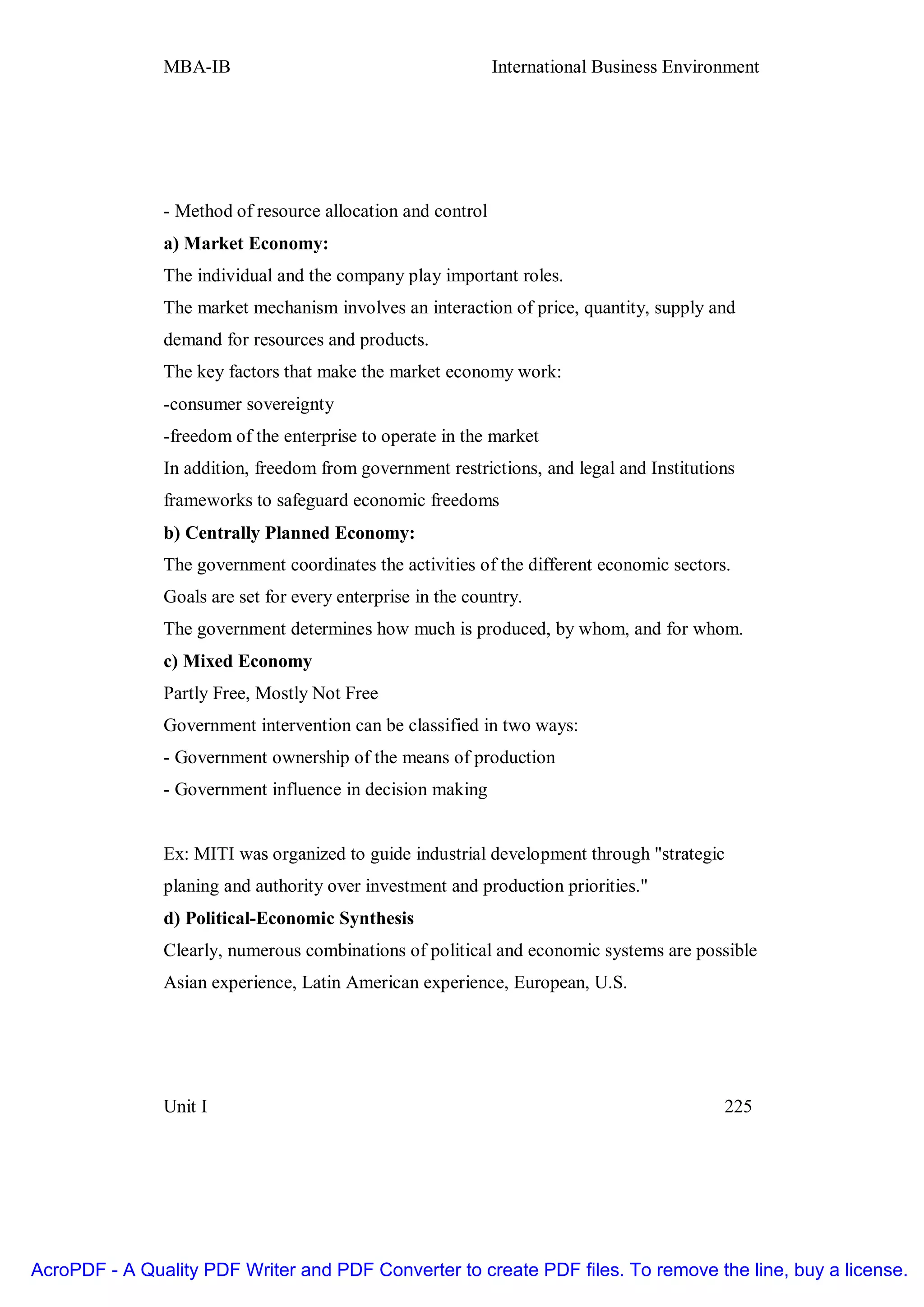



![MBA-IB International Business Environment
on how governments can or cannot react to dumping — it disciplines anti-
dumping actions, and it is often called the “Anti-dumping Agreement”.
Legal Framework
Based on Article VI of GATT 1994
Customs Tariff Act, 1975 - Sec 9A, 9B (as amended in1995)
Anti-Dumping Rules [Customs Tariff (Identification, Assessment and Collection
of Anti Dumping Duty on Dumped Articles and for Determination of Injury)
Rules,1995] Investigations and Recommendations by Designated
Authority, Ministry of Commerce Imposition and Collection by Ministry of
Finance
b) Subsidies
In economics, a subsidy is generally a monetary grant given by government to
lower the price faced by producers or consumers of a good, generally because it
is considered to be in the public interest. Subsidies are also referred to as
corporate welfare by those who oppose their use. The term subsidy may also
refer to assistance granted by others, such as individuals or non-government
institutions, although this is more usually described as charity. A subsidy
normally exemplifies the opposite of a tax, but can also be given using a
reduction of the tax burden. These kinds of subsidies are generally called tax
expenditures or tax breaks.
Subsidies protect the consumer from paying the full price of the good consumed,
however they also prevent the consumer from receiving the full value of the
thing not consumed – in that sense, a subsidized society is a consumption
society because it unfairly encourages consumption more than conservation.
Under free-market conditions, consumers would make choices which optimize
the value of their transactions; where it was less expensive to conserve, they
would conserve. In a subsidized economy however, consumers are denied the
Unit I 229
AcroPDF - A Quality PDF Writer and PDF Converter to create PDF files. To remove the line, buy a license.](https://image.slidesharecdn.com/international-business-environment-1220943187483599-81-110623200655-phpapp01/75/International-business-environment-1220943187483599-8-1-229-2048.jpg)




